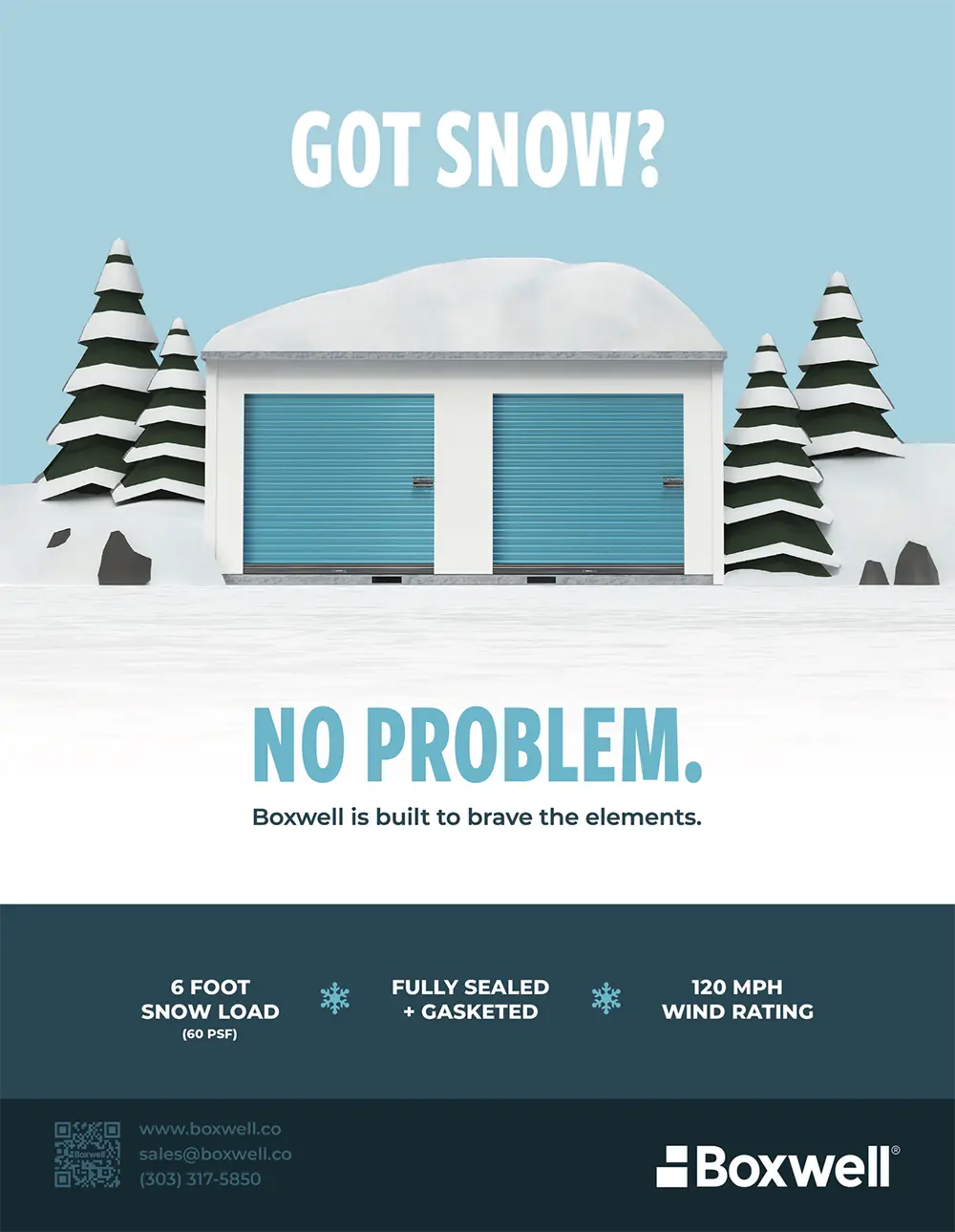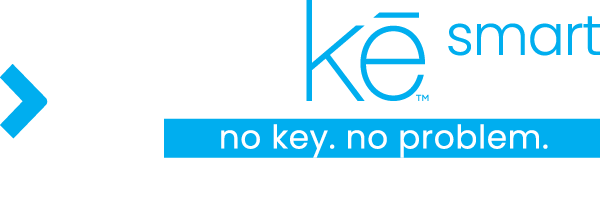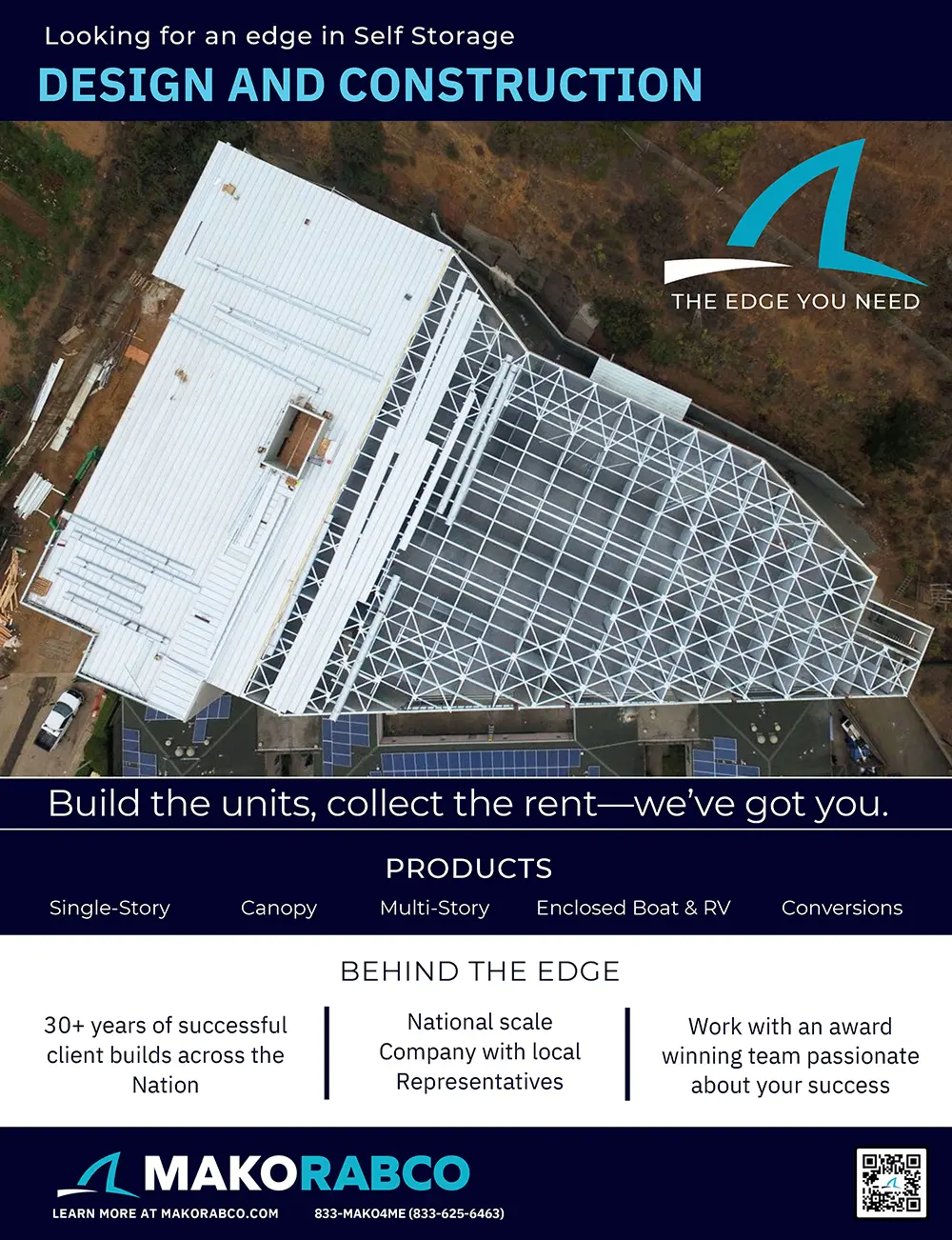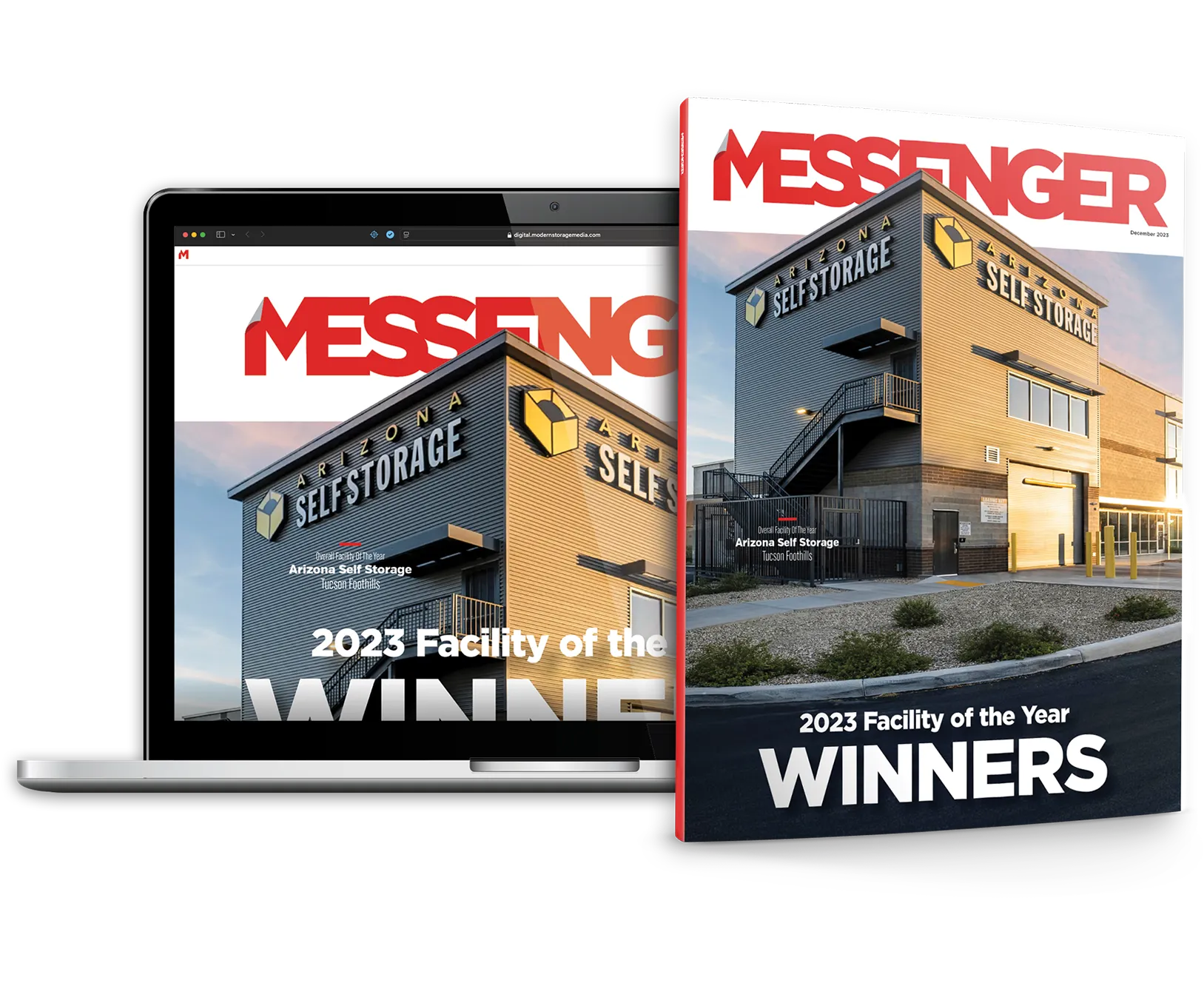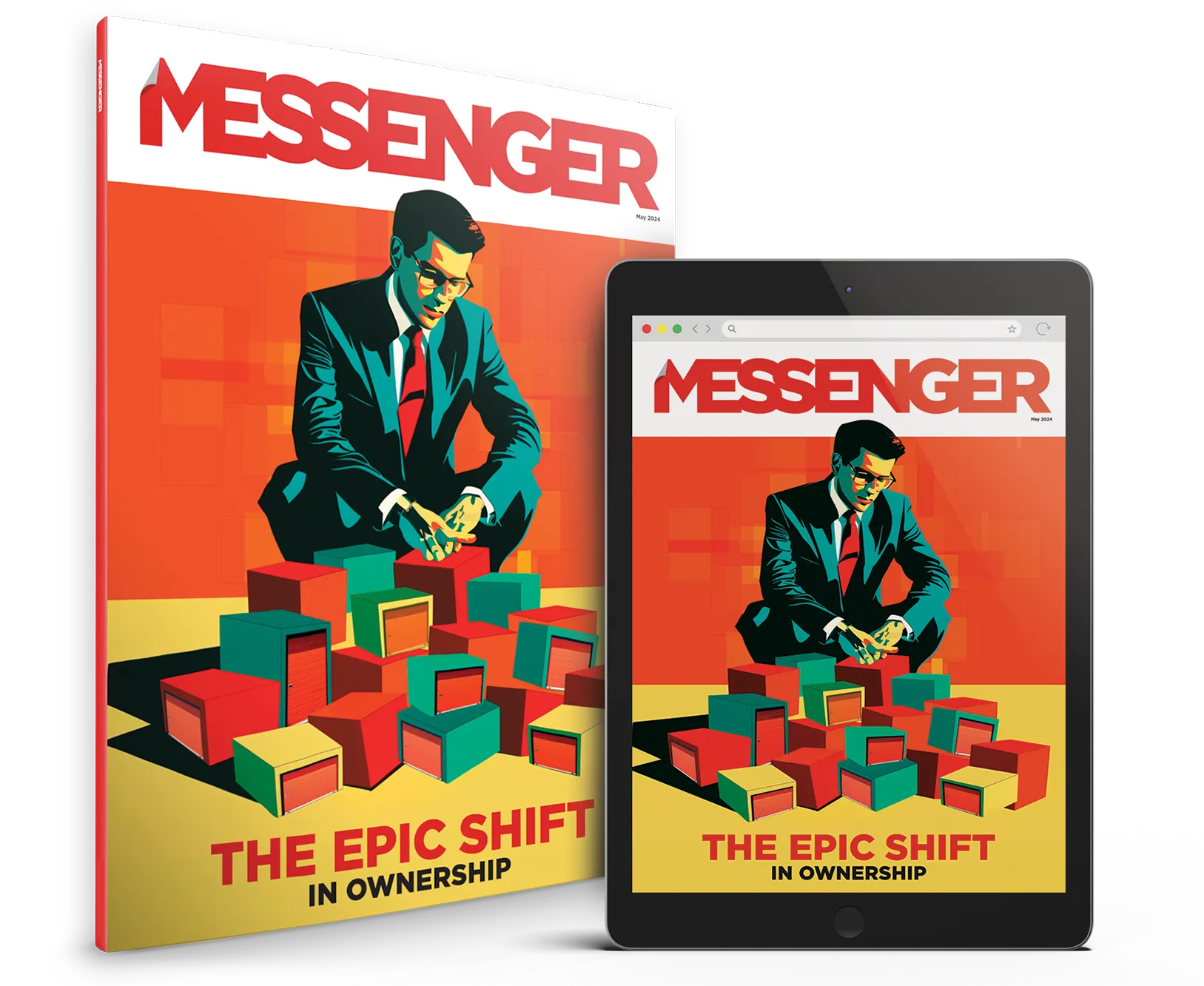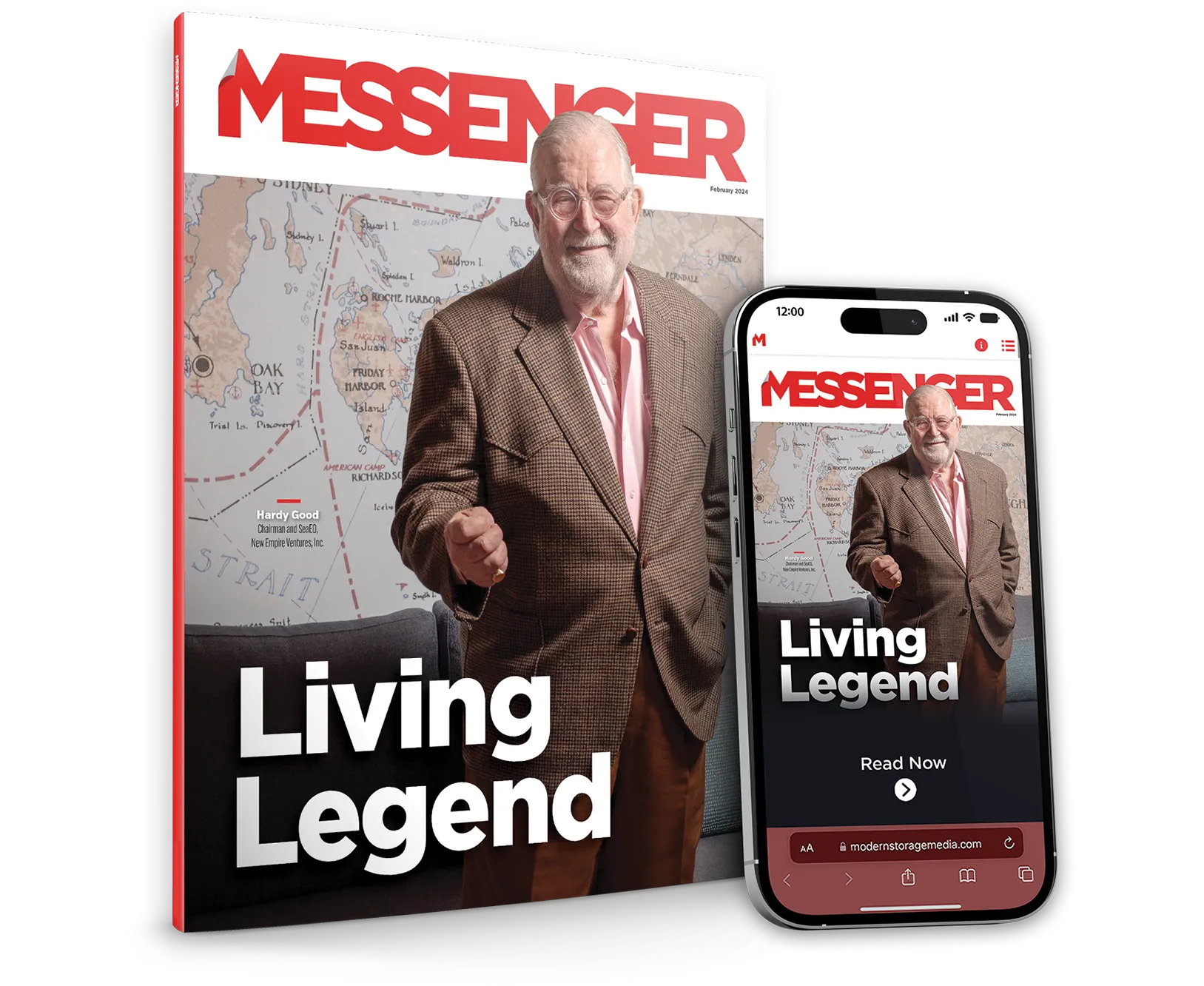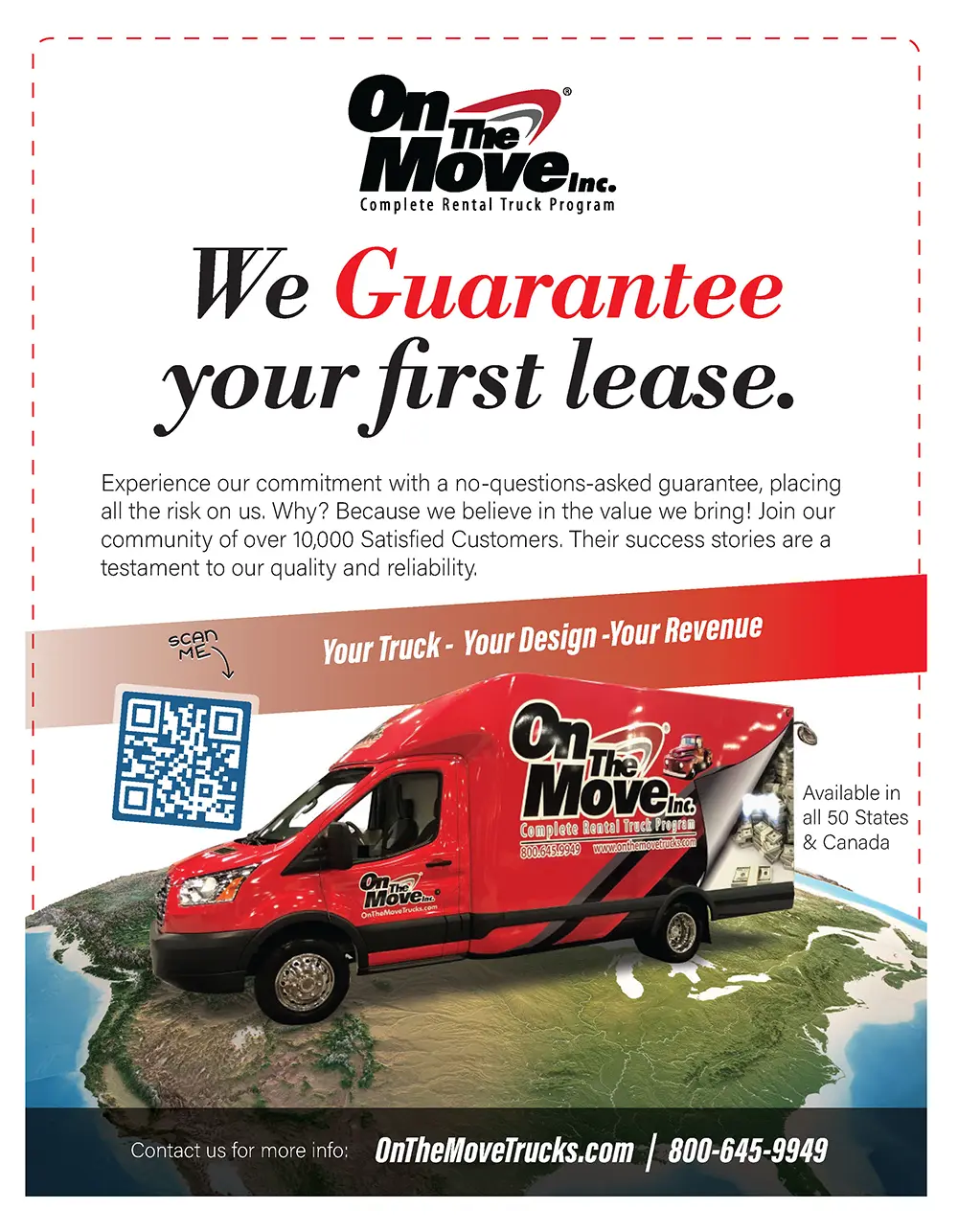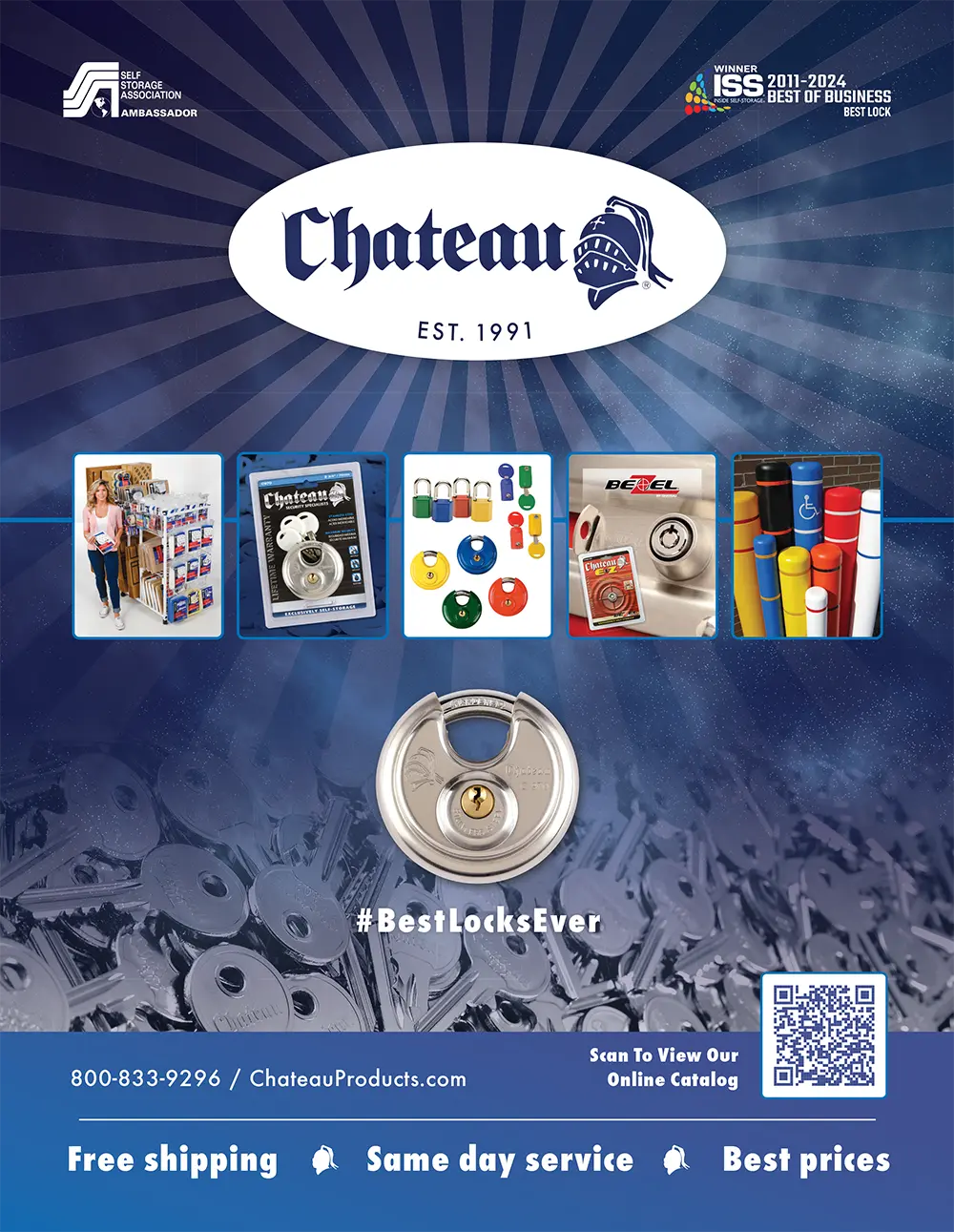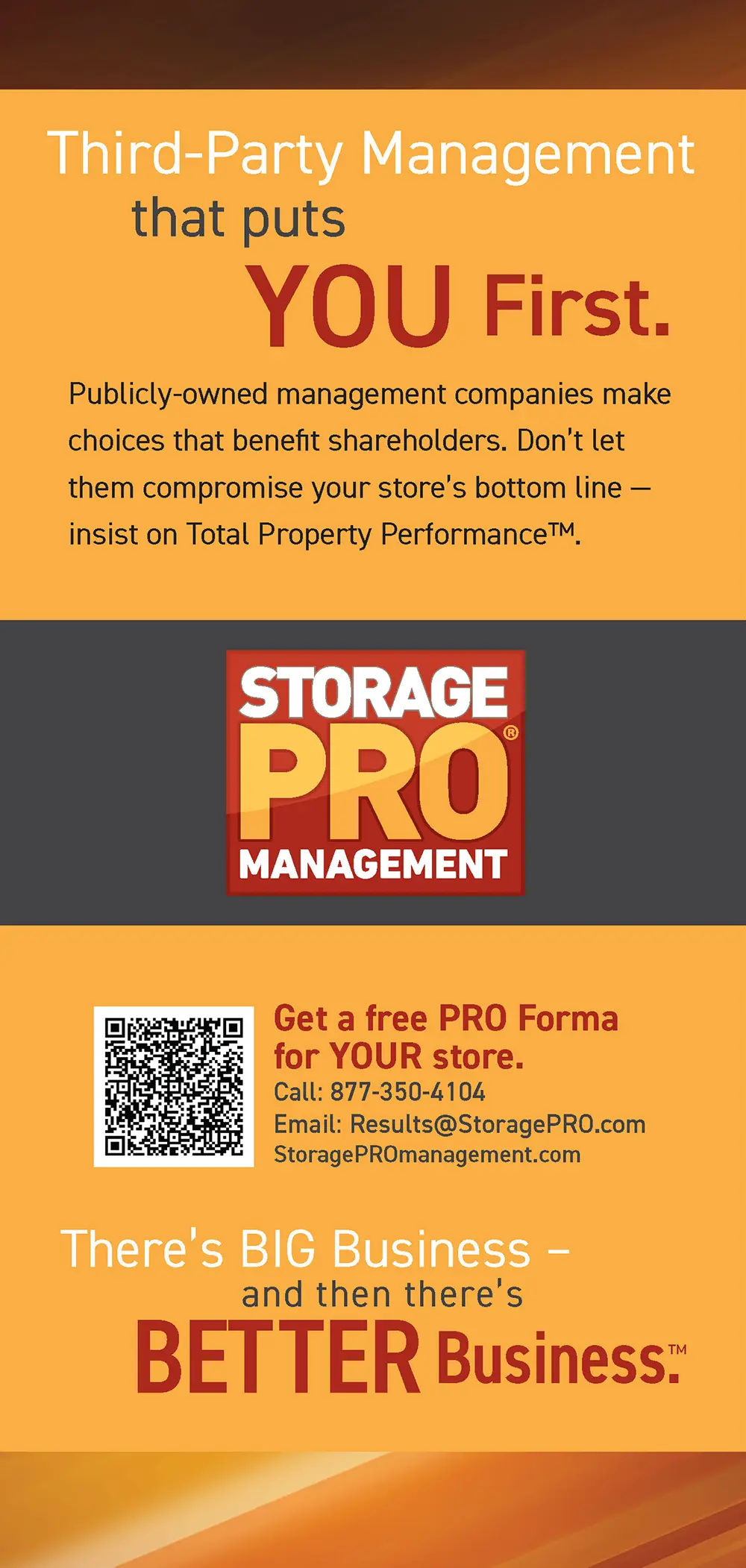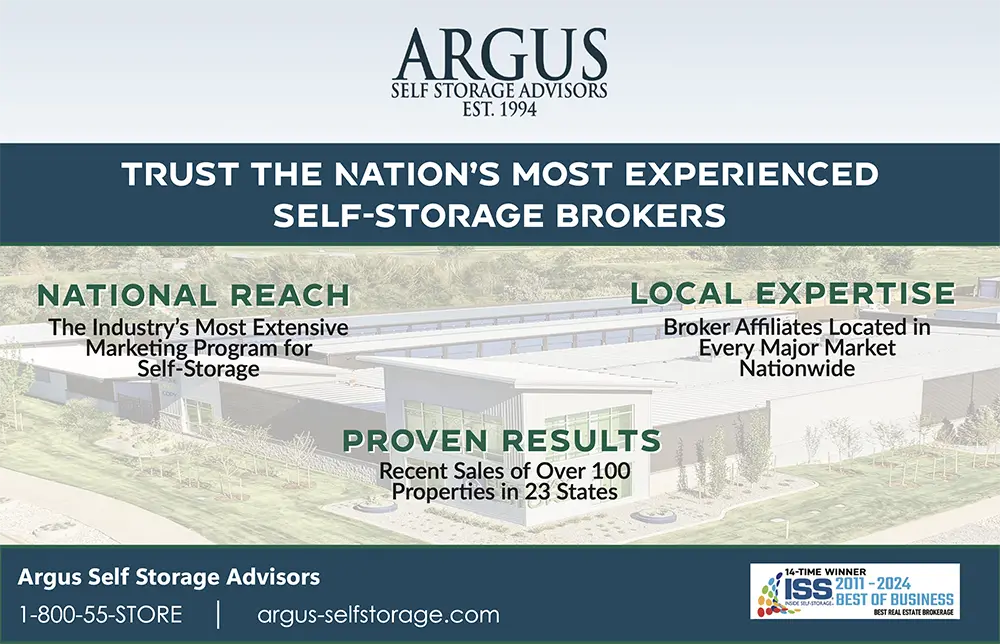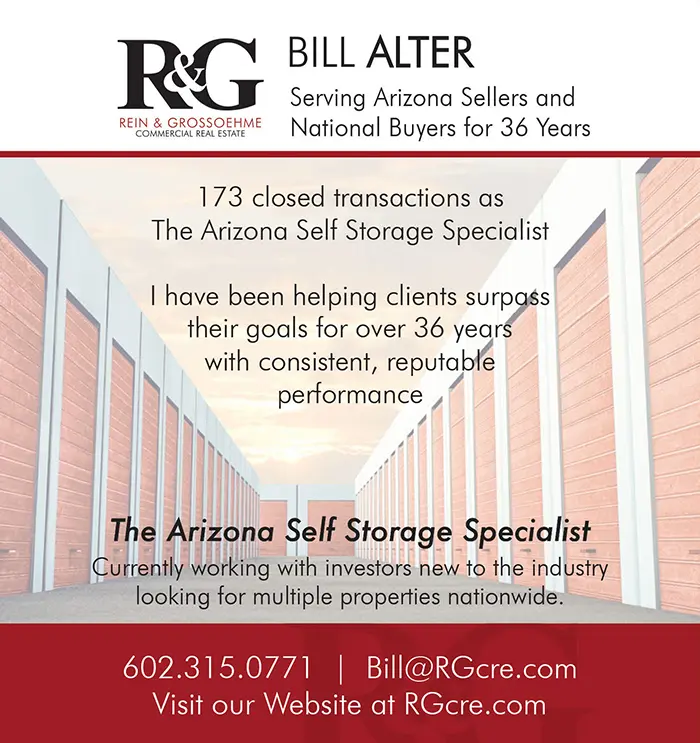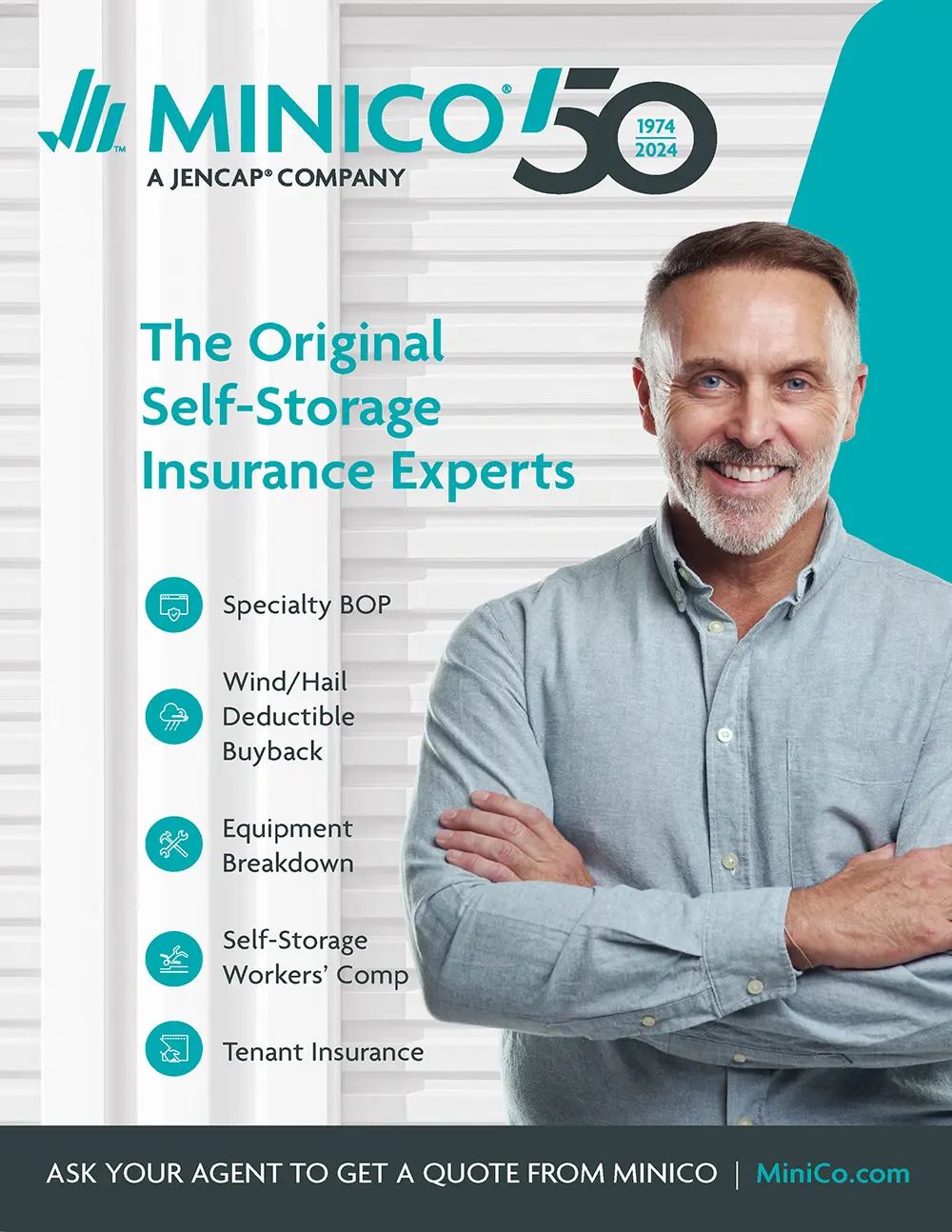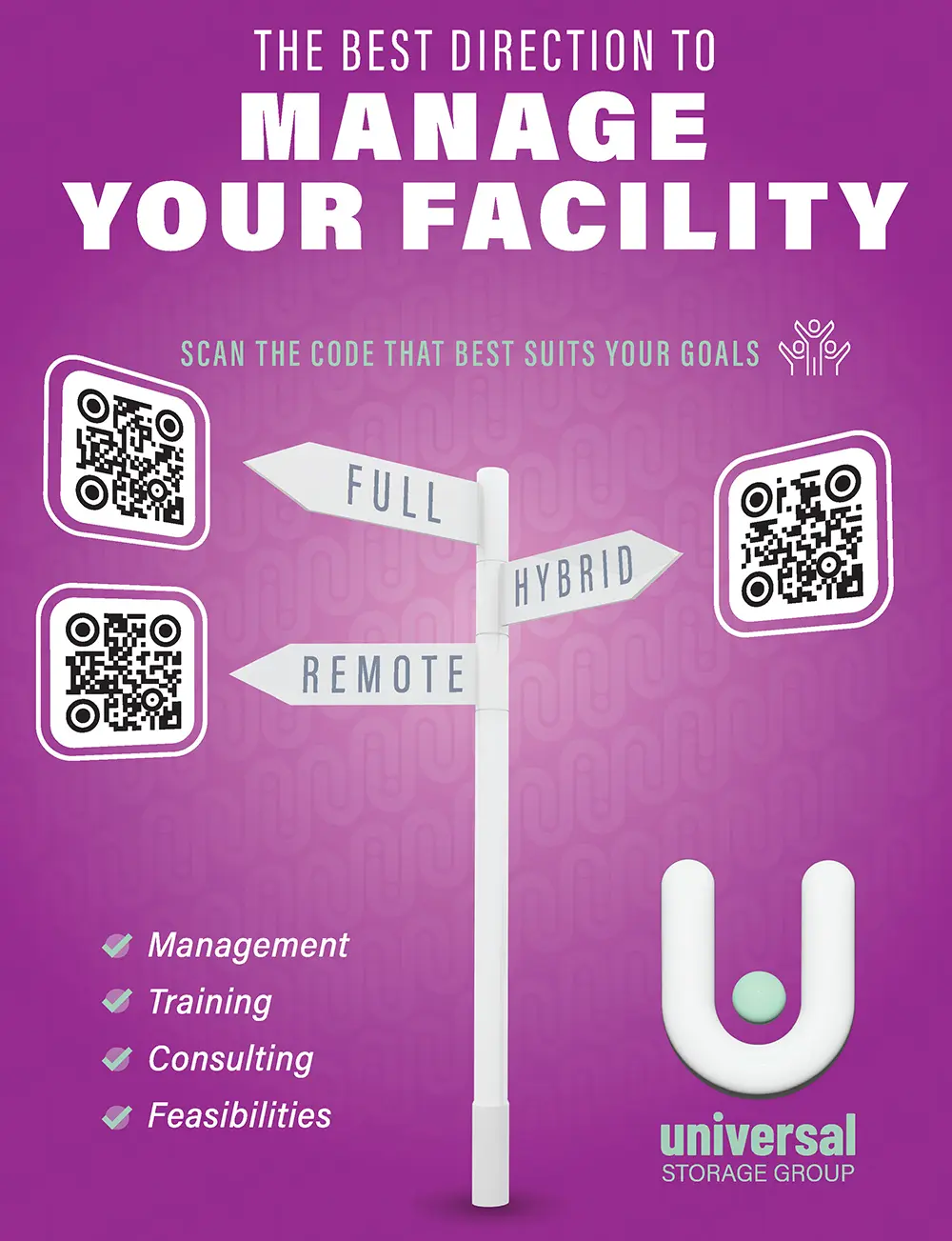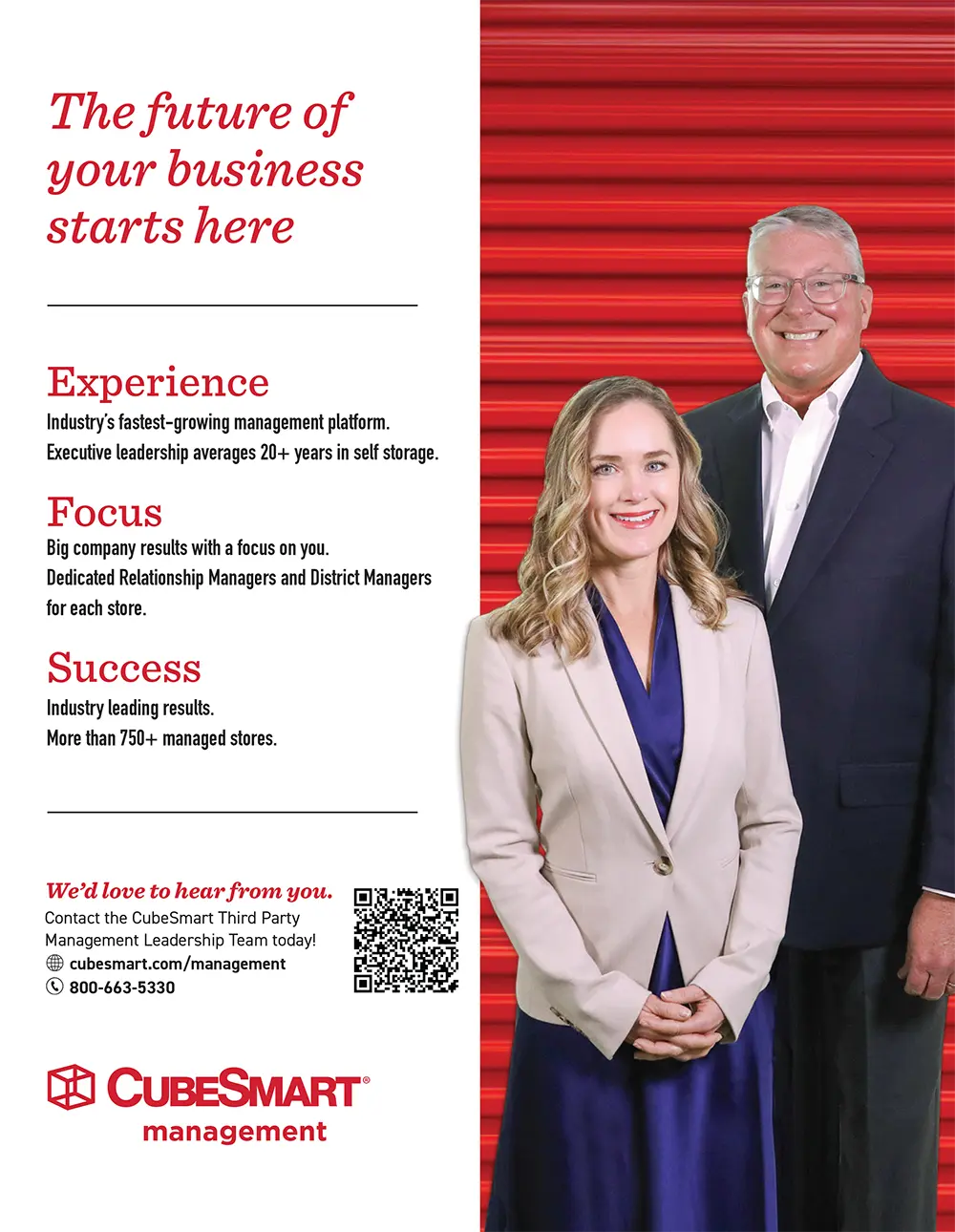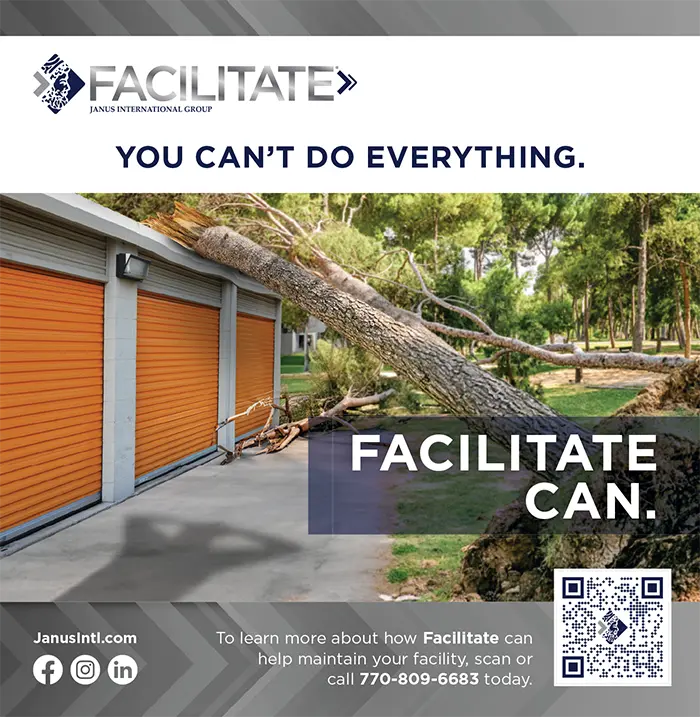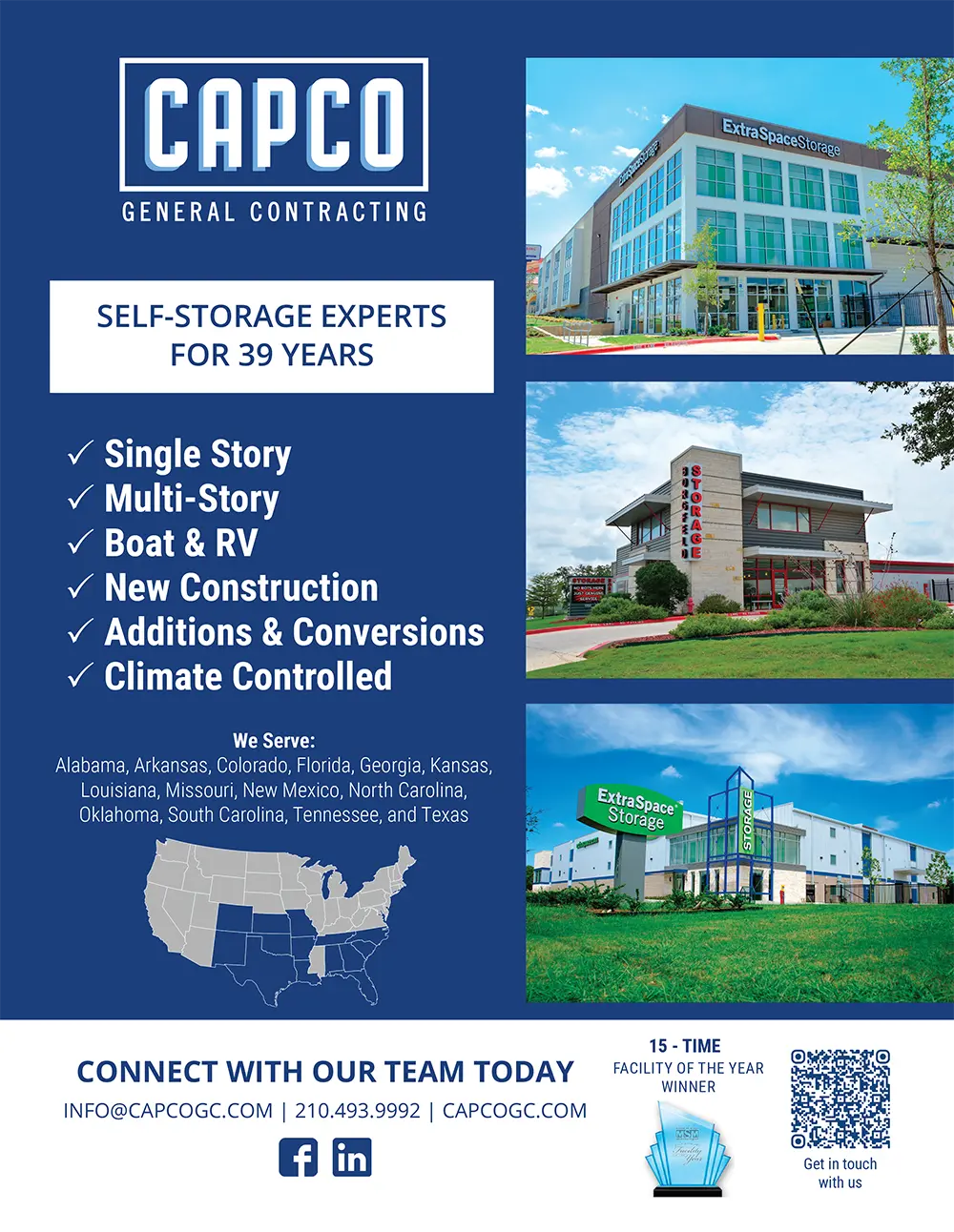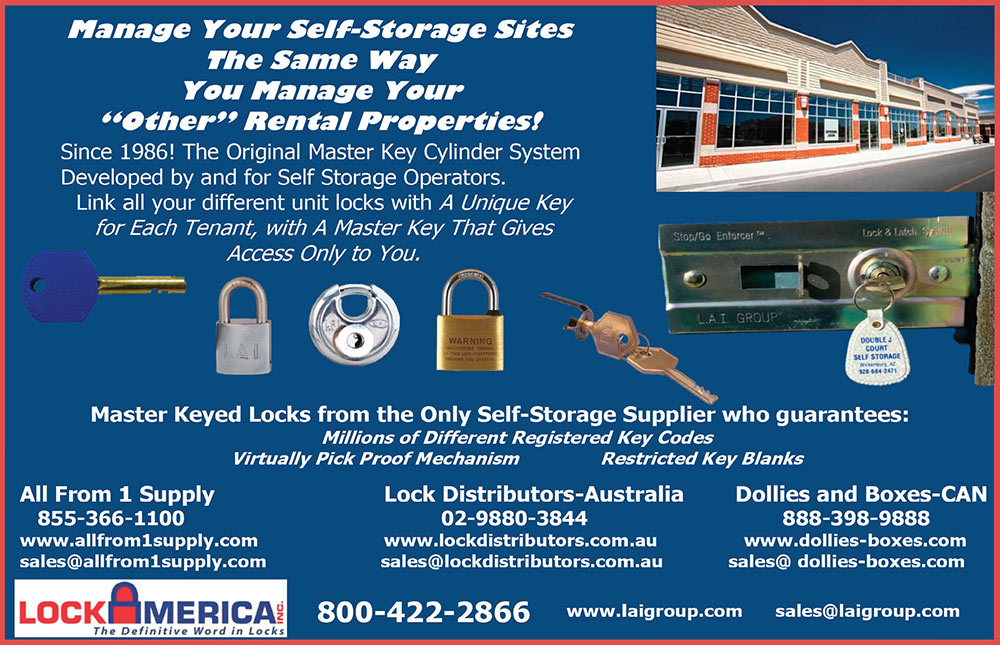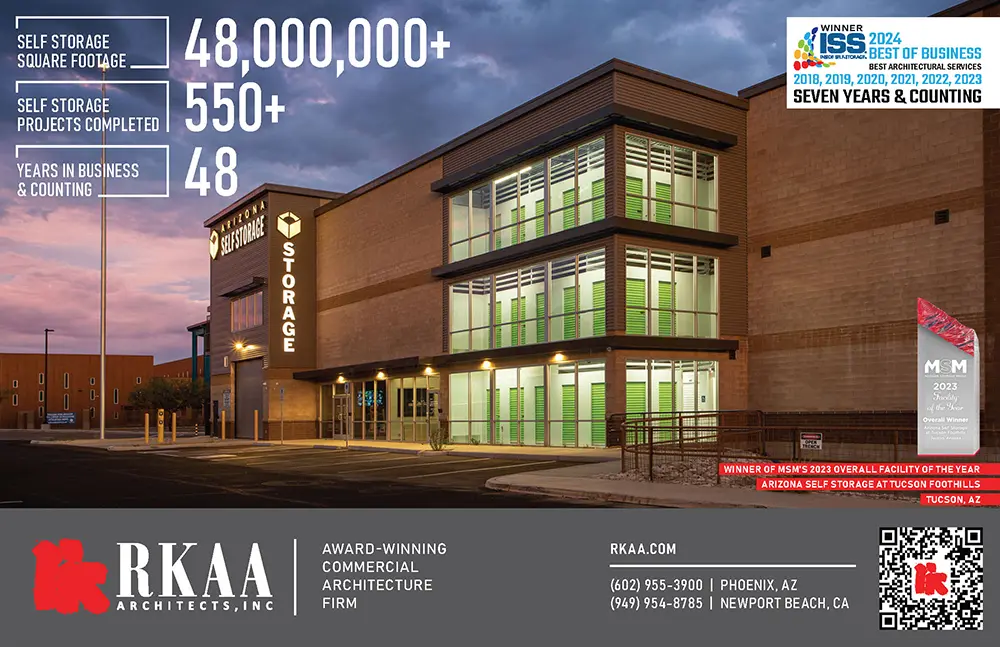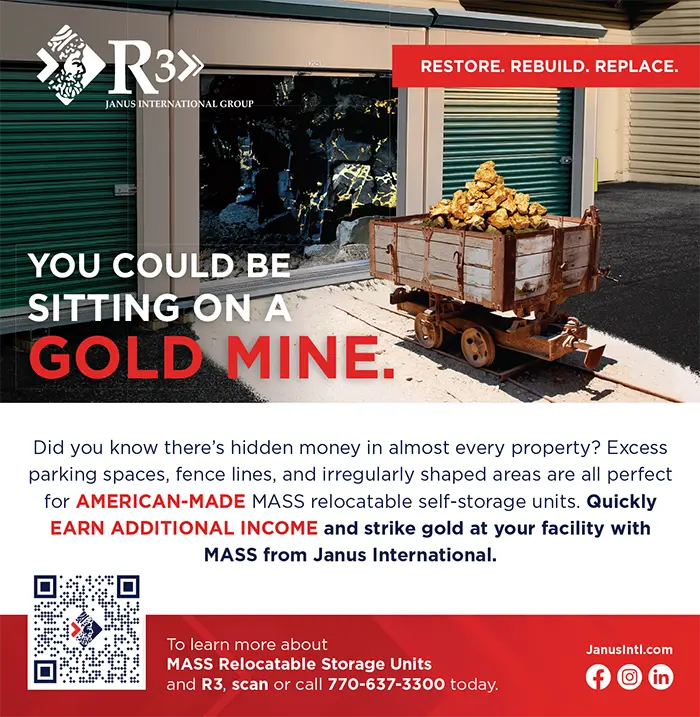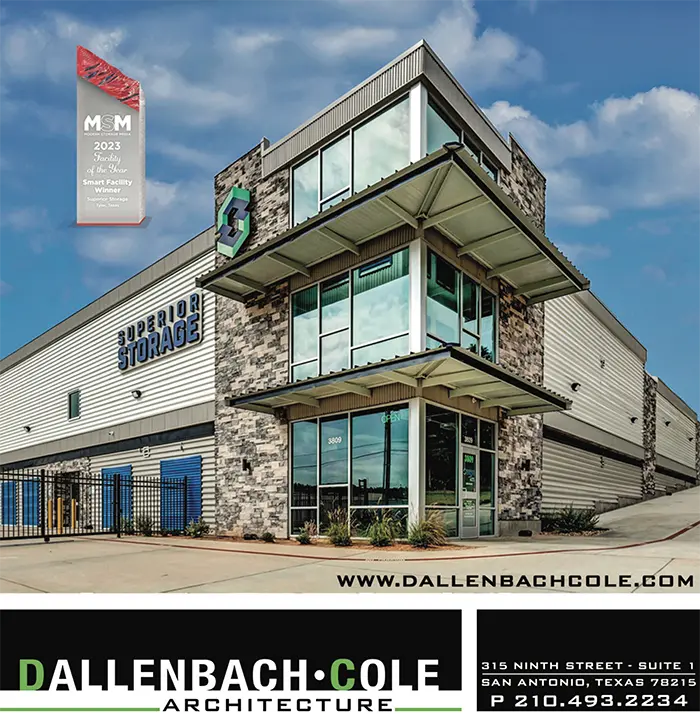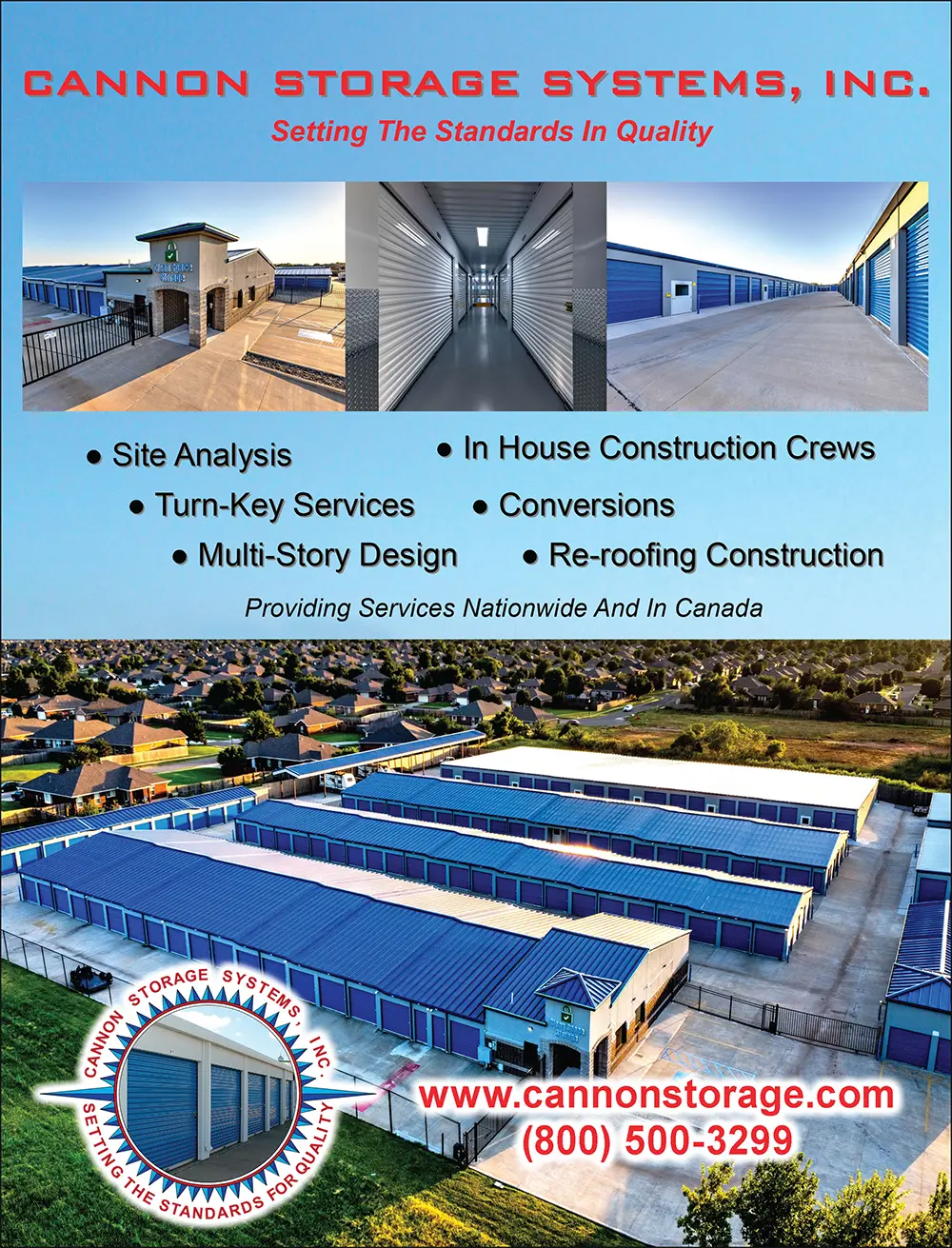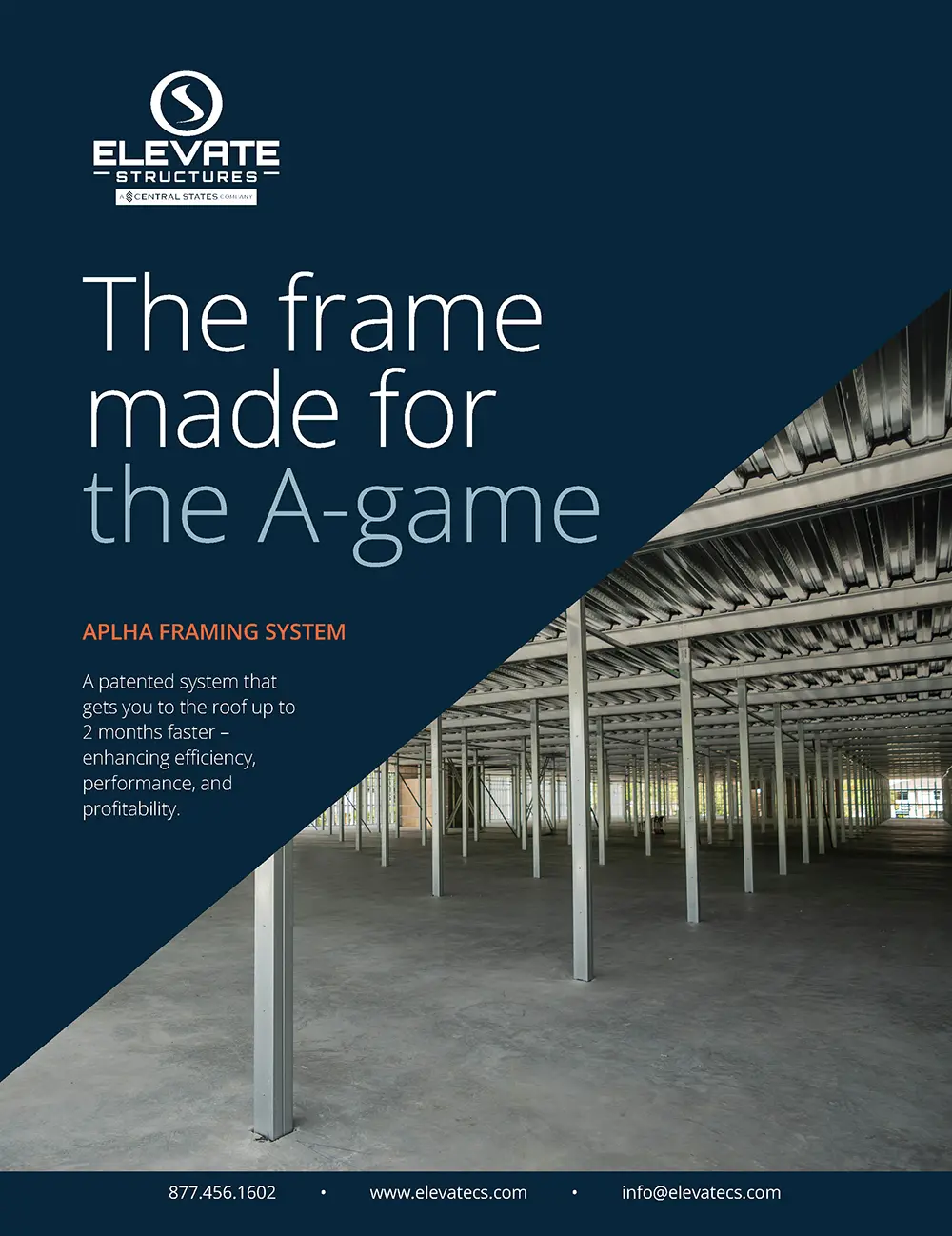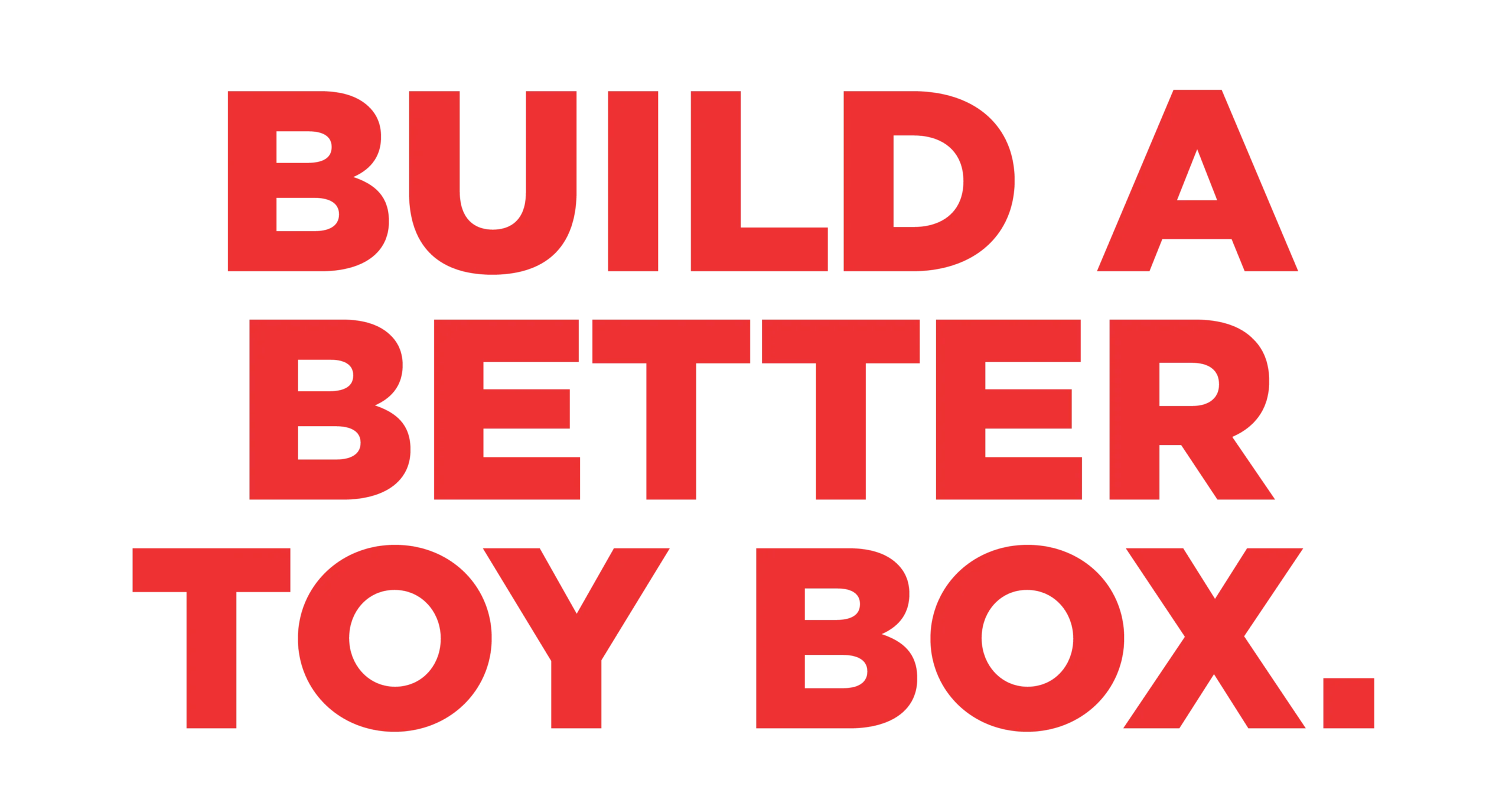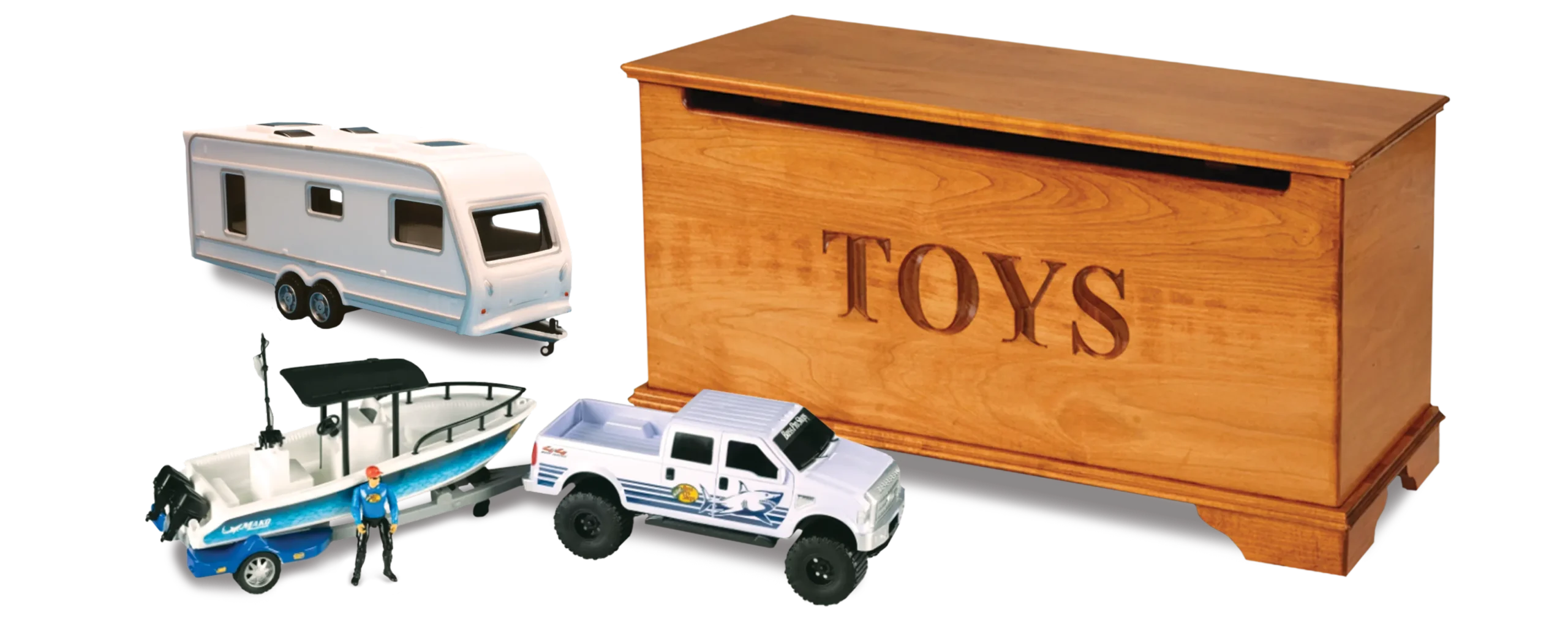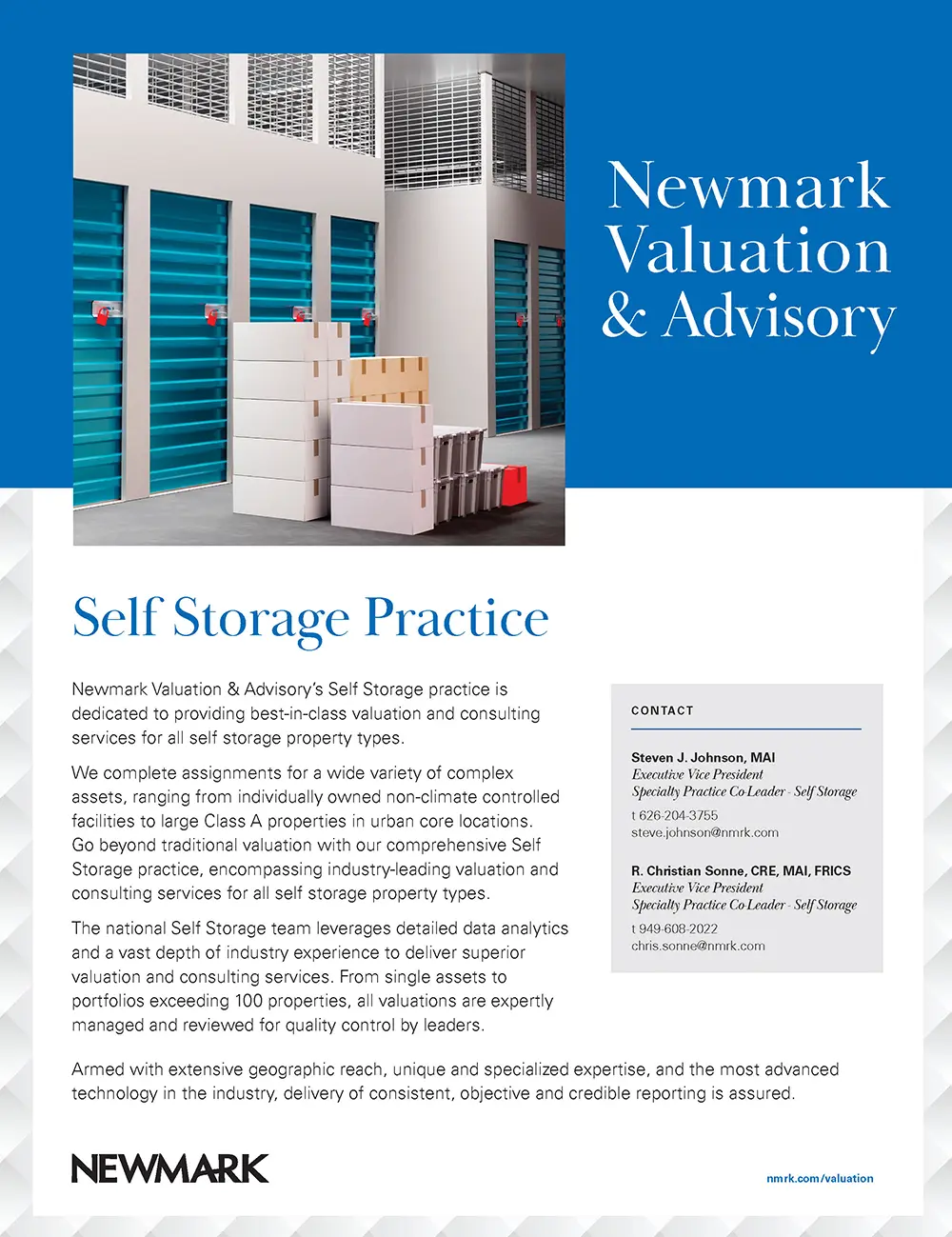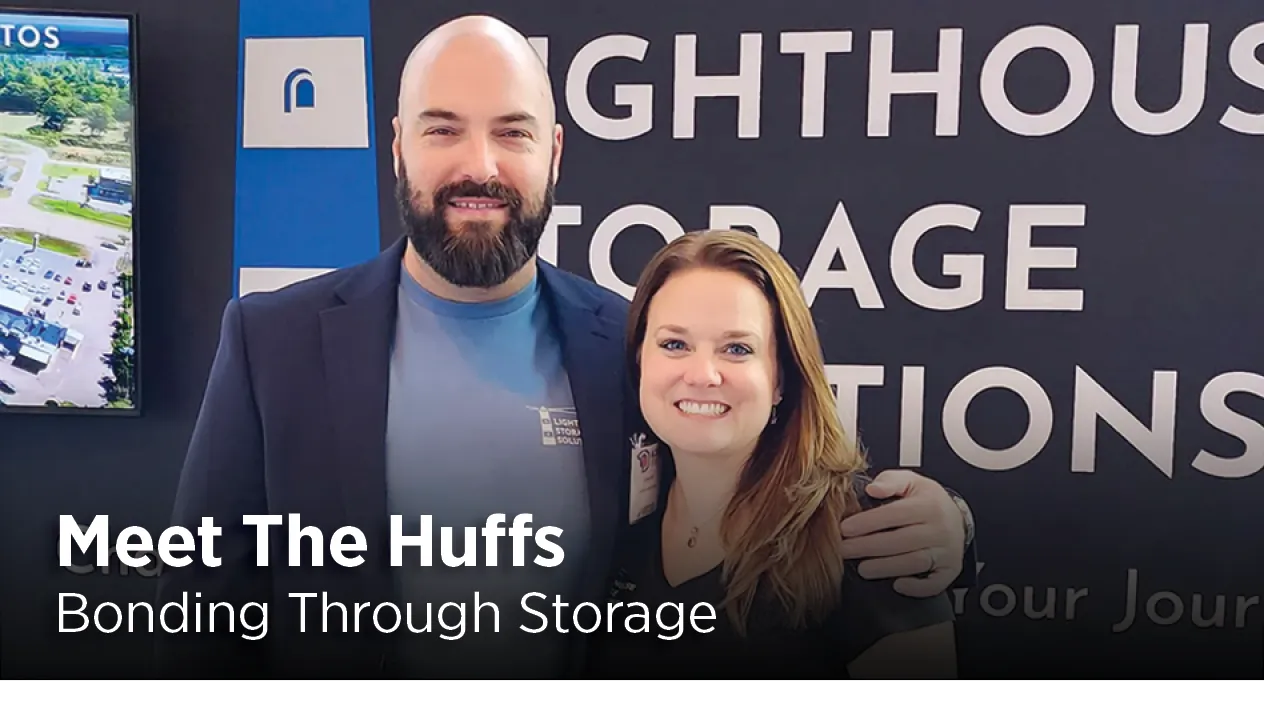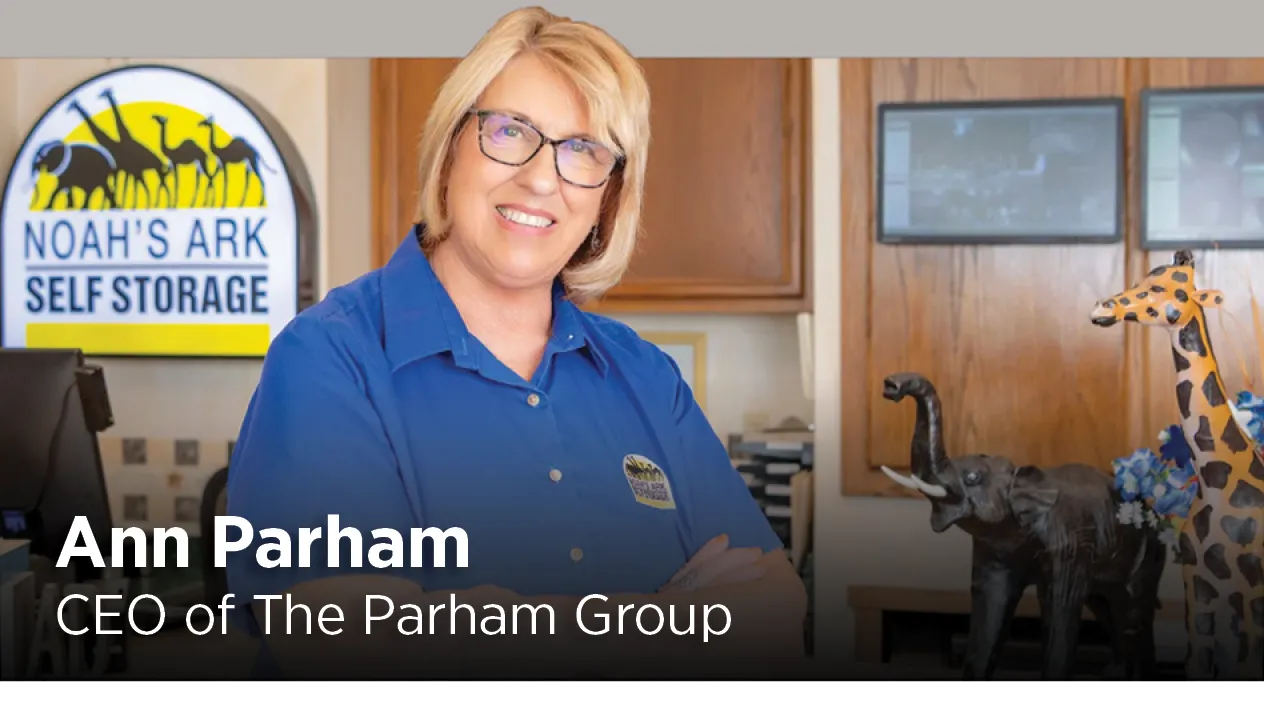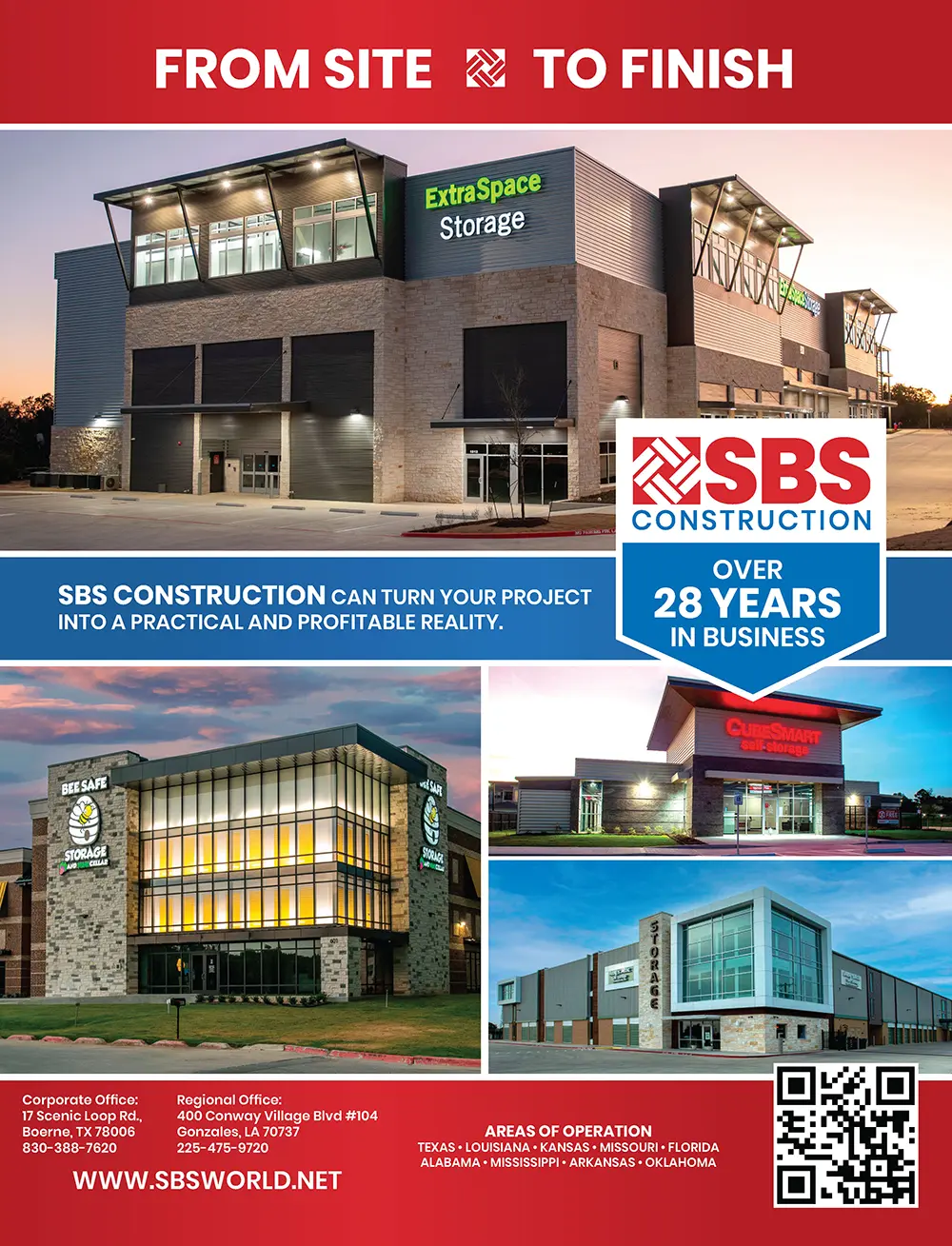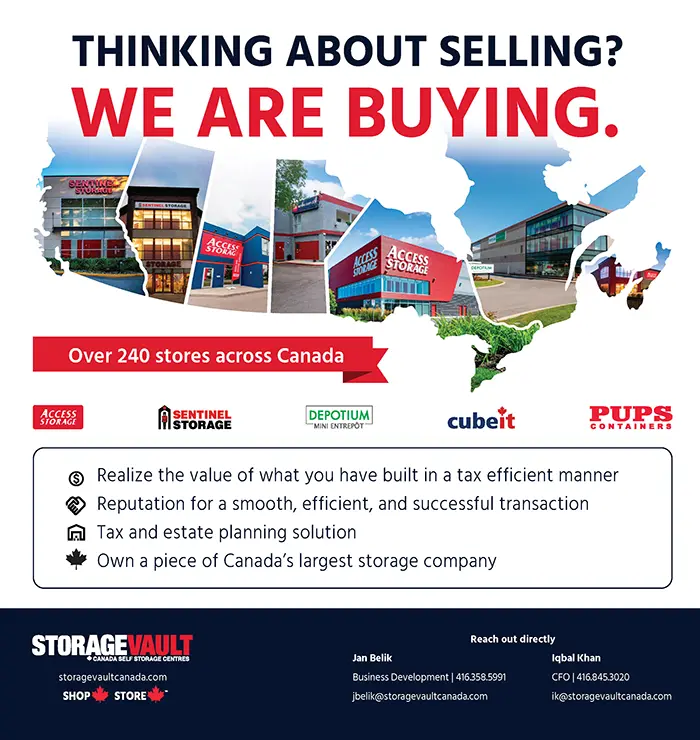How to enjoy our new magazine:
Just scroll!
Click or tap the table of contents icon in the menu bar to find any article.
Read any article by clicking or tapping the read full article button below each article intro.
Jump back to your previous browsing spot from any article using the menu bar or back to issue button.


-
Tiger Storage in Anderson, S.C.Page 46
-
Extra Space Storage in Los Angeles, Calif.Page 54
-
StoreEase in Loganville, Ga.Page 62
-
Green Storage Hamilton in Ontario, CanadaPage 70
-
Storelocal Storage in Boise, IdahoPage 78
-
Choosing Features That Fit Your FacilityPage 90
-
Wentworth Property Company in Phoenix, Ariz.Page 94
-
Planning Your Marketing For 2025Page 98
-
First Steps In Self-Storage InvestingPage 102
- Chief Executive Opinion by Travis Morrow6
- Publisher’s Letter by Poppy Behrens9
- Meet The Team10
- Women In Self-Storage: Lolita Bader by Alejandra Zilak21
- Who’s Who In Self-Storage: Tom Grant by Victória Oliveira25
- StorageGives by Melissa Huff109
- Self Storage Association Update111
- The Last Word: Ted Culbreth112
For the latest industry news, visit our new website, ModernStorageMedia.com.
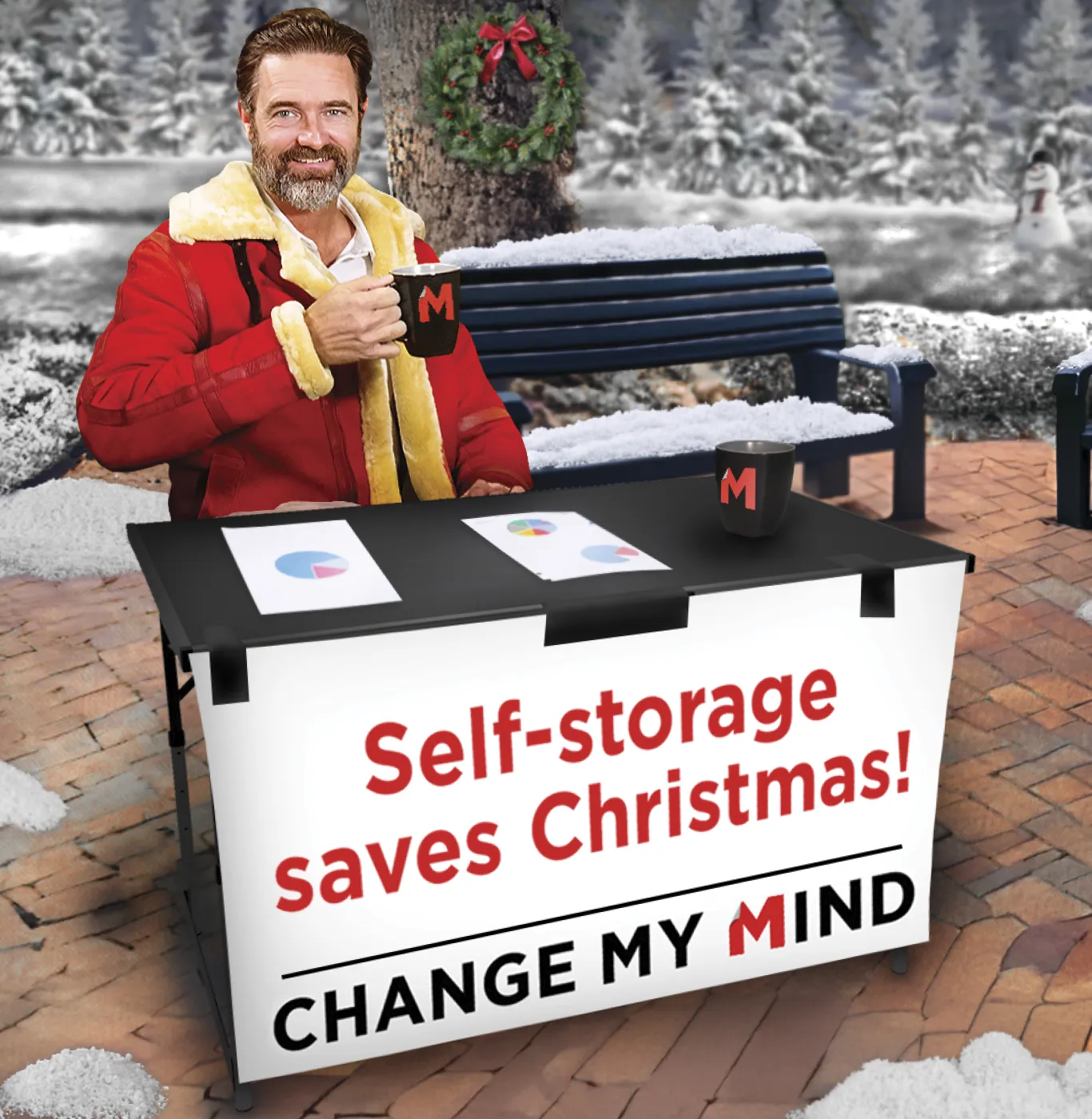
any kids learn Santa isn’t real when they discover “his” presents hidden in their parents’ closet. Using self-storage can prevent snooping—and prolong childhood!

He’s also the president of National Self Storage.

-
PUBLISHER
Poppy Behrens
-
Creative Director
Jim Nissen
-
Director Of Sales & Marketing
Lauri Longstrom-Henderson
(800) 824-6864 -
Circulation & Marketing Coordinator
Carlos “Los” Padilla
(800) 352-4636 -
Editor
Erica Shatzer
-
Web Manager / News Writer
Brad Hadfield
-
Storelocal® Media Corporation
Travis M. Morrow, CEO
-
MSM
Jeffry Pettingill, Creative Director
-
Websites
-
Visit Messenger Online!
Visit our Self-Storage Resource Center online at
www.ModernStorageMedia.com
where you can research archived articles, sign up for a subscription, submit a change of address. 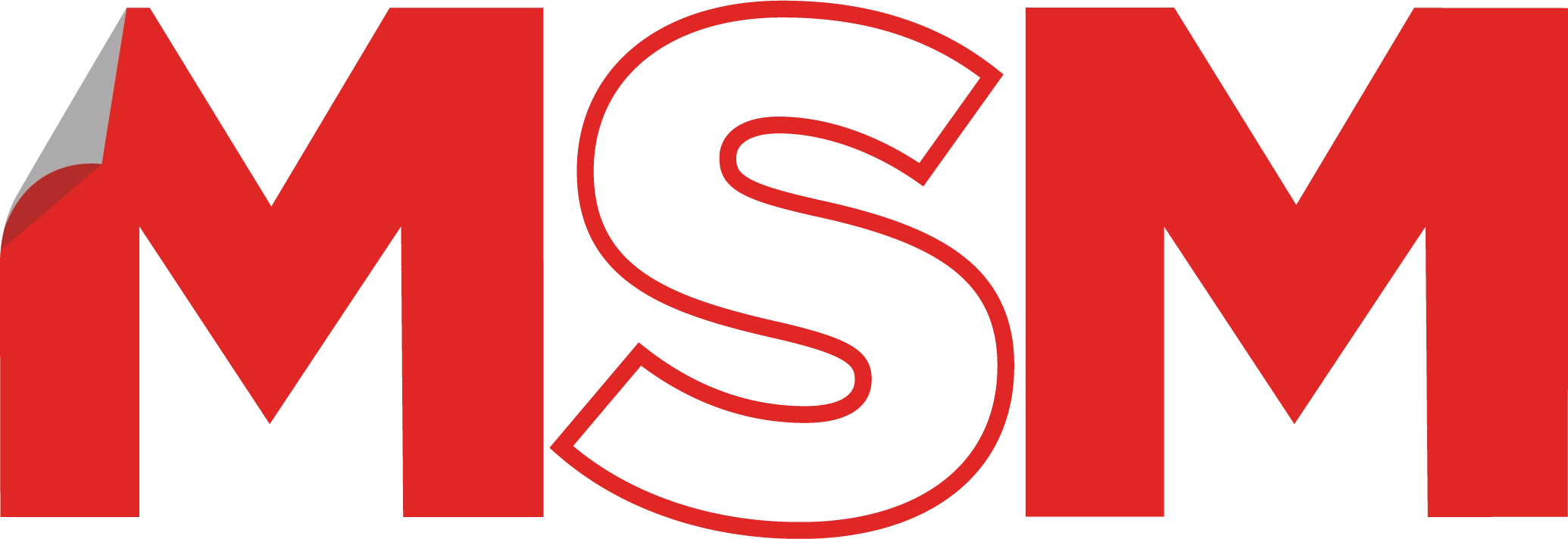
- All correspondence and inquiries should be addressed to:
MSM
PO Box 608
Wittmann, AZ 85361-9997
Phone: (800) 352-4636
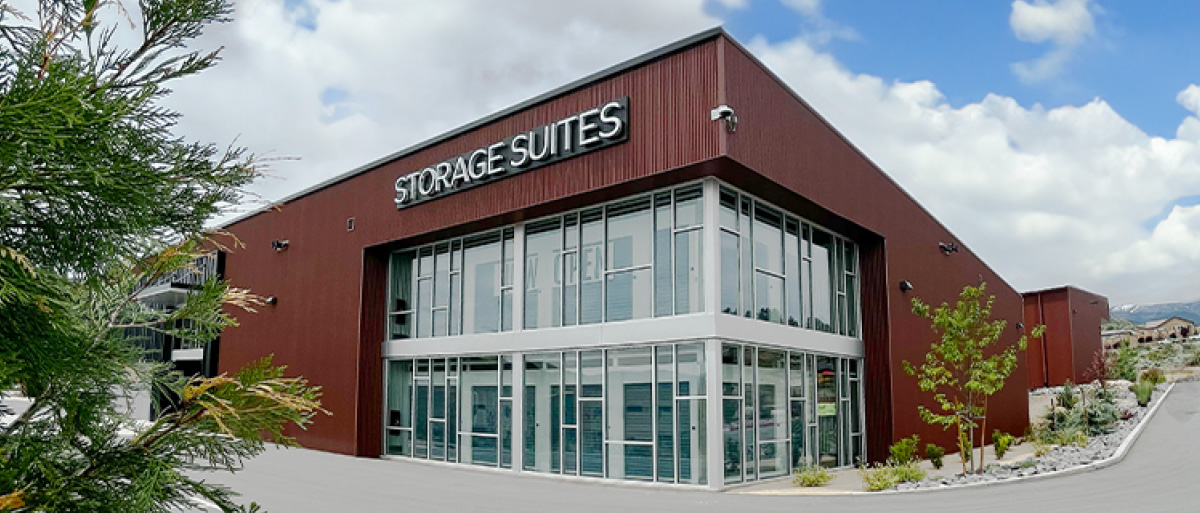


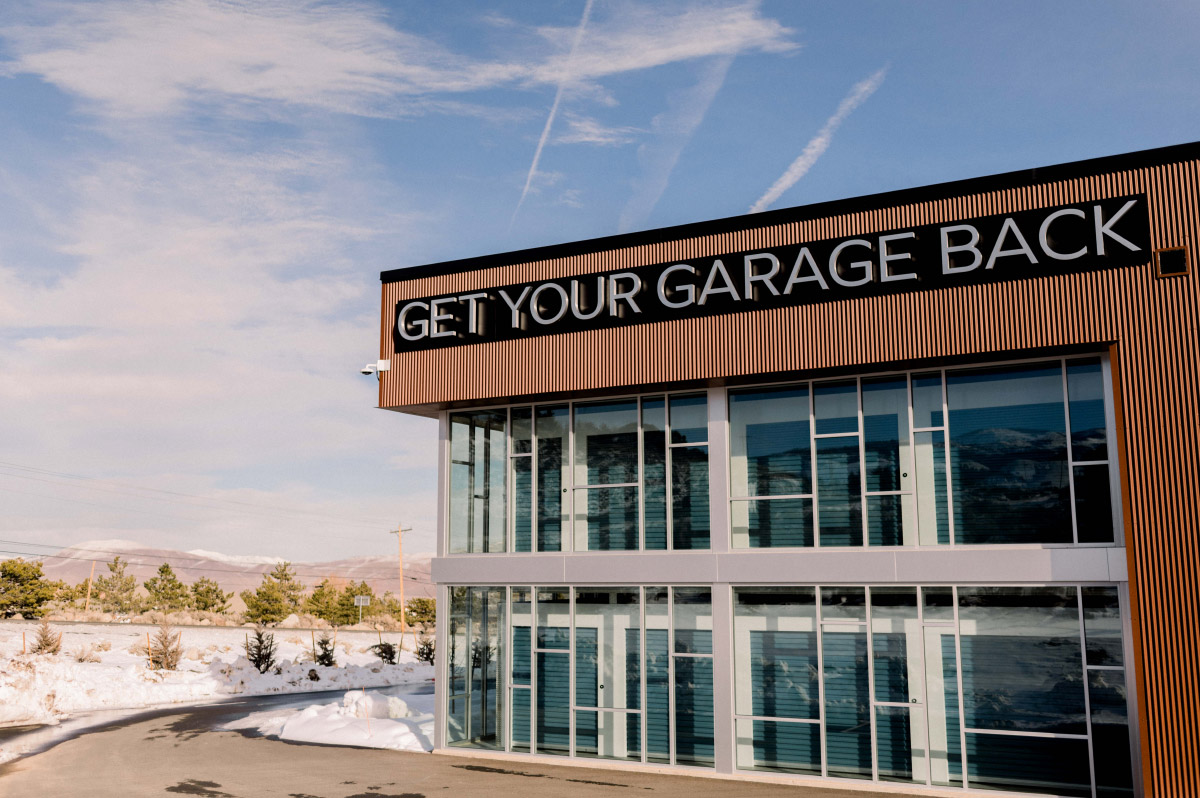
theparhamgroup.com


elcome to the December edition of Messenger magazine.
Regardless of who you may have voted for in last month’s presidential election, one thing is sure: Self-storage is headed to Washington, D.C! In case you missed the news, here’s the scoop.
Congratulations to self-storage veteran Jefferson Shreve, who won the race for a seat in Indiana’s 6th Congressional District. Shreve, who spent three decades in self-storage and founded Storage Express, was recently featured in the cover story of the October issue of Messenger. This traditionally Republican seat represents central and eastern Indiana, including a strip of southern Indianapolis. It opened for the first time in about six years after incumbent Greg Pence chose not to seek re-election.
And congratulations to another self-storage veteran, Troy Downing, who will serve Montana’s 2nd Congressional District, which covers the central and eastern parts of the Treasure State. Downing, formerly the state auditor, defeated democratic challenger John Driscoll, who formerly served in the Montana State House of Representatives. He will replace fellow Republican Matt Rosendale, who decided against seeking re-election after briefly entering the race.
MSM would like to offer our best wishes to both newly elected Congressmen as they head to D.C. to make a difference!
Speaking of winning, hats off to the 2024 Facility of the Year winners! On the following pages, you will read about six exceptional self-storage facilities that won this year’s competition. Each has overcome its own unique set of obstacles and challenges to build award-winning facilities.
It is also worth mentioning that while Extra Space Storage, as a company, did not submit any entries this year, 75 percent of the entries received were for Extra Space’s third-party managed facilities! And that is a first!
As we approach year-end, the MSM team wishes you a happy holiday season and a spectacular New Year!

Publisher

elcome to the December edition of Messenger magazine.
Regardless of who you may have voted for in last month’s presidential election, one thing is sure: Self-storage is headed to Washington, D.C! In case you missed the news, here’s the scoop.
Congratulations to self-storage veteran Jefferson Shreve, who won the race for a seat in Indiana’s 6th Congressional District. Shreve, who spent three decades in self-storage and founded Storage Express, was recently featured in the cover story of the October issue of Messenger. This traditionally Republican seat represents central and eastern Indiana, including a strip of southern Indianapolis. It opened for the first time in about six years after incumbent Greg Pence chose not to seek re-election.
And congratulations to another self-storage veteran, Troy Downing, who will serve Montana’s 2nd Congressional District, which covers the central and eastern parts of the Treasure State. Downing, formerly the state auditor, defeated democratic challenger John Driscoll, who formerly served in the Montana State House of Representatives. He will replace fellow Republican Matt Rosendale, who decided against seeking re-election after briefly entering the race.
MSM would like to offer our best wishes to both newly elected Congressmen as they head to D.C. to make a difference!

It is also worth mentioning that while Extra Space Storage, as a company, did not submit any entries this year, 75 percent of the entries received were for Extra Space’s third-party managed facilities! And that is a first!
As we approach year-end, the MSM team wishes you a happy holiday season and a spectacular New Year!

Publisher
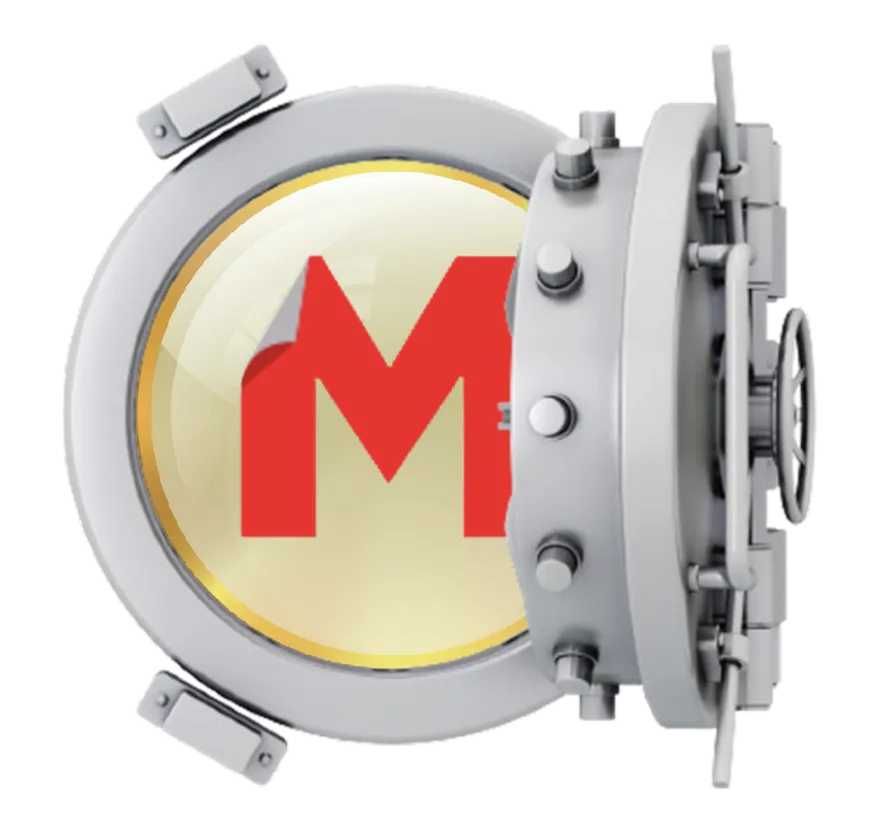
We have put every issue through 2022 on our website, giving you free access to this wealth of knowledge.




MSM



Messenger, SSN, SSC




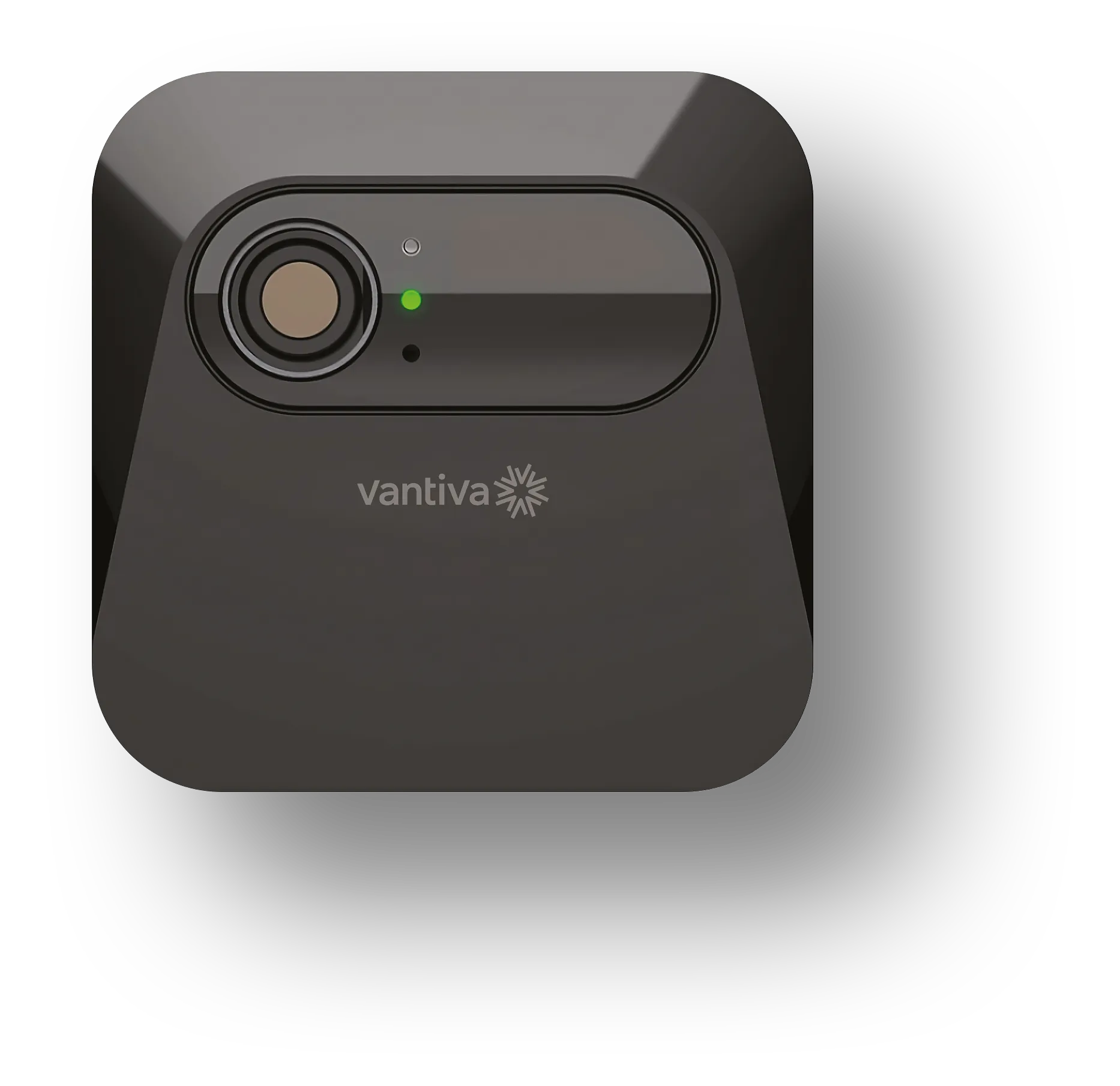


Employees

hen questioned about the things that satisfy most employees, they will typically list items tied into compensation, such as their salary, bonuses, and access to quality health insurance.
Workable, a job recruiting site, conducted a survey that found the top motivator for employees is compensation. “While factors like fresh challenges and work flexibility matter, compensation remains the top attractor and area for improvement in current jobs, underscoring its importance in employee satisfaction.”
In fact, 63 percent of respondents say compensation, which includes bonuses, is the most important thing that will keep them at their job.
Christina Rita, COO of StoragePRO Management, Inc., in Walnut Creek, Calif., says her company understands the importance of compensation. “We like to do a pay survey to ensure we are where we should be when it comes to compensation,” she says. “We look at both internally and externally.”
USG employees meet once a month on video conference, which allows area managers and training managers to address issues overall. The employees also have an opportunity to talk to one another about issues. Additionally, employees meet once a year for an in-person conference.
Mixon talked to one facility employee who hadn’t seen an owner in three years. “No feedback from them, no raises, nothing,” she says. “I know many people are afraid of talking to their employees, giving them feedback, as they’re afraid their manager may quit, but if you don’t address things, they will just keep getting worse.”
The first step in reviewing your employees and giving pay raises is ensuring everyone understands your expectations of them. “We set a wide criterion for expectations; everyone needs to know the expectations and that they’re all on the same playing field,” says Jay Catrib, director of business support for Pogoda Management Company in Farmington Hills, Mich. “You can’t base salary on seniority or if you like them. We use best practices.”
Lou Barnholdt, vice president of sales and development for Universal Storage Group, says their annual reviews are conducted at the same time each year. “Our area managers start working on annual reviews in February and March, and if there is a pay increase, it takes effect in April,” she says. “We make sure there is clear communication and provide feedback.”
USG’s goals include:
- Meeting or exceeding income expectations for the property
- PMG (Personal Marketing Goals)
- Google Reviews
- Reporting in on time and accurately
- Complying with the six company core values
StoragePRO’s are goal driven as well. “We previously gave them a rating one to five in their reviews, but we found that really wasn’t efficient in addressing the goals we have,” says Rita. “We now focus on three or four smart goals for each person.”
Natolie Ochi, president of SKS Management LLC in Pleasanton, Calif., says they broach reviews in a more non-conventional manner. “We used to do formal reviews, but that is now seen as out of fashion,” she says. “We prefer to do casual check-ins. We have them write about themselves and what they would like to learn. If we coach it that way, it makes it less stressful.”
It also helps the company learn more about their employees. “Through that process we learned one of our managers was working on an accounting degree; now they are working in our accounting department,” Ochi says, adding that 47 percent of their employees have been with the company more than 16 years.
When you conduct the review, most of our industry experts agree you should:
- Have the employee review themselves prior to the review. This allows them to self-evaluate and help identify improvement measures.
- Meet in person, if possible.
- Document the exchange in writing.
- If there are elements that can be improved, make sure you line those issues out with the employee and they understand the expectations as well as the timeline in which to correct the issue(s).
- End the exchange with clear direction and making note of what they are doing right.
In the early days, USG gave their managers a $10 bonus per lease, but it is now tied into a budget and monthly revenue. “We give our managers a workbook, and they can track their progress for making their bonus throughout the month,” says Johnson. “There is no guessing. You must make it easy to understand. If you don’t, they will just give up.”
Pogoda’s employee bonuses are based on goals set by the company each year. “Our bonuses give our employees a piece of the pie,” says Catrib.
Indeed, it’s important to make employees feel like they have ownership in the business. “Employees have to feel empowerment in their jobs as well as that they’re appreciated,” Ochi says, adding that employees at her company receive quarterly and annual bonuses. “The quarterly bonuses are for immediate gratification; many younger people expect immediate gratification. There are some companies even doing bonuses weekly.”
Bonuses don’t necessarily have to be cash. “I will give managers a budget to spend to buy the office pizza if they’re doing a good job,” says Ochi. “We even did those butterfly cakes where butterflies come out of the box. Anything to show we appreciate them.”
- Send an area manager to the property to role play scenarios with the manager.
- Set up special training based on the manager’s preferred method of learning.
- Pair the employee with a mentor. Sometimes managers learn better through networking with a mentor who is on the same level.
- If you are a small company, take advantage of state association programs, as well as their mentoring programs.
Despite utilizing various methods for increasing salaries and giving bonuses, these industry experts agree on two fundamentals: Employees should always be aware of the employment expectations, and bonus structures must be easy to understand.

mart units, call centers, and access control systems provide data that can make you a better operator, which also strengthens your bottom line. In today’s highly competitive market, modern technology that is easily available and deployed gives you the edge you need.
Kapp, who also owns the American South Storage portfolio in Charlotte, N.C., frequently hears about self-storage owners going through two or three COOs, vice presidents of operations, or district managers. They keep having the same outcome: ops leaders who were “ragged, worn down, mentally drained.” A review of jobs advertised on LinkedIn underscores that there are a lot of openings in self-storage for these operations positions. This appears to be a failure point in the industry. It’s a hard job, full of difficult issues with staff, tenants, tech, etc.
Remote tech helps resolve this bottleneck by institutionalizing and “technologizing” knowledge and processes. You no longer have to rely on one person who knows the lien laws and understands the nuances from state to state. You can use software like AI Lean to automate the lien process for you and increase revenue, because it also focuses on collections.
Instead of surveying the competition to ask about rates and occupancy, like owners have asked managers to do for decades, data services like Radius+, Yardi Matrix, and StorTrack automatically do that daily, giving you real-time, accurate data on your competition.
Technology designed to evaluate supply and demand can then make data-driven adjustments to rates. Software like Prorize and Veritec can adjust rates automatically to match the market, according to the parameters you set. If your inventory of 10-by-10s is low and competitors’ rates for them are high, the asking rate can be automatically adjusted up to increase margin. If you have a plethora of 5-by-5s, and competitors’ rates for them are low, the asking rate can be automatically adjusted down to attract renters.
In addition to renting space and serving customers well, call center technology gives you data about:
- How many calls you receive,
- The nature of the calls,
- How long it takes for calls to be answered,
- How long the calls last, and
- How calls are handled.
Did they result in new rentals? Were payments received? Were additional units rented to existing customers? Did you know about the move-outs instead of being surprised? Were they calls to get information, like a gate code, the amount due, or office and access hours? Were they calls to report problems such as maintenance issues or tenant protection or insurance claims?
Not only does this help you staff the facility appropriately, but this data also gives you valuable information for the next time you go in front of local planning and zoning decision-makers. Your hard data about frequency of customer visits could save you money and headaches when you remodel, expand, or build a new facility. Municipal authorities do not have self-storage traffic data. Instead, they want to apply data from other businesses with higher traffic counts to your business. That increases your impact fees, parking spaces required, and potentially other expenses. Providing your own hard data to prove your actual traffic count is powerful with local decision-makers.
Another benefit of modern access control systems is reducing accounts receivable and delinquency. When a delinquent tenant comes to the keypad, triggers you set in your software should lock them out. If your technology can text them a link to pay, they can proceed to their unit, and you collect rent due without additional collection effort.
Loftin says OpenTech access control also helps you with tenants who forget their access code. They can enter their mobile phone number, and if it matches what is on file, they can get the code. This feature solves a very common customer problem and prevents a significant amount of customer calls—all of which save you time and money while enhancing your customer experience. It’s a win-win.
Storage Defender is an affordable, easy way to turn traditional units into smart units. For a low, upfront investment, you can buy Storage Defender units and offer them to tenants in any unit, or place them in all of your units. These devices notify your customer any time their space is accessed.
The SSA’s 2023 Demand Study shows that tenants are willing to pay more for such technology. Storage Defender data shows that this tech generates 10 percent to 15 percent in ancillary revenue. At this rate, Storage Defender rivals tenant protection as the best ancillary stream of revenue, without any claims to adjust and pay.
Speaking of claims, facility-wide use of this technology increases peace of mind for tenants, operators, and owners because it decreases crime, so you have fewer claims for tenant protection or insurance and commercial insurance.
There are many other consumer benefits of smart units using technology like Nokē, KISS, OpenTech, and others. For instance, tenants can share temporary access with friends, family, delivery services, etc. With KISS tech, they can manage their account in the KISS app, from paying their bill to changing profile details.
KISS reports that their smart lock is successful with 98 percent of self- storage customers. Only a scant 2 percent of customers just can’t learn how to use the digital lock. That’s OK, there are disc locks for them, so everyone is happy. One of the reasons for this high success rate is that KISS locks do not use electricity, batteries, bluetooth, or facility-wide networks. They use the same NFC (near field communication) tap technology you use to pay at Starbucks or the grocery store, avoiding all the failure points of tech that depend on other sources of power or connection. Did you know your smart phone could transfer energy to a lock to open it?
Neither technology nor human beings can provide all of these solutions, but you can craft a combination of high tech and high touch for your business to win customers, run more efficiently, and increase profits.
All of your tech provides data on customer interaction. The data tells you what your customers need and want. Use the data remote tech provides to improve your customer experience and stand out from the competition.
Your combination of high tech and high touch elevates your customers’ experience with your business, increasing their satisfaction and length of stay, as well as their likelihood of referring you to others and returning to you when they need storage again in the future.
PLATFORM TO RUN YOUR BUSINESS
Everything you need, from the fastest storage websites in the industry to property management software that makes running your business a breeze.
Automate your operations, save time for you and your managers, and increase revenue.
The fastest websites in the self storage industry, to give your customers a seamless online rental experience.
A full service payment solution, purpose-built to cover the payment needs of self storage operators.
A turnkey brand solution to streamline your operations and compete with the REITs.
Membership with access to nationwide vendor discounts, consultants, a community, and more.
Protection programs with industry-high revenue sharing.
A team of marketers with decades industry experience to get you found, win more customers, and grow occupancy.
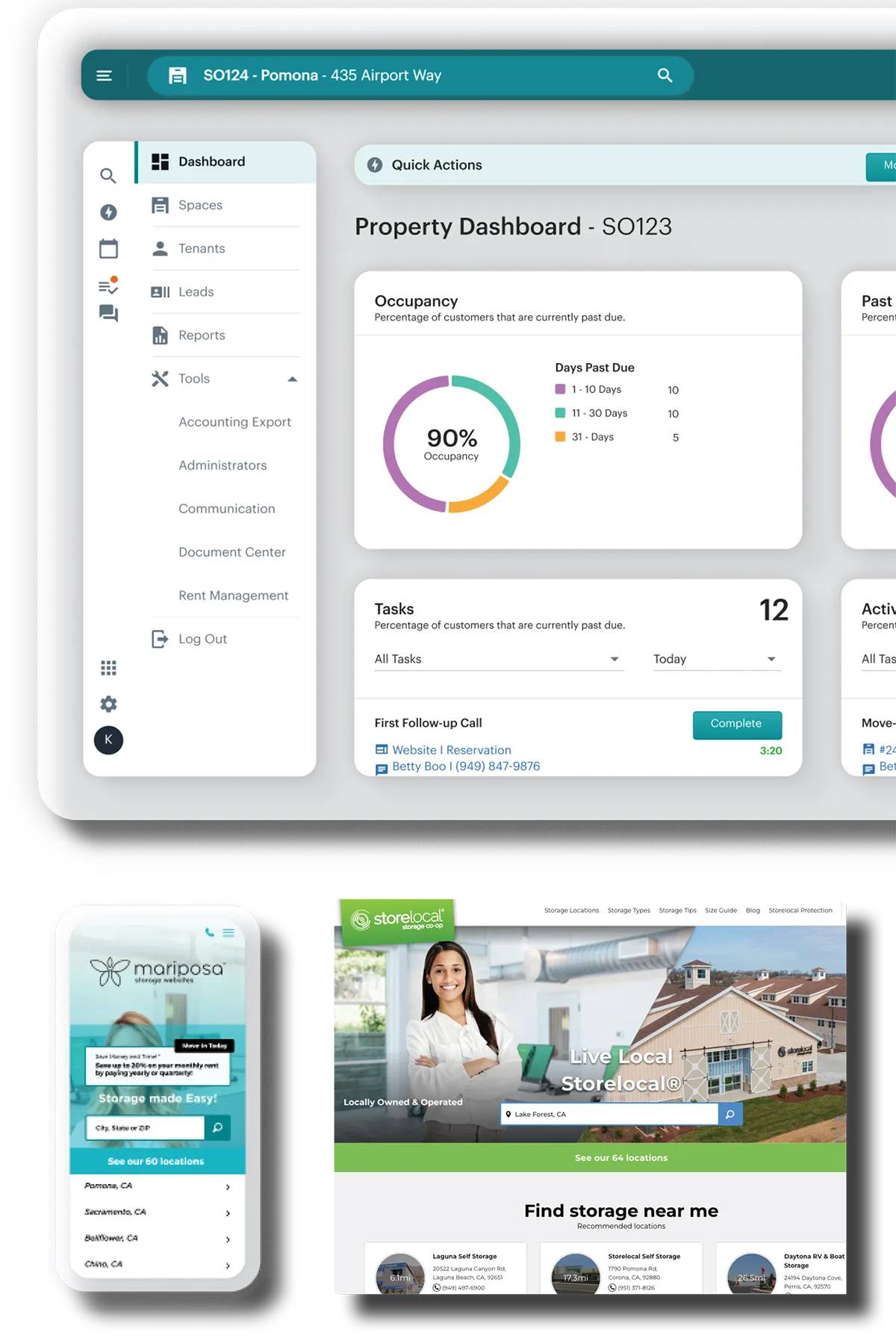


hroughout history, there have always been phrases used to describe synchronicities. “Things happen for a reason,” often brings comfort to people going through hardships. “Trust in the process.” Or, in the words of painter Bob Ross, “There are no mistakes, just happy accidents.”
Lolita Bader’s story is an example of how life can guide you one way for reasons you never expected. It’s also a testament to how we don’t have to pigeonhole ourselves into an industry just because it’s what we’ve always done.
She majored in English, thinking she’d become a teacher. But she met her first husband, got married, and had her first daughter. “We lived in Houma for a couple of years, then moved to Texas when I was 21.” The move was prompted by her husband’s job. She had her second daughter at 28 while living in Corpus Christi. It was around this time that she decided to finish her degree, so she enrolled in Del Mar College.

They became best friends and complemented each other so well that they decided to get married in 1995. Within two years, she ended her 12-year insurance career and joined the storage business full time. This would be the beginning of a strong partnership.

In 1998, they joined the Texas Self Storage Association (TSSA). “In 2000, I became an at-large board member. Over the course of the next 12 years, I worked on almost every committee, as well as becoming secretary, vice president, and president,” says Lolita.
She traveled throughout the state with other board leaders. Together, they’d teach seminars to new facility owners, developers, and managers on how to run a successful facility while complying with all relevant laws.
This taught her the ability to connect with an audience. “I would start by asking people to share some of the weirdest experiences they’ve had in the industry,” she says. “Several hands would go up, and soon enough, we’d all be laughing. It was a great way to set the mood.”
This was a time she remembers fondly. “We met some amazing people,” she adds, “and I truly enjoyed every minute of it.”

She’s also impressed by how well honeybees work together. “The queen, the drone, and the workers all work together as one single organism, and the queen and drone can’t survive without the workers.” Honey is also something that goes hand in hand with her faith. “The land of milk and honey is also mentioned in The Bible,” she says.
They both studied hard and passed their tests to become Advanced Master Beekeepers. Her enthusiasm is a strong reminder of always doing what you love, and that just because the bulk of your experience is in one area, it doesn’t mean you can’t venture into a completely unrelated one.
Once they were able to obtain a special Agricultural Valuation for Beekeeping on their property, they started BeePeaceful Colony Management (beepeaceful.com) to help others learn about the importance of bees while lowering their property tax.
If you’re coming in as a manager, she stresses the importance of doing walkthroughs of the facilities, looking at them as if you were a tenant. “What are the things you could improve upon? What are the pluses?”
Moreover, never assume that a new facility is run like your previous one. “Learn about this new place,” she says. “If the new owner wants to know about how things were done at your previous place, then bring it up. It’s hard to unlearn something, but the new owner’s different.”
Most importantly, don’t let issues fester. “A lot of problems are either due to miscommunications or no communication at all,” she adds.
She’s also very close to her other sister, who’s in her mid-80s. “Last year, she wanted to go to Israel with a church group, and I went with her because I wanted to make sure she’d be OK. We made the most wonderful memories, and I wouldn’t trade that for the world.”
Lolita and Joe have been married and worked together for more than 29 years. They have traveled all over, but their favorite sites are the ones with family. They have been abundantly blessed with three daughters, seven grandchildren, and four great grandchildren. Just recently, they found out there will be two more great grandchildren joining their lives in early 2025. In her words, “God is good!”

ith over 100 years of excellence in technology solutions globally and just a little over two years working within the self-storage industry in America, Vantiva has created an all-in-one platform and many solutions for problems self-storage operators have been struggling with for years.
Thomas Grant, vice president of IoT sales at Vantiva, who has been working in the technology realm for the past 25 years, with a focus on multifamily technology solutions, joined the company in their new endeavor to bring superior technological solutions to the self-storage space. “This is a new area for me,” he says. “I think it’s exciting and interesting [to realize] both the similarities and the differences in the industries.”
Working within the self-storage sector, he has found the industry to be a fascinating and perfect match for his experience. “The industry is almost a mix of retail and multifamily. There’s this aspect of having web or walk-up traffic coming to you, and you must try to convert it into a rental. That’s very retail-esque in terms of [the industry’s] approach. I have worked with some operators in the past year that analyze traffic and try to understand customers’ behavior,” he says. “But there is also the multifamily kind of property management approach, for instance when handling leases, getting folks to lease, how to manage rent increases, and all of the pieces that come along with managing a rental property tie into this with, of course, some unique aspects to it.”


“I feel like the space is on the cusp of making that leap in a very aggressive and meaningful way into technology,” he says, “the same way that multifamily did like 10 years ago. Technology has the opportunity to transform this industry, not only for the operators and owners of these facilities but [also] for their renters and customers alike, especially as we start to see demographics in the millennial and Gen Z groups, as they are very comfortable with and expect technology. So, it is incoming upon anybody serving those demographics to offer solutions that meet those expectations and needs.”
Thinking of that, the company recently released a fully integrated camera called Vantiva Peek, their new effort in furthering smart units in the self-storage business that allows customers of self-storage facilities to take a quick look into their units and belongings whenever they want directly from an app on their phones. The product came to be after a self-conducted survey found customers mostly stopped by facilities to check on their stuff, instead of bringing in more items or picking them up. “The idea [for the product] came from a home automation background,” he says, “and thinking about how people think about their belongings overall. Self-storage, from our perspective, is an extension of our homes. As homes continue to get smaller, and our belongings seem to increase, it creates the situation of being cramped for space. This means the things being put into self-storage are meaningful, not junk. They are either valuable monetarily or sentimentally, and people want to make sure they are secure, and that they can keep an eye on them.”
Since its release in July earlier this year, the Vantiva Peek has had an overwhelming response. The market seems incredibly excited, but this doesn’t come as a surprise, as the product is equipped with motion detection, night vision, two-plus years battery life, a built-in magnet for mounting, and configurable image capturing, as well as temperature and humidity sensors. The latter comes with a setup that allows facilities the ability to not disclose the information with customers, avoiding a situation of consternation and concern while still providing a handy service that gives the facility the ability to spot mold and infiltration before it becomes a problem.

Grant goes on to say, “What we are learning in the [self-storage] space is that different operators have different objectives; and while all of them are valid cases for our solution overall, they start from different points. At some point, they might end up with the same types of solutions, but we want to make sure we are designing a system that meets the needs of the operators at the point and time in which they need it.”
While Vantiva provides a hassle-free, all-in-one platform to businesses that can evolve as they grow with the intent of a more technological self-storage industry tomorrow, Grant mentions that many companies are still at the starting line, and the most common solution for most facilities looking to develop technologically is site-wide connectivity.
“It’s foundational. You have to connect to do reporting and analytics,” he says. “It’s a means to a larger end, which ultimately is the company’s objective, whether it is energy management concerns, predictive maintenance, or enhancing safety and security.”





very industry today is awash in a treasure trove of valuable and useful data, and self-storage is no different. This data is found across software platforms in use every day, such as CRMs, property management systems, facilities operations systems, and market analysis tools. The challenge, and opportunity, is knowing where to find that data and how to best use it.
Data and smart storage can help operators lower costs, increase revenue, and keep pace with changing tenant demands, but it’s about more than just innovation, says Reza Raji, senior vice president of Smart Spaces IoT at Vantiva.
“Smart technology is about survival in a competitive market,” he says. “Facilities that embrace data and IoT (Internet of Things) have the agility to adapt as tenant expectations and market conditions shift, and they gain a crucial differentiator from their competitors.”
Along the same lines, Jacob Pandl, founder and CEO of nodaFi, drills down into four areas of data focus: occupancy and rental rate information, customer behavior patterns, market analysis data, and maintenance and operational efficiency data.
It’s important to understand different types of data are tied to different objectives. For example, security data uncovers locations or times of day that need additional oversight, energy data points to predictive maintenance, and environmental data helps prevent damage and cuts down on repair and insurance costs.
“However, all this disparate data works best in unison, allowing you to see otherwise obscure patterns,” says Raji. “You might notice, for instance, that security incident logs coincide with specific access logs, or discover concurrent energy spikes and leak detection indicating potential damage to device power supplies.”
Looking at data in broad categories, Rane breaks down how to meet business objectives depending on data type:
- Operational Data (e.g., occupancy trends, unit utilization) helps in adjusting staffing levels, identifying high-demand unit types, and optimizing pricing to maintain occupancy. It can also be used to streamline inventory management and support resource allocation.
- Customer Data (e.g., demographics, behavior patterns) allows businesses to deliver personalized experiences by understanding customer preferences and behaviors. This data enables targeted marketing, loyalty programs, and customer-specific promotions to drive retention and increase lifetime value.
- Financial Data (e.g., revenue per unit, payment patterns) highlights the most profitable units or customer segments, informing pricing adjustments, unit availability, and expansion strategies. This data also helps with budgeting and forecasting.
- Lead and Marketing Data (e.g., lead sources, conversion rates) provides insights into which marketing channels are most effective, supporting budget allocation and helping tailor messaging to drive higher conversions. Seasonal lead data, for example, can help time promotions and adjust campaigns to align with peak periods.
- Pricing and Promotional Data (e.g., discount effectiveness, competitive pricing insights) informs dynamic pricing strategies that align with market demand, maximizing revenue by adjusting prices in response to occupancy or seasonality.
Data-driven insights are “game changers” for marketing. “By analyzing usage data, operators can pinpoint which site features, like in-unit monitoring, climate control, or 24/7 access, are popular, enabling targeted promotions,” says Raji. “For example, if you notice that certain customer demographics log onto your in-unit monitoring app more frequently, you can create tailored digital marketing campaigns promoting that feature to the renters that value it most.”
The takeaway is data provides views into each business function that provides insights and leads to efficiencies and optimizations that translate to saving time and money. The trick is turning that raw data into usable information and actionable insights.
“Begin by choosing one or two objectives, like optimizing occupancy or reducing operational costs, and focus on collecting data related to that goal,” says Pandl. “For example, tracking high-maintenance assets or monitoring revenue by unit size for a quarter can reveal actionable insights. Building a dashboard that highlights key metrics will make it easy to spot trends and identify areas for improvement without getting overwhelmed.”
Rane advises ensuring your data is centralized in a structured format as a first step. With centralized data, it’s easier to use business intelligence tools to identify trends.
“Start simple,” says Rane. “Look at metrics like occupancy and rental activity to gain insights. As you become more comfortable, you can dive deeper into custom reporting.”
While it’s possible to start data analysis on your own, particularly for basic metrics like occupancy or pricing, getting in-depth insight, such as predictive maintenance or advanced market analysis, probably requires input from data experts or a robust software platform, states Pandl, who adds that “Specialists can help set up predictive models, integrate data across systems, and recommend optimizations to maximize both efficiency and asset longevity.”
Rane seconds the value of software solutions for taming data. He points out that typically BI engineers and data analysts are required to fully leverage data and that most self-storage operators don’t have the capacity or resources to analyze and visualize data. The solution is a software platform with dashboards and tools making powerful data insights accessible to anyone without the need for a specialized data team.
Illustrating data’s impact on operational efficiency, Rane shares a case study where a self-storage company analyzed rental activity by day of the week and found weekends had twice as many move-ins compared to weekdays. Using this insight, the company adjusted its staffing levels accordingly by reducing the workforce during quieter weekdays and increasing it on Saturdays and Sundays. This data-driven approach reduced labor costs by 15 percent and ensured customers experienced shorter wait times and improved service during peak times.
“One key point is the importance of owning your data,” says Rane. “By having full access and control over your data, you can generate custom insights that go beyond what standard reports offer. Additionally, leveraging business intelligence tools … allows you to democratize data access, enabling team members across your organization to make informed decisions.”
Every self-storage business is rolling in data created in basic business platforms from operations systems to CRM software, and this data can be used to do everything from lower maintenance costs to define the next marketing campaign.
The data is there; it’s up to you to tap into that gold mine.

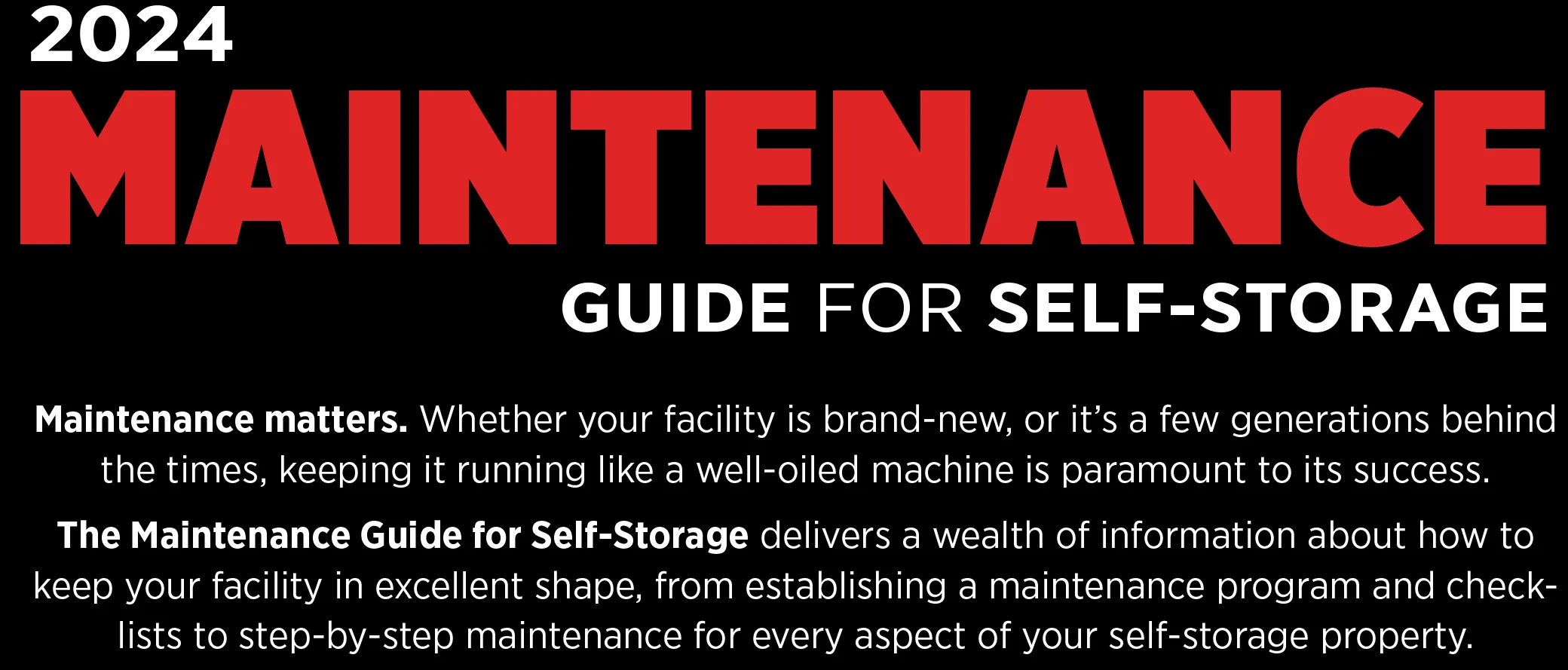
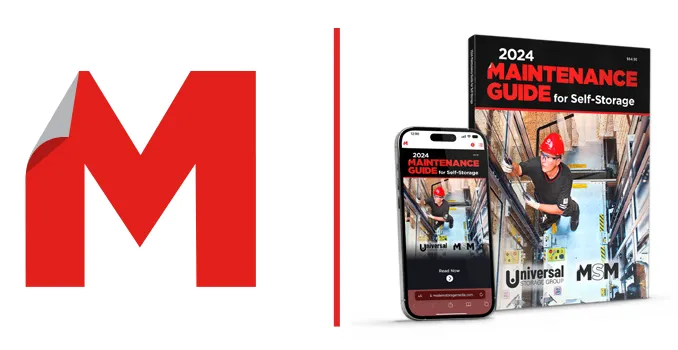
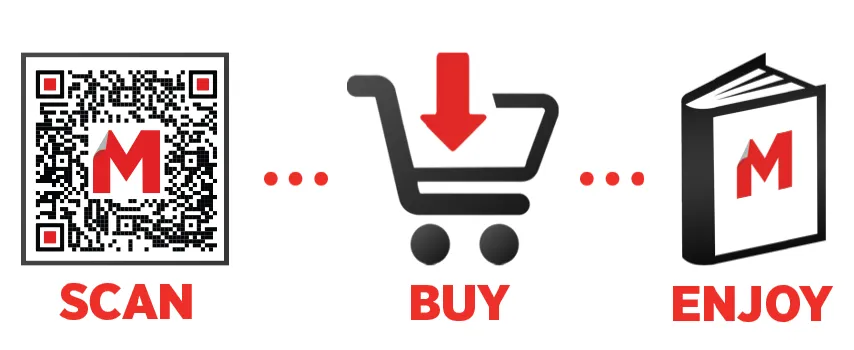
his year’s facility of the year winner, DXD Bristol, is part of a larger portfolio of self-storage facilities across the country. DXD.Capital (DXD) looks for the best self-storage development and acquisition opportunities by closely studying data on supply and demand, costs, locations, and competitors using a suite of proprietary technology.
Messenger’s 2024 Facility of the Year overall winner is DXD’s Bristol, R.I., location. And once you read about how they came to be in the first place, you’ll understand why. One thing that makes this facility stand out was DXD’s unique commitment to the local community; they have served not just the requirements of their investors but also the needs of the local community through both the design of the facility and the construction of a daycare center that supports the wellbeing of families in the area.
They’re also an exemplary testimony of how sometimes, when an opportunity presents itself, it’s wise to pivot and do something that was completely unplanned. In fact, it may turn out to be much better than the original idea.
Spoiler alert: This is a feel-good story that will make you proud of the industry and the good, kind-hearted people who are a common element in many self-storage businesses.
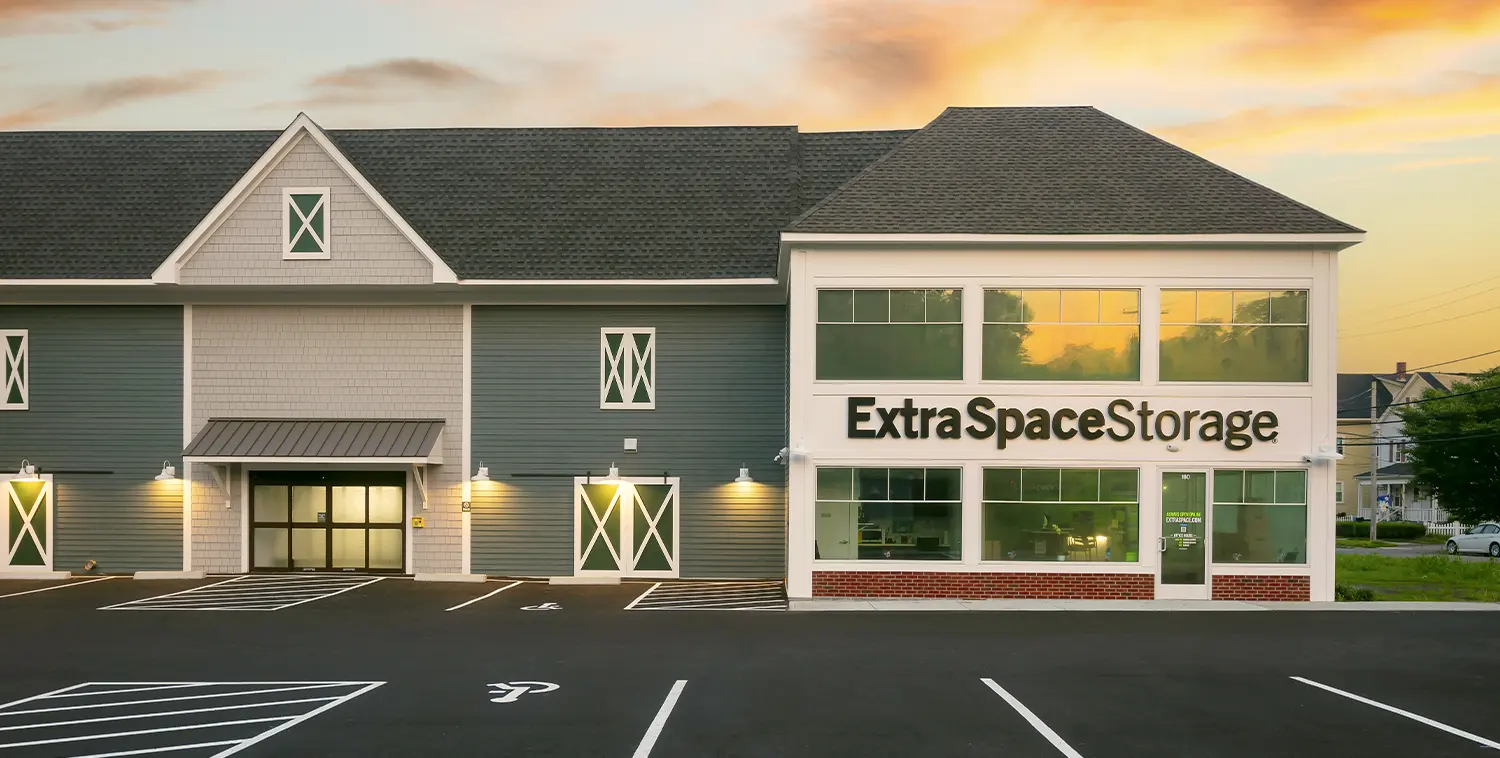
Specifically, Sylvester was looking for accurate data on upcoming supply and the active development pipeline as well as current rental rates at existing facilities. Since none was available, he co-founded a platform that could gather all this information and organize it in a centralized location. This is how Radius+ was born. “We’d create the data, sell it, and provide it to the industry,” says Sylvester.
Radius+ aggregated data that hadn’t existed in the industry for all locations in the United States and Canada. The Radius+ platform aggregated where self-storage facilities were located, their sizing, pricing information, a facility’s competitors, and demographics and housing data. This data helped many in the industry make more sound investment decisions about where and when to build or buy self-storage facilities.
Sylvester and Dolan founded DXD in 2020 with the thesis that using data and building a proprietary platform would allow DXD to evaluate investment opportunities at an unprecedented scale and be highly selective about the investments DXD would pursue. As part of DXD’s first fund, they identified that the demand for self-storage in Bristol far exceeded the available space and that, while population density was small, the true trade area was much wider due to the lack of supply. This was due in some part to the many coastal homes with little to no storage and a skyrocketing number of seasonal residents during summer. In addition, students at nearby Roger Williams University needed short-term storage for their belongings when the dorms closed down for the summer. They also had the benefit of Managing Director of Construction Scott Hughes living there and understanding the value of this niche market.

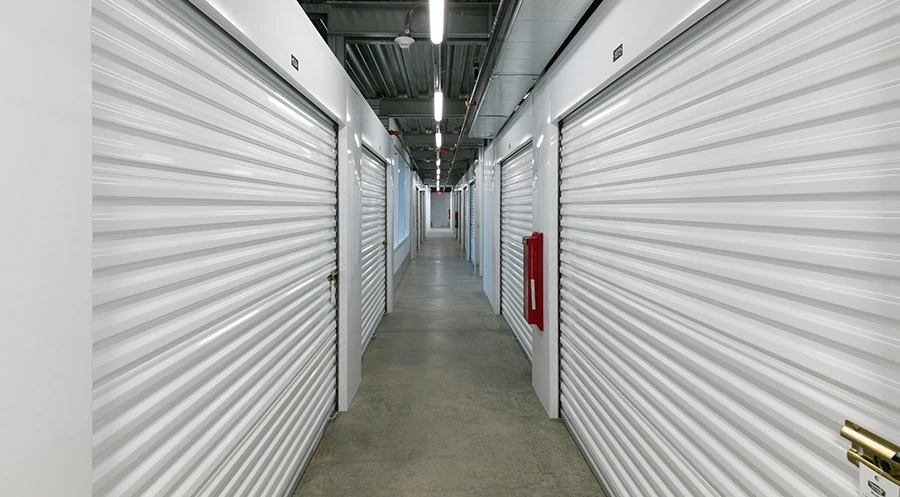
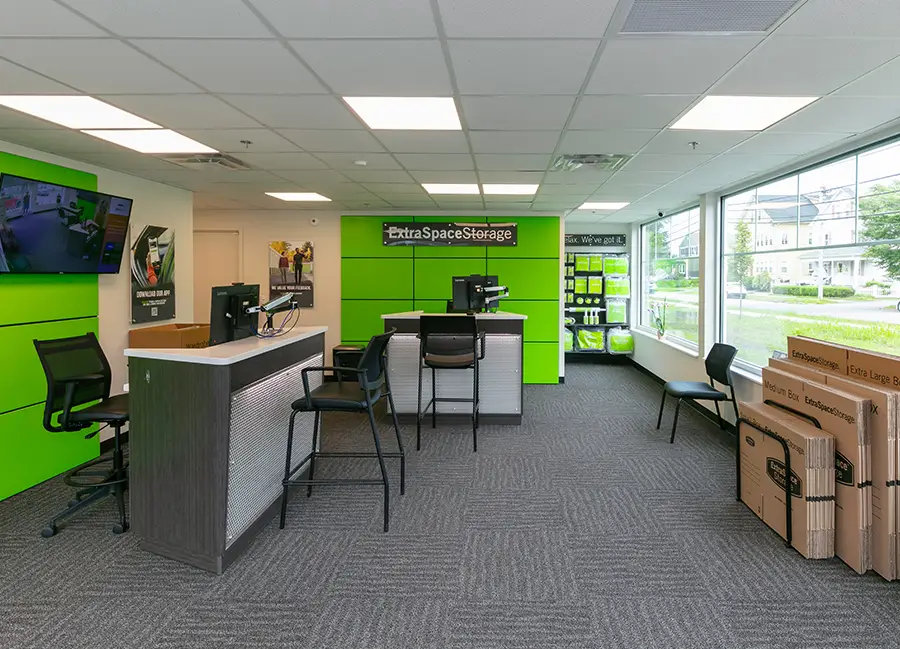
Understanding this concern, DXD decided to incorporate the same elements into the building and to ensure that its landscaping is always well manicured. It took DXD two years to get it all done, but DXD Bristol now looks like one of the many residential building complexes in the area, instead of a commercial self-storage facility.
“The neighbors are happy with what we built,” says Sylvester. “It’s a really good outcome for everybody involved, and there were really no dissenters in the process of planning and building the facility once they were aware of how we would approach the construction of it.”
Once they got the green light to proceed with the development of their project, they were faced with another hurdle: One of the original buildings on the development site had been home to a local daycare center that had been a staple of the neighborhood for three decades. The easiest thing to do would have been to just wait for the center’s leasing agreement to come to an end. However, DXD recognized the value of such a service for the local community, and they wanted to have a good relationship with their neighbors.
“It wasn’t a requirement for us to keep the daycare,” says Sylvester. “But as a general principle of being decent human beings, we didn’t want to demolish it as collateral damage to the community. We approached it as ‘How can we keep the daycare in existence?’”

“Going from a run-down daycare to a brand-new facility has improved both the kids’ and the parents’ experience,” Sylvester says. “We really were able to thread that needle without creating any friction along the way. It’s really been a good outcome for everybody involved, and it put the kids in a much healthier and safer environment.”
As if those first two challenges weren’t enough, local ordinances also required a significantly higher number of parking spaces than what DXD needed for self-storage. DXD worked out a solution with the town called land banking parking spaces, which means some of the landscape is available for parking, as opposed to building an oversized and underutilized parking lot.
“The town had a misconception about the number of parking spaces a facility of this size would need,” Sylvester says. “But we showed them evidence of what’s normally required for self-storage, due to the low traffic of this business model. Luckily, they consented to that view.”
With this final zoning board approval, DXD was able to finalize construction and development and open their doors for business in June of this year.
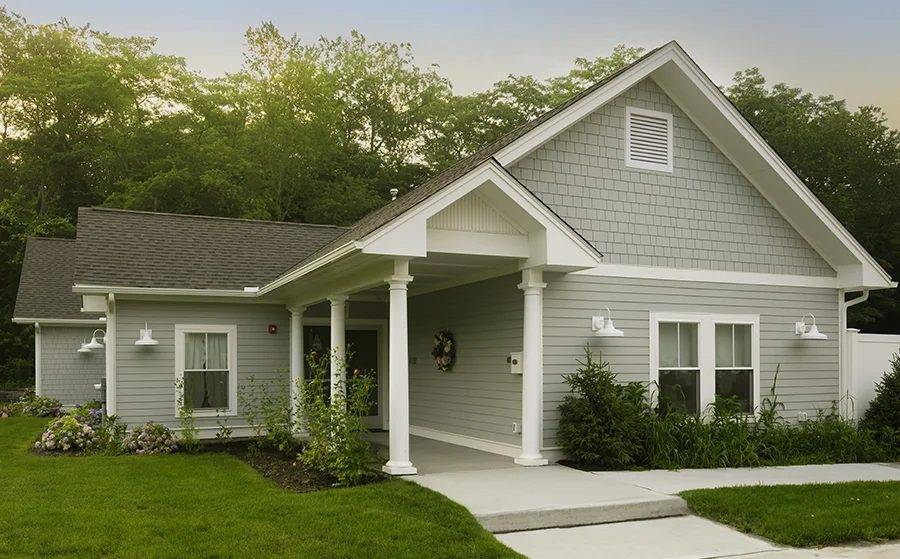
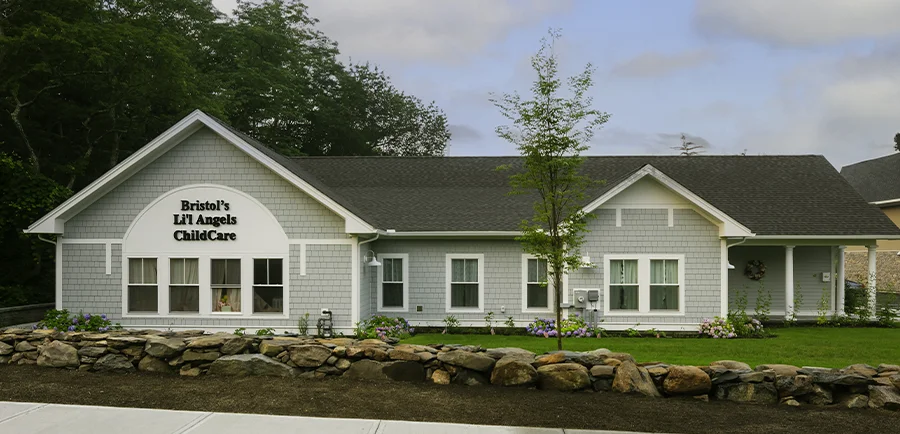

It’s been a formula that has served them well in all their locations. “We started during the COVID pandemic,” Sylvester says. “While we have a couple of central hubs, overall, it’s a very decentralized team. So, we focus on a lot of communication, training feedback, and frequent get-togethers to maintain camaraderie and a sense of working as a cohesive unit.”
DXD also fosters creativity and personal autonomy among their team, since they recognize that these factors are crucial in keeping good workers long term.
Making sure that their team has everything they need at any given moment has also been instrumental in providing an outstanding experience for DXD Bristol’s tenants. “We keep our location in pristine condition at all times,” states Sylvester. “We spend a lot of time making sure that there’s no downtime in services and that if there are any issues reported that they are addressed immediately.”
Since New England winters are not always mild, the Bristol team makes sure that the parking lots and entrances remain plowed to ensure easy, year-round access for tenants.
Sylvester explains that they’re aware that rates are a moving target. “While this is true, if you’re conservative in other aspects, you can hedge that uncertainty,” he says. “We sometimes underwrite a longer lease-up to ensure that we don’t run into any unforeseen financial issues because of aggressive projections.”
As for marketing, they stick with typical top-of-the-funnel search engine optimization (SEO) to attract customers. They also set up banners in local community events, such as the Bristol 4th of July parade. “Nothing extraordinary, but we’ve still found great success with what we’re doing,” says Sylvester.
When it comes to their product offerings, they’ve stuck with what works, instead of embellishing it with unnecessary bells and whistles. While there’s certainly a time and place for that, DXD Bristol hasn’t found the need to include them in their self-storage offerings. “We make it easy for tenants to rent storage space by making online bookings,” says Sylvester, “and we have modern access control systems, but we haven’t found the need to use any specialized electronics for the units themselves.”
DXD Bristol offers access to units during regular business hours since most people don’t need to rummage through their stored belongings at 2 a.m. “What we have done has worked well, and our tenants are happy with it,” he says.
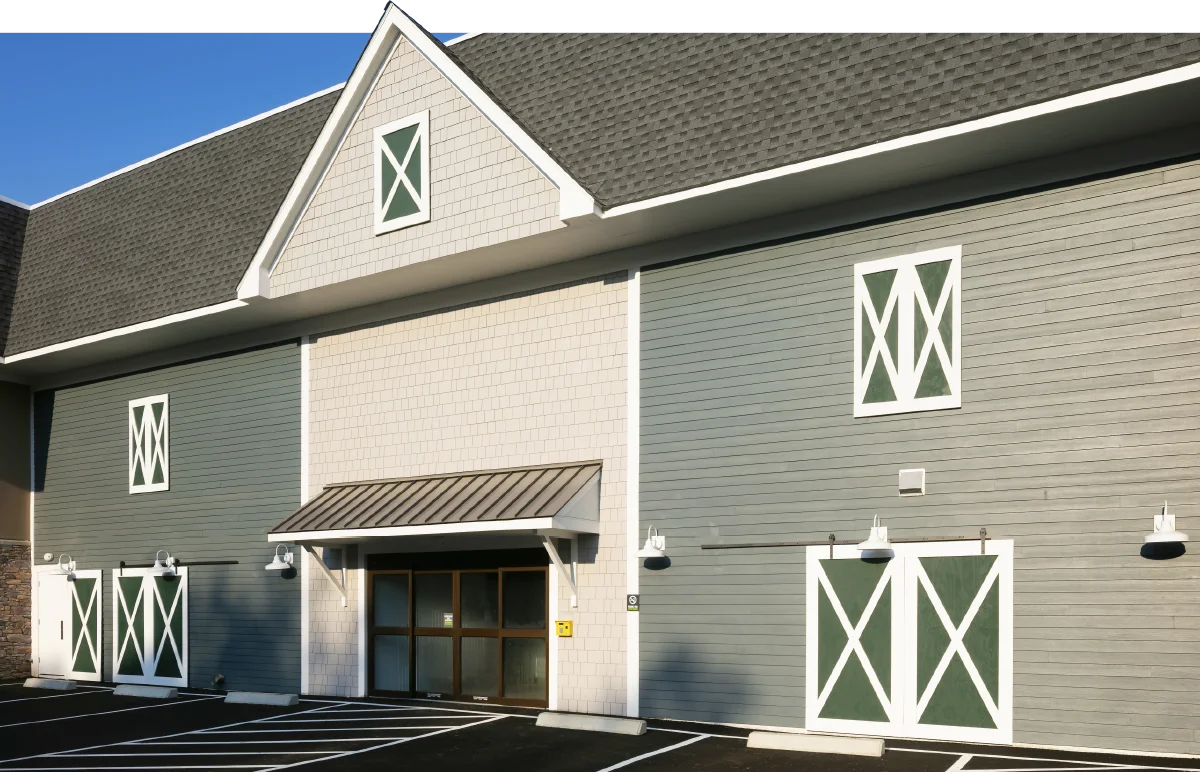

This model of developing beautiful, cutting-edge locations has now become the standard. “The quality of the product has evolved, so the interest in the product has grown to not just a niche product but as a central part of what large capital providers want to be a part of,” he adds. This creates more demand for what DXD does. “It also creates a better end product for the customers themselves and a more suitable product for the neighborhoods they sit in.”
“The daycare didn’t play into the financial outcome of the facility, but it’s the right way to do business,” Sylvester says. It also lets them showcase that DXD is not driven exclusively by profits at the expense of the environment they will share with others. As Sylvester tells us, the experience gave them the opportunity to showcase what DXD is about. “We’re in business to make money for our investors and build successful projects, but at our core, we have several principles that we don’t waver from. I think that Bristol is a great example of how we were able to accomplish all that.”
This is why they thoroughly deserve the title of 2024 Overall Facility of the Year. We’re sure all members of the Bristol community, especially the parents whose children attend the daycare center, agree!
Owner: DXD F1 Bristol, LLC
Management Company: Extra Space Storage
Builder: Jayeff Construction Corp
Architect: Perry M. Petrillo Architects, PC
Security Provider: Access Control Technologies
Management Software: Yardi Breeze
Roof, Door, and Interior Systems Provider: Janus International
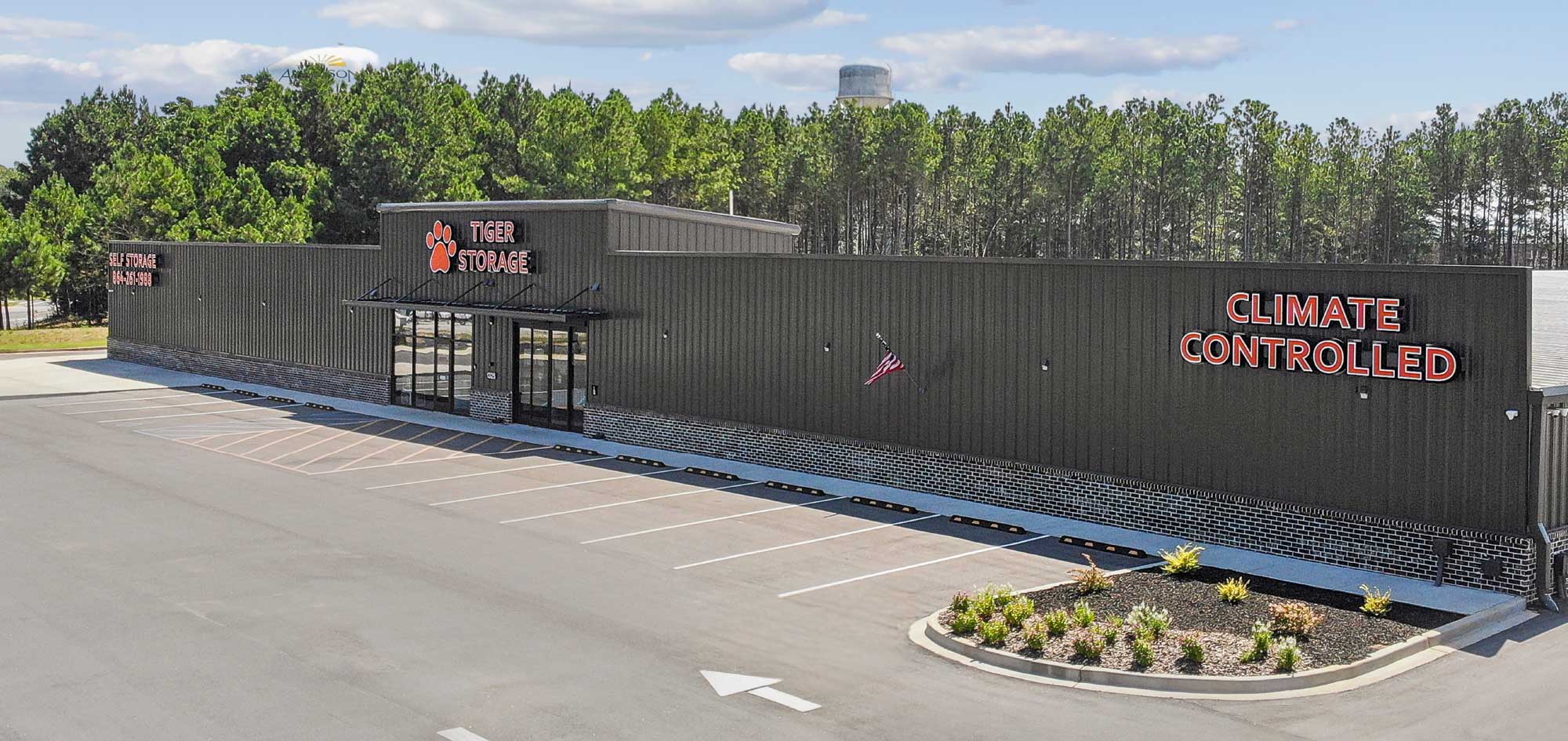
or 20 years, Mike Phillips idly flipped through self-storage periodicals and industry magazines that showed up on his desk as a general contractor and developer. The world of storage piqued his interest, but he never found just the right opportunity to take a leap into the fray. A few years ago, Opportunity Zones were instituted to encourage investment into areas in need of revitalization.
“It incentivized reinvesting gains from a property sale into these areas, something my brother and I had just done,” says Mike Phillips of Tiger Storage in Anderson, S.C. “I found this piece of property I thought was perfect for storage and building. You don’t want to build in an Opportunity Zone just for the fact that it is in an Opportunity Zone. It still needs to meet all the other metrics: good traffic count, number of households around the facility. We did our feasibility reports, created a proof of concept to support it; in the end, I still looked at it from the standpoint of ‘what’s the highest and best use for this property,’ and it worked.”
And so began the MSM’s winner of the 2024 NewFacility of the Year award’s foray into the world of self-storage.
“Being in this business and building for as long as I have, I went into it expecting delays and challenges,” says Phillips. “There are frustrations and emotions, certain times where you don’t know if it is going to happen, but you just have to keep going. The permitting part really got bogged down. We got stuck in an information loop between design, submittals, critiques, resubmitting, getting it reviewed again, more critiques coming back—it was an endless cycle. The stormwater was the biggest challenge for site approvals. Once we got past that hurdle, the building itself was pretty straightforward.”
The building site was originally prepped for a Fred’s Shopping Center before stopping mid-development in 2008.
“They had put stormwater infrastructure in place we tried to repurpose, but it would have been easier if we just started with a clean slate. It added a lot of complexity for approvals. Anderson County was great to work with and held files they dug up from 2007, but we had to piece together why those designers made decisions, where and why they stopped.”
Phillips credits a patient engineer for helping work through all the iterations to solve the puzzle. In the meantime, county agencies had changed, so some prior approvals came from departments that didn’t even exist anymore. Reproving the plans while adjusting to more stringent rules as time passed delayed progress. Finally, it was time for Phillips to get to the fun part.
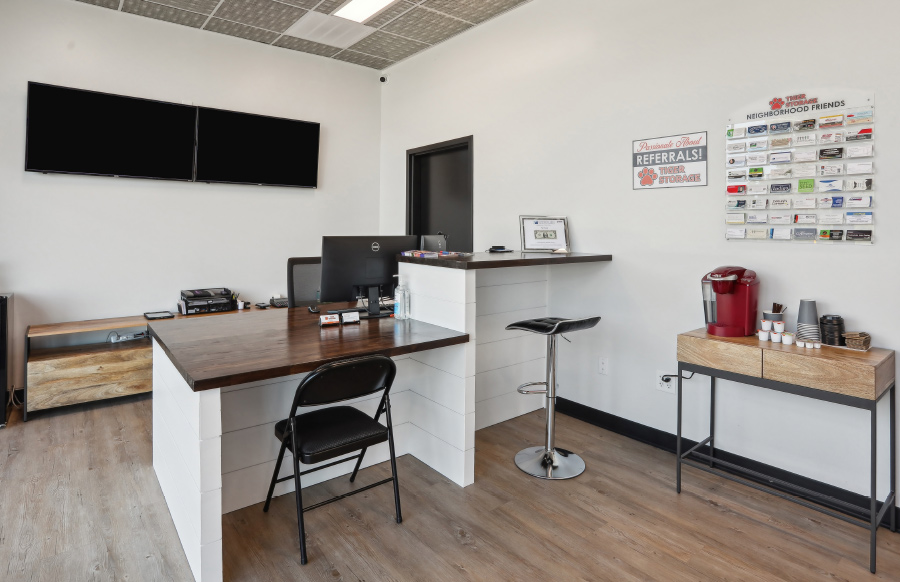
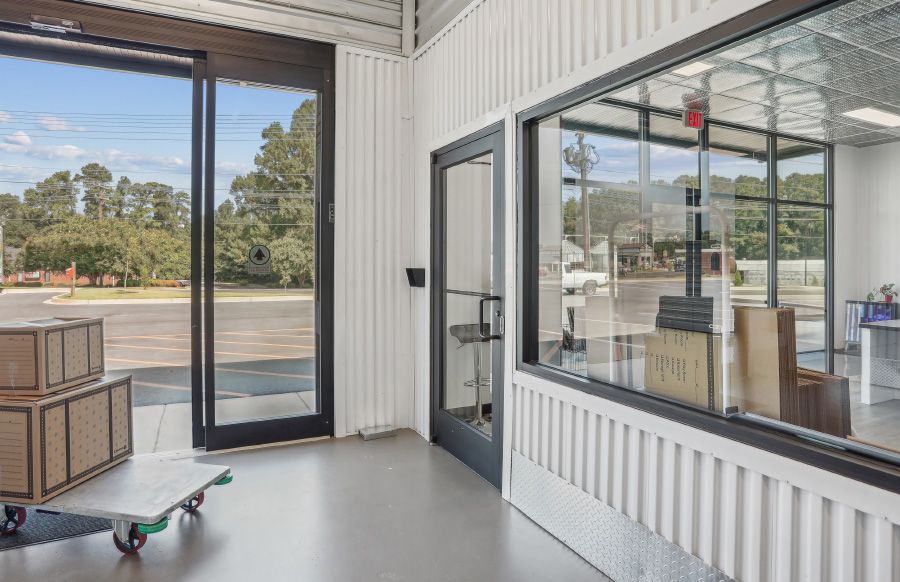
Despite feeling he had a handle on his facility’s creation, Phillips knew bringing in pros to help manage the business would lead to true success.
“Our collaboration with Mike and Tiger Storage was truly exceptional,” says M. Anne Ballard, president of marketing, training, and development services at Universal Storage Group (USG). “From the very first call, Mike’s enthusiasm and commitment to creating a standout facility were clear. His commitment to incorporating unique features, from Nokē Smart Entry to the distinctive Tiger Paws above the units, set his site apart in the market and made the entire process dynamic and highly collaborative. Mike was deeply involved in every detail, consistently brought fresh ideas to the table. His proactive approach to our new store checklist streamlined onboarding and contributed to a smooth, successful launch.”
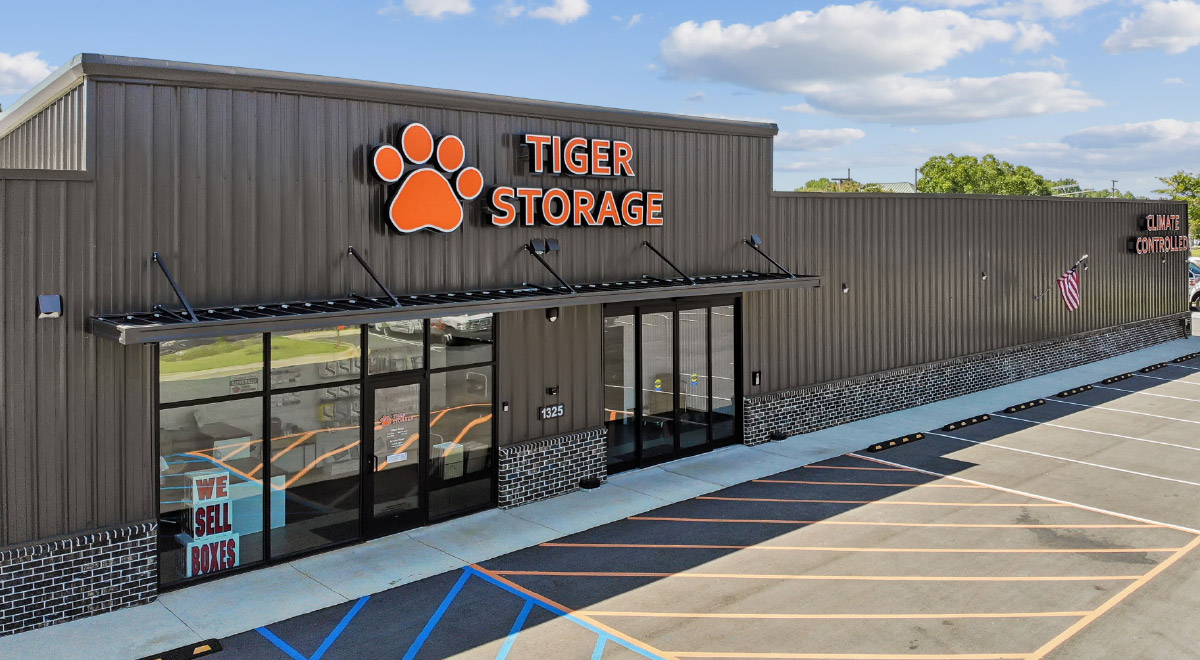
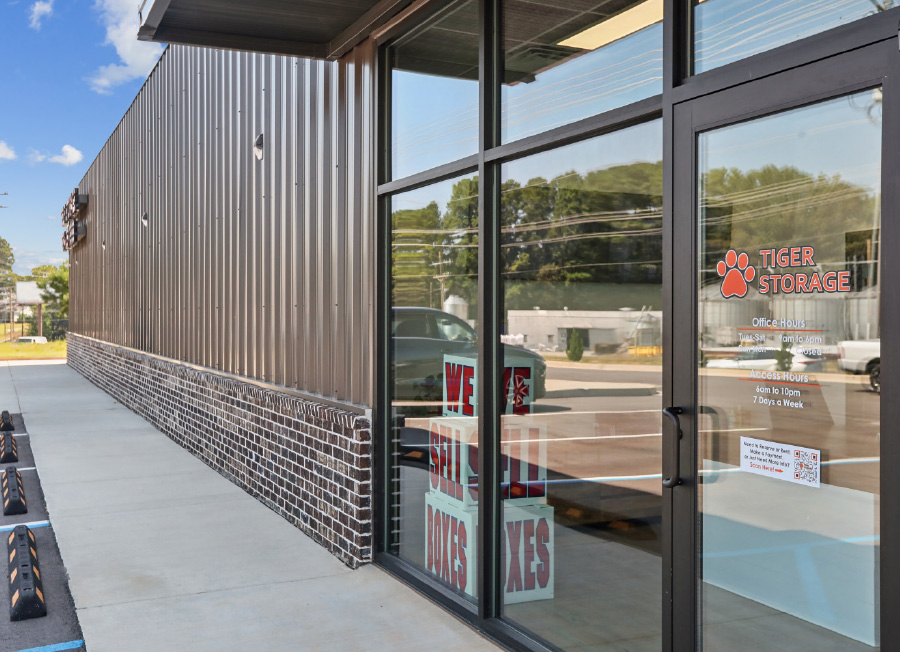
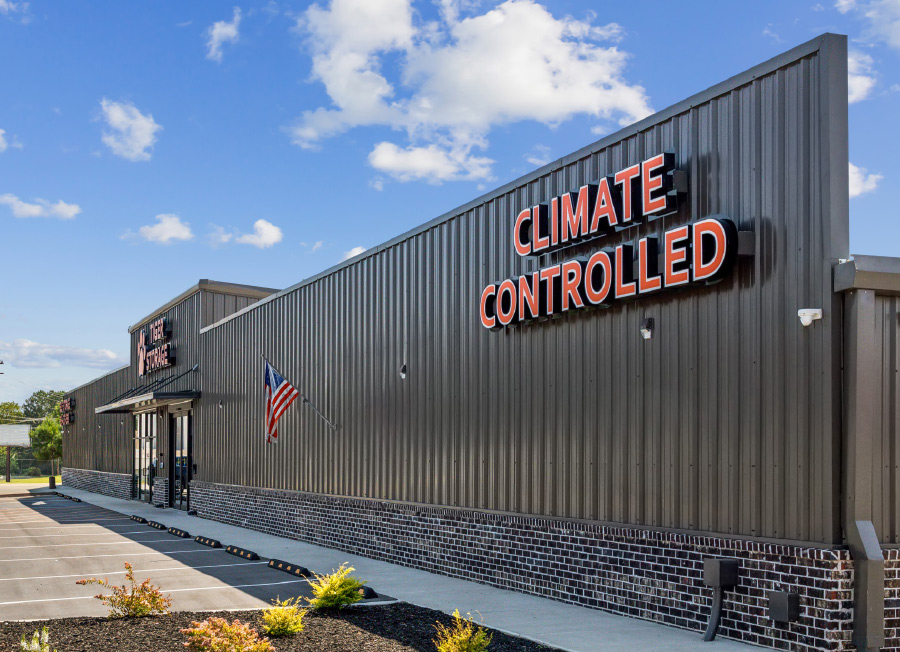
Despite being a well-studied experienced builder with a passion for learning about the self-storage industry, Phillips felt it was a no brainer to hire a management team to take Tiger to the next level.
“The right property management team is crucial to elevating a facility to award-winning status,” says Ballard. “With expertise in market positioning, a top-tier management team ensures a facility stands out by delivering unique offerings like cutting-edge technology and user-friendly interfaces that resonate with today’s customers. The team also maintains close-knit collaboration and strong vendor partnerships, equipping each site with the latest technology and innovative, experience-enhancing services.”
Universal’s partnership with Tiger Storage arrived at a slightly later stage than usual. Ballard designed and developed over a dozen award-winning properties. In this case, Phillips Brothers Contracting had completed the building stage and the smaller trades were starting to do their work. Fortunately, the chosen tech (Nokē Smart Entry, SiteLink, Access Control Technologies) aligned, so the collaboration remained seamless.
“Tiger Storage’s facility is one of the most beautiful projects I have had the privilege to work on,” says Hayden Buettner, East region sales manager for Nokē Smart Entry. “It was important to the Tiger development team to provide technology solutions as part of their offering. Nokē Smart Entry was the perfect fit for their needs, as it offers a seamless tenant experience along with tools that make day-to-day operations at the facility much more efficient. Today’s industry demands more tech-forward solutions that improve NOI and provide self-service options for tenants.”
Far more than just a selling point, the features of the Nokē system added a superior level of security and peace of mind for tenants—a hot topic within the industry.
“There has been a noticeable uptick in break-ins and other security incidences throughout the country,” says Buettner. “Nokē can help mitigate the risk through a variety of means. It starts at the visual level. Potential thieves are creatures of habit and are often looking for specific visual cues to identify which units to target. Expensive disc locks signal prospective thieves to target that unit.”
Nokē eliminates visual cues, as burglars have no way of identifying a Nokē-integrated unit as occupied or not. It also captures activity. allowing managers to pin-point potential red-flag behavior for more proactive security management on site. Motion sensors allow the manager to detect motion inside the unit, as well as automate the lock check and overlocking processes.
“Nokē is a living system, and we are constantly striving to add additional features and value-add solutions,” says Buettner. “In addition to our Nokē ONE Smart Latch solution, we now have a hard-wired option available in Nokē ION. It was important to offer both a battery-powered latch solution as well as a hard-wired lock based on market feedback. We continue to innovate based on the demands of the ever-changing self-storage industry.”
The tech offers customization options to tailor it to each facility’s needs. Phillips was sold, choosing to go all in, but he suggests a phase-in option for those on the fence.
“You don’t have to do all your locks, all your doors,” says Phillips. “You could even start with a few and offer it as a premium option at an increased price. People really do like the functionality. If it’s popular for your market, the locks retrofit. It is very easy to install, just remove the existing lock and replace it with Nokē without any major wiring or hassle involved. If you have an issue, you can call them, and they walk you through it pretty quickly. I’ve been very impressed with their support.”
“The technology within the facility was designed to be as advanced as possible,” says Phillips. “All entrances and exits are automatic sliding doors. Nokē Smart Entry system enables easy access to the facility as well as your unit—all from an app on your phone. A lot of facilities are going unmanned. They’re going remote management, but for Tiger, there’s just something about having somebody there. It makes it special.”
This was another area in which USG proved invaluable.
“Remote operations is a hot commodity in the storage industry right now,” says Rhett Heyward, area manager/vice president of insurance for Universal Storage Group. “There’s certain urban markets, really dense-populated markets or small boutique facilities, where it’s popular. In rural, slower markets, the customer base wants to shake a hand, especially in a lease-up property. If you live in that area, watching this thing being built ground up, you’re not going into this strange new place, walk up to a kiosk, and talk to some animatron. That’s not going to give you any warm fuzzies.”
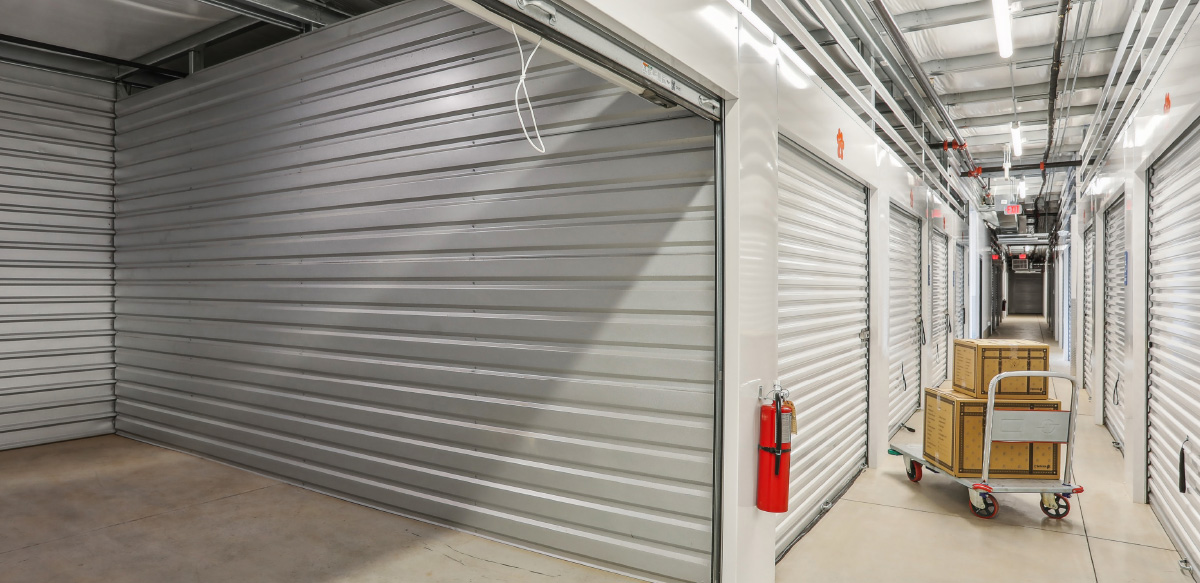
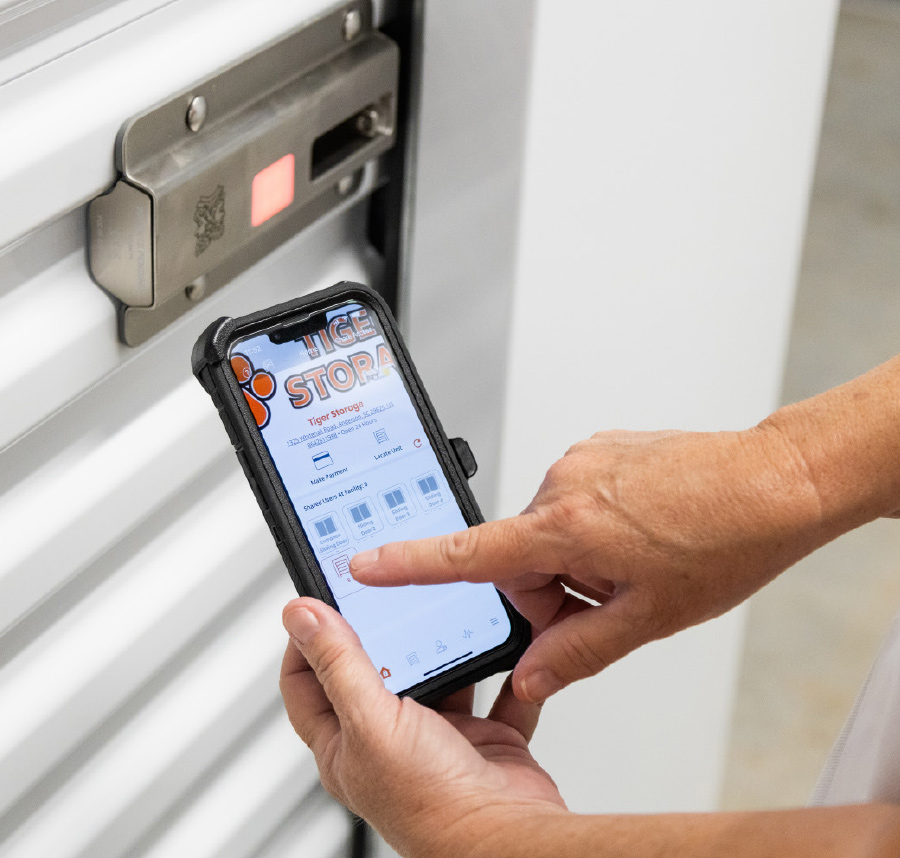
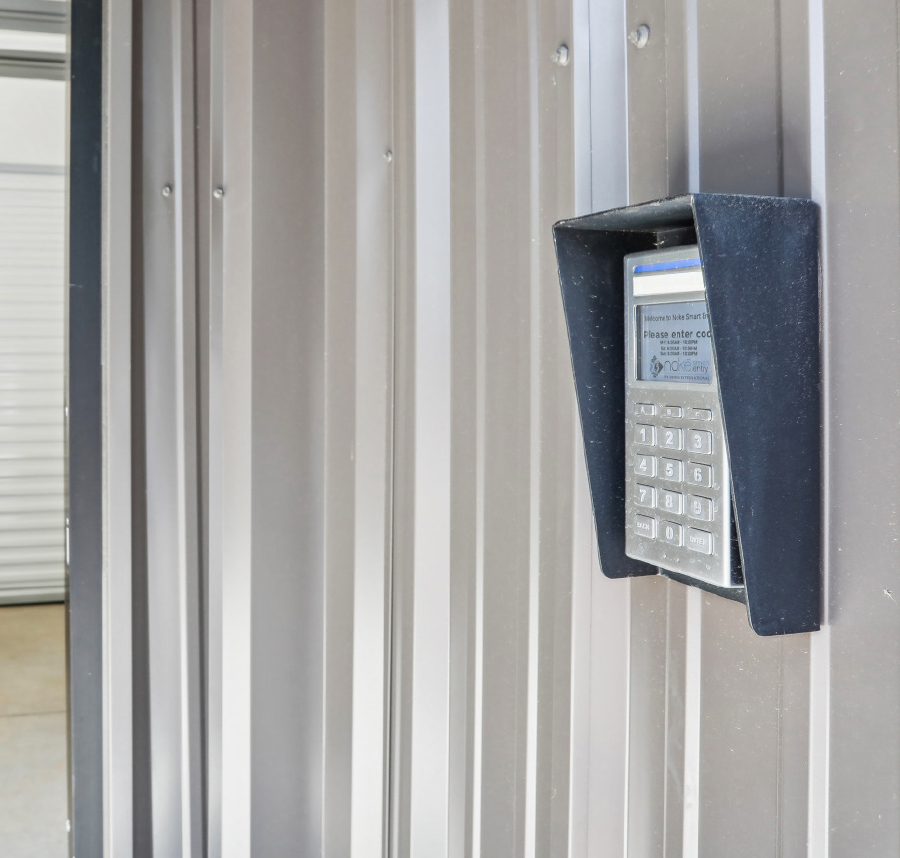
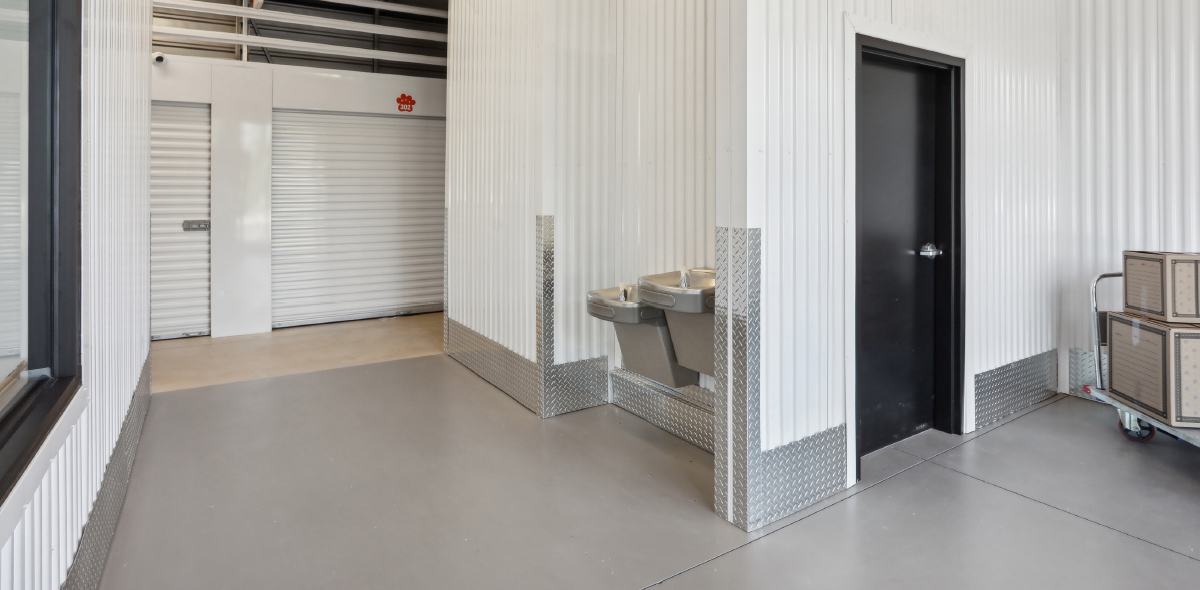
“We aggressively looked for a manager candidate,” says Heyward. “We found a gem in Cheryl Strickland. She’s a seasoned pro with 20 years in the industry, who happened to be local. Everybody in Anderson knows everybody in Anderson. Having a manager who is a local and experienced—we couldn’t have found a better person to open such a cutting-edge facility.”
Again, the recipe of success involves finding the best people to add to your team, and then letting them do their best for the business.
“We had to pay a little bit more for Cheryl, but one of Mike’s better decisions was to let us find Tiger an experienced manager with that personal touch,” says Heyward. “She also had worked with U-Haul before, and unlike some managers, [she] saw it as an asset and a way to reach monthly goals. Every time the phone rings, that’s an opportunity to sell. It might first be for retail items related to moving, but that’s a connection with a potential tenant, and Cheryl didn’t bat an eye.”
Strickland is often seen representing Tiger Storage at community events, participating in local outreach and charities to put a face to the name of the facility. On-site marketing events, like customer appreciation days, and goody bags for holidays and new customers are part of the charm. She even does grassroots social media posts. USG credits this personal touch as a major difference-maker.
“I know our closest competitor is not doing these things, because it’s a manager-less facility,” says Heyward. “They have a good operation over there—it’s a very high-tech, fancy place. But we’re just crushing it because we have an on-site manager.”
“Clemson is such a big part of the community, we wanted to honor that local feel and add a bit of playfulness to it; I think it’s being received by the community very well,” says Phillips. “Universal brings a lot to the table. They are maximizing our footprint on the internet through SEO and web optimization. They’ve dealt with just about every type of marketing scenario and have a lot of good ideas.”
USG not only loves the Clemson connection, complete with unit numbers being labeled on the famed paw print, but USG wants to lead into it on a deeper level by naming hallway streets after famous alumni to further tie the brands. “As Anne says, our secret sauce as a company is the marketing,” says Heyward. “When you have a property near a big university, that’s your anchor. That’s your Macy’s if you were a shopping center. Even little things, like Buc-ee’s [viral sensation gas station/convenience store]—it sounds crazy, but they are opening a Buc-ee’s in Anderson and that will drive in a ton of traffic and can help business.”
Universal also instituted a popular referral system, where no-strings $50 to $100 cash checks (complete with customer images to use for social and marketing) are given to those bringing in Cheryl’s business card, printed with the referral code on the back, regardless of tenancy. Managers are asked to go to local businesses with goody bags and these cards to make connections. They also encourage managers to keep a tablet opened to the Google review page to ask customers if they’d submit a review in the moment, leading to higher standings on Google Map and search results.
“We are a company that still believes in high-touch marketing—shaking hands and kissing babies,” says Heyward. “Nothing beats that type of marketing. Offering such a premium and popular product sells itself and has really helped us manage rates, we’re not just sacrificing dollars to to fill up occupancy. One of the reasons this property has done well financially, even in a lease-up form, is we’re trying to maintain those rates even though the market is all ‘rate battle.’ The clean, new, well-managed property has my best delinquency rate, sitting on a 0.2 percent. We’re really proud of what Mike built, and we’ve tried to stick to those rates.”
Phillips believes presentation is its own form of marketing, ensuring clear well-lit signage and pristine exterior conditions to provide a sense of safety and convenience.
“Tiger Storage prioritizes exceptional branding and curb appeal, upholding high standards in facility upkeep while implementing targeted marketing strategies to boost visibility and occupancy,” says Ballard. “Attention to detail is key, from meticulous operational management and staff training to creating clean, welcoming spaces that encourage customer loyalty. When all these elements come together, the facility doesn’t just meet industry standards, it surpasses them, establishing itself as a leader and earning prestigious honors like the Facility of the Year award.”
“Once we reach our goals of occupancy for Phase One, the current building, we hope to launch Phase Two in March or April of this coming year. That will involve non-climate controlled drive-up storage. We have another two acres of land to expand onto. Hopefully, in 2026 we will launch Phase Three. We will go where the market leads us. It could even mean adding boat and RV storage. Lake Hartwell is huge—a lot of boating, RVs, and ATVs,” he says. “The next storage project we’re doing is a conversion at a textile manufacturing plant. It will mean a lot of repairs and working around the existing features of that building. It’s gonna be a fun challenge … Hopefully we will have that facility open first quarter of next year.”
For the sake of his future tenants and community members, we certainly hope this talented tiger doesn’t change his stripes.
Owner: Michael Phillips
Builder/Developer: Phillips Brothers Contracting
Management Company: Universal Storage Group
Architect: Jason Perry, Storage Design Group
Security and Door Access Provider: Nokē Smart Entry by Janus International/Access Control Technologies
Management Software System: SiteLink
Doors and Interior Systems: Janus International

ake a challenging self-storage construction site with little footprint to spare in densely developed and populated downtown Los Angeles, add typically extensive jurisdictional permitting requirements, pandemic-induced supply chain and other delays, and two of the wettest consecutive winters in Southern California’s history, and what do you get? In this case, you get an award. MSM named the Extra Space Storage facility at 2515 S. Broadway in downtown Los Angeles as its 2024 Facility of the Year winner in the construction category.
This Extra Space Storage facility ironically allowed for nearly no extra space for staging construction. The three-story building with a basement occupies almost all the land it was built on, which is less than three-fourths of an acre. It fronts two streets and has immediately neighboring buildings.
In its written submission for consideration of the award, the project’s architectural firm describes the facility’s location on the corner of LA’s South Broadway and West 25th Street and near the 110 and 10 freeways as “easily accessed by commuters and locals alike.”
Ryan Jordan, executive vice president of the project’s construction contractor, Monarch Construction Management Inc. of Newport Beach, Calif., says the project was made challenging first because it’s in densely developed downtown Los Angeles. Along with very little space to stage construction, “not one square foot of extra site to lay anything down,” the project required vertical shored walls on all four property lines for the basement.
“When confronted with a small site, the immediate reaction is to go vertical from a design perspective,” according to the written submission for the award. “The subject site was no different in this regard. Adding to the complexity of limited site area were the height limitations (due to proximity of residential) and the parking requirements that further challenged the design team to think outside the box … or in this case, under the box.”
Jordan says Monarch Construction “knew what we were getting into” with the project. “We build multistory projects, self-storage with covered basements in urban infill development sites quite often,” he says. “This is a typical challenge for us but nonetheless a challenge.”
And that thing everybody talks about but nobody can do anything about also made the project much more challenging than usual: two consecutive winters of nearly record wet weather.
“Us California guys don’t act like we’re prepared for weather,” Jordan says, “especially when you dig a basement project. … When you’re effectively digging a hole, you’re not rerouting much around it. You’re going to have to fight your way through it because it’s all sitting on top of you.”
The project’s owner and design team chose to include a basement to increase space for rentable square footage because of the site’s tight footprint and the city’s parking requirements. These included standard, accessible, and compact parking spaces and electric vehicle charging spaces.
Monarch Construction President Tom Stocksdale says the city required a basement-level rock pocket drainage and pump system for the project “very late in the game.” It was designed to control anticipated groundwater problems. Monarch had to design the system as quickly as it could. The team “dug in their heels and got the job done.”
But Stocksdale says the toughest problem they faced was that the city delayed the start of excavation and shoring because of permitting issues. And the rain started and continued for months.
“So, you’ve got a building that’s wide open, and you’re trying to finish it, but you don’t have a completed roof on it yet,” he says. “We tried to keep everything as dry as possible … and make sure it drained properly.”
Another challenge was that the COVID-19 pandemic caused the City of Los Angeles, along with so many other jurisdictions and companies, to function while short staffed, he says.
Concrete also became harder to get. Monarch had to schedule big pours a week to two weeks ahead of time and give the supplier exact dates for it to arrive. If Monarch was unable to make the pour on the specified date, they would have to face another delay.
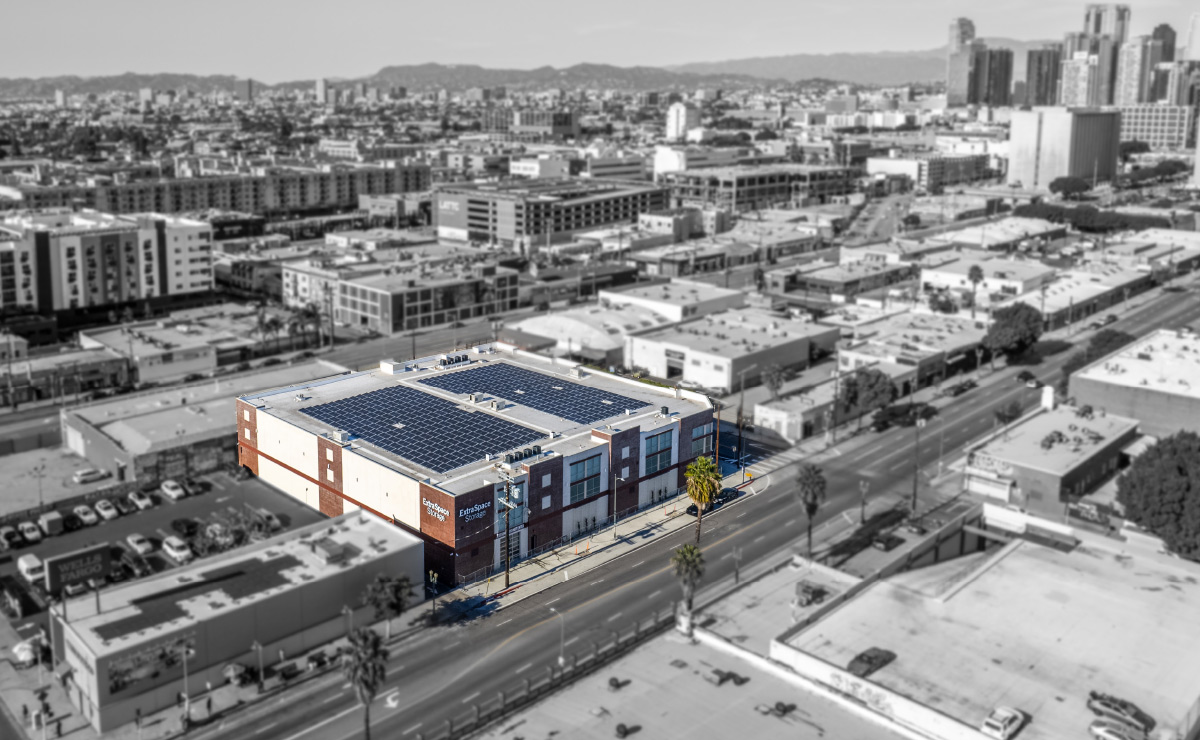
Parking dominates the facility’s ground floor, but it also has some drive-up storage units, which are in high demand in that market area. The facility’s first floor is 15 feet high to allow for vehicle clearance. This height enabled the inclusion of lockers above the standard units, “a cost-effective solution for the local student population.” Music and Wi-Fi are available throughout the site.
Developers must conform to jurisdictional permitting and code requirements where they build. This facility’s project manager, Marcelo Quiroga with San Clemente, Calif.-based Jordan Architects Inc., says he and his team had to supply written project plans to 15 different city departments. The city required venting of methane on the project, for example, as it does with most projects. Despite these requirements, the facility was able to quickly generate revenue when completed.
The design was constrained on floor-to-floor height, Quiroga says. The city allowed him to exceed the height limit for elevators and stairway enclosures. He, too, has worked on similarly challenging projects, including one in San Diego that required methane venting and was close to a freeway, which complicated the retaining walls’ design and construction.
The city’s environmental “green” code requires the facility to include indoor bicycle parking spaces for employees and tenants, Quiroga says. The design called for a first-level, 10-by-30 enclosed and locked unit with parking racks for 10 short-term and 11 long-term parking spaces. Two showers were also required.
The facility includes solar panels that help supply power to run it. But another complication was that the Los Angeles Department of Water and Power would not inspect the solar system until the main electric meter was put in place, he says. As of October, there was an ongoing delay in getting the solar system operational.
All the facility’s lights are motion activated with timers that turn them off during inactive periods to save energy. The climate-controlled facility keeps the temperature typically between 55 and 80 degrees, intended to maintain comfortable temperatures while saving energy.
The client was concerned about the risk of the building getting tagged with graffiti, which is a common problem in that part of Los Angeles, so the building was designed with a brick veneer to blend in with the nearby University of Southern California’s brick buildings.
Graffiti “brings a nightmare for us,” says Quiorga. They applied a coating to protect the veneer. It makes cleaning off graffiti easier because the paint can’t attach to the surface as well. But pressure washing the surface might make it necessary to reapply the protective coating.
Quiroga is thinking of a way to eliminate the defacing of property with graffiti on a future project. His idea is to create a space on a project’s grounds where graffiti artists could practice their art without breaking the law, with the client’s approval, and maybe even hold a graffiti contest.


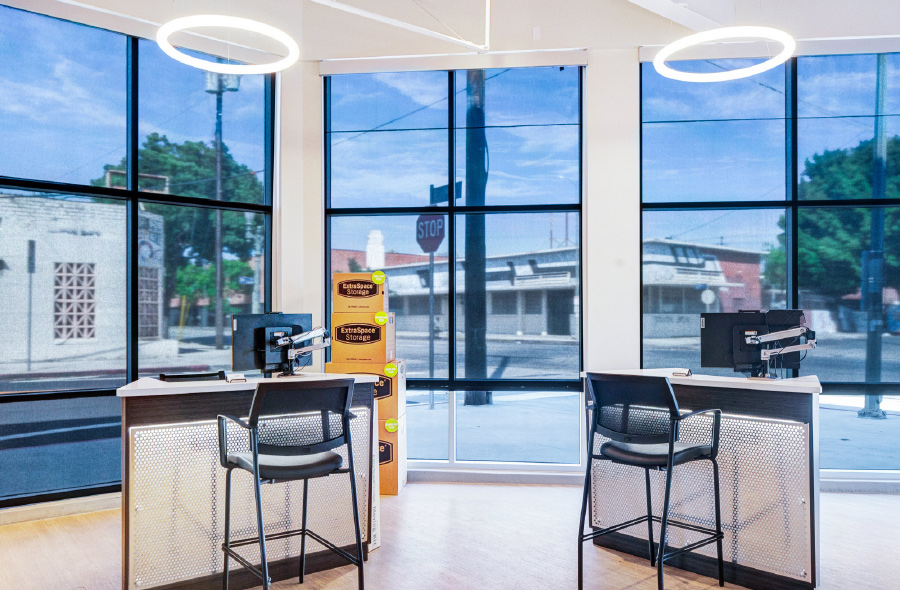

“It’s really a marvelous property,” Sparnicht says. “I’m not surprised that it’s getting recognized. It’s a beautiful site and a terrific market that’s dense and growing.”
Given the facility’s dense urban location, it has state-of-the-art security. “It’s the partners’ decision as they’re building the site,” Sparnicht says. “Our job as the operator is to provide guidance and feedback. The site is very secure. … You drive into the site (from West 25th Street) and there’s a parking lot for customers to park and access the office. There’s a high-speed door into the facility grounds. It’s becoming common practice.”
The facility has a coded-entry gate that requires each tenant to enter a personal code. It also has individual door alarms and multiple surveillance cameras with display monitors in the management office.
Its office has a modern design with two service podiums and abundant natural lighting from exterior windows. It also has a “small retail center, complete with packing supplies, as well as a coffee bar and refrigerator,” which “further exemplify the welcoming atmosphere,” per the entry information.
The facility’s brick exterior, designed to mirror the “architecturally beautify” USC campus, helps set the facility apart from its competition.
“That whole corridor in south Los Angeles is in transition,” Sparnicht says. “West from the site, there’s a lot of vertical housing and apartments and a lot of student housing going in. There’s an expectation that storage has a design element. Cities do want these structures to blend in and add architectural interest in the area.”
He says the site “has really exceeded expectations.”
The facility’s quick lease-up, achieving 86 percent occupancy within five months from opening, “is a testament to the facility’s superior design, security, and convenience,” the submission document states, “making it a valuable asset for the surrounding community. Ultimately, this is a timeless facility that will address the needs of residents and businesses alike for years to come.”
“We’re proud to have it on our platform,” Sparnicht says.
Extra Space Storage is the largest operator of self-storage facilities and the largest third-party self-storage management company in the United States, according to its website. The company was founded in 1977. It has more than 3,500 properties as owner, operator, or both in 43 states and Washington, D.C. Its facilities comprise about 2.5 million storage units and more than 280 million square feet of rentable space.


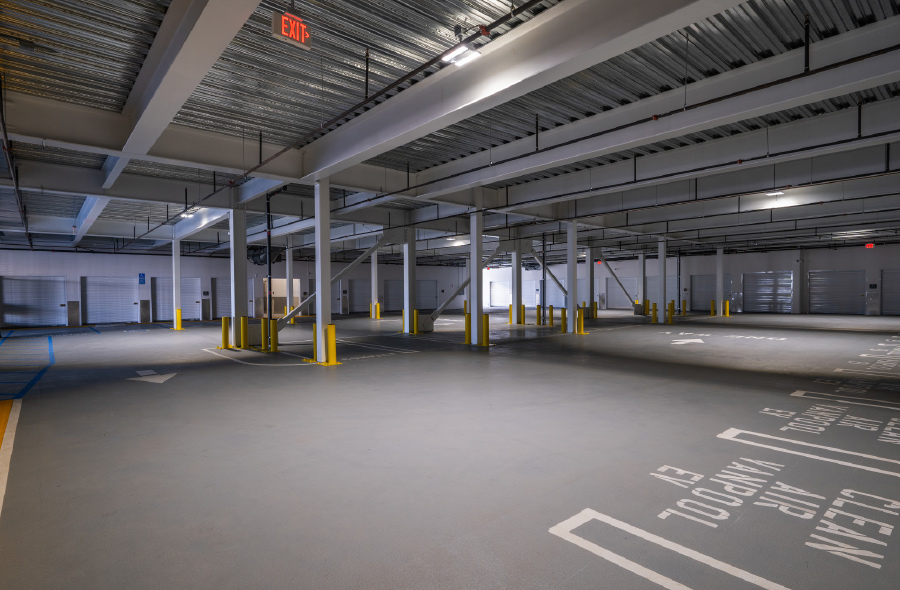


“We like to develop projects that can be placed in the proper context of the surroundings,” Staley says. “We found considerable use of brick on the USC campus. We knew we’d have a lot of students. We wanted it comfortable and familiar.”
The edges of the facility’s grounds have landscape features that are 10 feet to 15 feet tall. Staley calls them “green screens.” They are about 12 feet by 15 feet and sit at intervals along the façade along two streets. They are intended to “humanize” the facility.
The normal process of getting the city’s approval for the project was delayed by the pandemic because city employees were working remotely.
“It prolonged the approval process, to be sure,” Staley says.
He encountered no opposition to the project from its neighbors or anyone else.
“We communicated with our immediate neighbors to let them know what was unfolding,” he says. “We took the good-neighbor approach.”
Owner/Developer: Staley Point Capital
Construction Company: Monarch Construction Management Inc.
Management Company: Extra Space Storage
Architect: Jordan Architects Inc.
Project Manager: Marcelo Quiroga with Jordan Architects
Security System: PTI Security Systems
Doors and Interior Systems: Janus International
Roof: TPO – GAF EverGuard
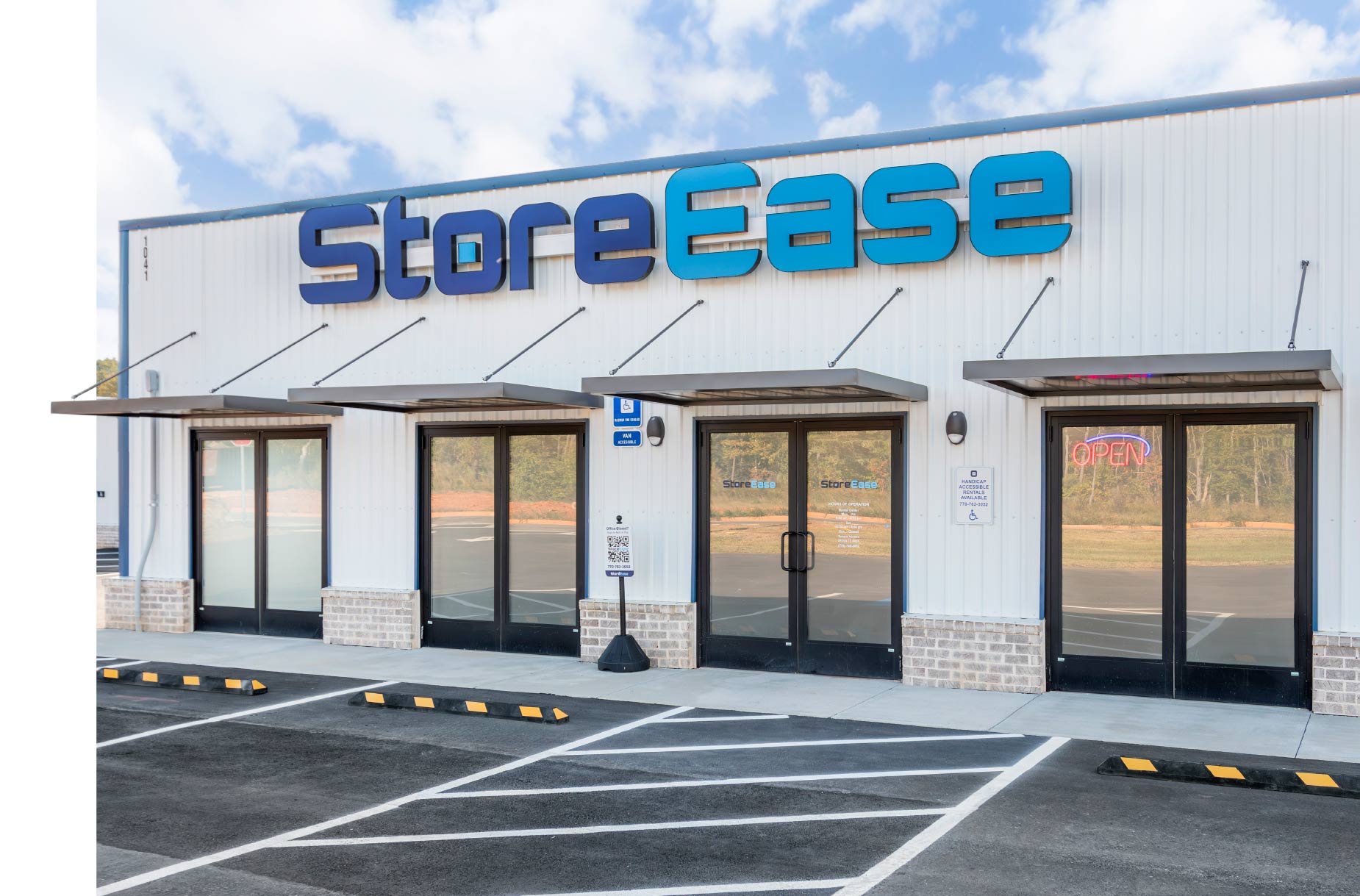
n a world where technology often overshadows personal interaction, StoreEase is making waves in the storage industry by merging cutting-edge technology with exceptional customer service. Located on Rosewood Circle in Loganville, Ga., which is 36 miles east of Atlanta and part of the Atlanta metropolitan area, StoreEase is not your average storage facility; it’s an innovative shift in how we think about storage solutions. With its innovative Virtual Management Operating System (VMOS) and virtual managers, StoreEase is redefining convenience and accessibility in self-storage.
StorEase Loganville’s journey began in 2018, when local entrepreneurs Denny Hewell, a commercial construction expert, and Kris Rosendahl, a home builder, teamed up for their first self-storage project. They acquired a prime plot of land near a growing housing development along Highway 78 that offers both excellent visibility and easy access—two necessities to adequately serve the expanding, surrounding community, which includes the neighborhoods of Monroe, Between, Grayson, and Graystone.
The implementation of this system has proven effective. Since its inception, StoreEase has reported a remarkable conversion rate of 72 percent for new leads. “We have someone in the office from 8 to 6 all day, every day, in terms of the virtual presence to greet new customers and existing tenants,” says Boyd. This model not only expands accessibility but also creates a welcoming atmosphere for both new and returning clients.
For customers who choose to go inside the office, they are (almost instantly) greeted by a virtual manager who appears on screen at the rental counter. Like motion sensing lights, sensors within the rental office activate the initial greeting that welcomes the visitor to the facility. Following the greeting, an “in-call transfer” is completed, routing the interaction to one of StoreEase’s virtual managers.
According to Boyd, tenant notes within the management software are used to provide a tailored experience to each customer. Customers can build rapport with the company’s virtual managers as well thanks to “force ranking” within its software that connects customers with the same virtual managers they’ve communicated with during previous on-site interactions. StoreEase’s virtual management platform also provides a streamlined rental process with its trademarked move-in app that allows for a quick 2 Minute Move-In® at any StoreEase location. The app is located in StoreEase’s Customer Rental Centers as well as on its website for after-hours rentals.
Feedback from customers reflects this commitment to service. The facility boasts a five-star rating on Google, with 36 reviews received since it opened in August of 2023, and most of those reviews praise the facility’s friendly and helpful virtual staff. Boyd mentions reviews like, “Bailey was very friendly and helpful,” and “He was the best customer service rep I’ve dealt with in many years,” both of which showcase the impact of their virtual management approach.
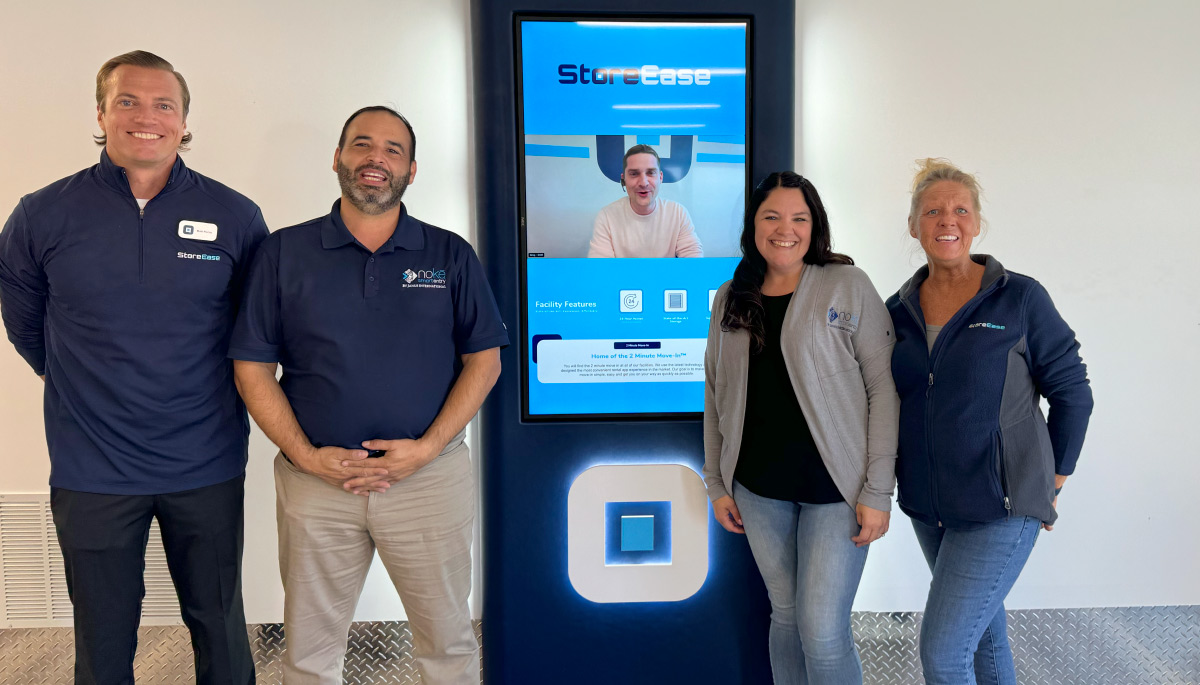
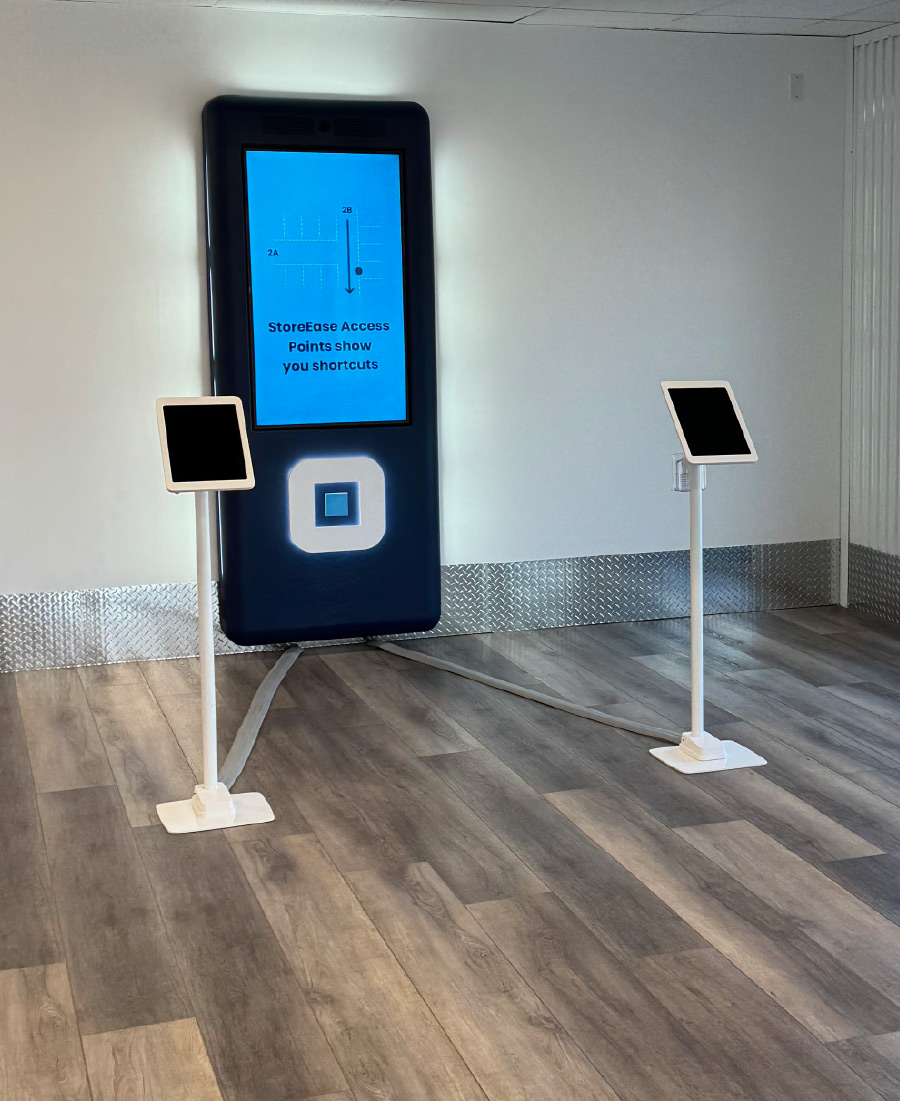
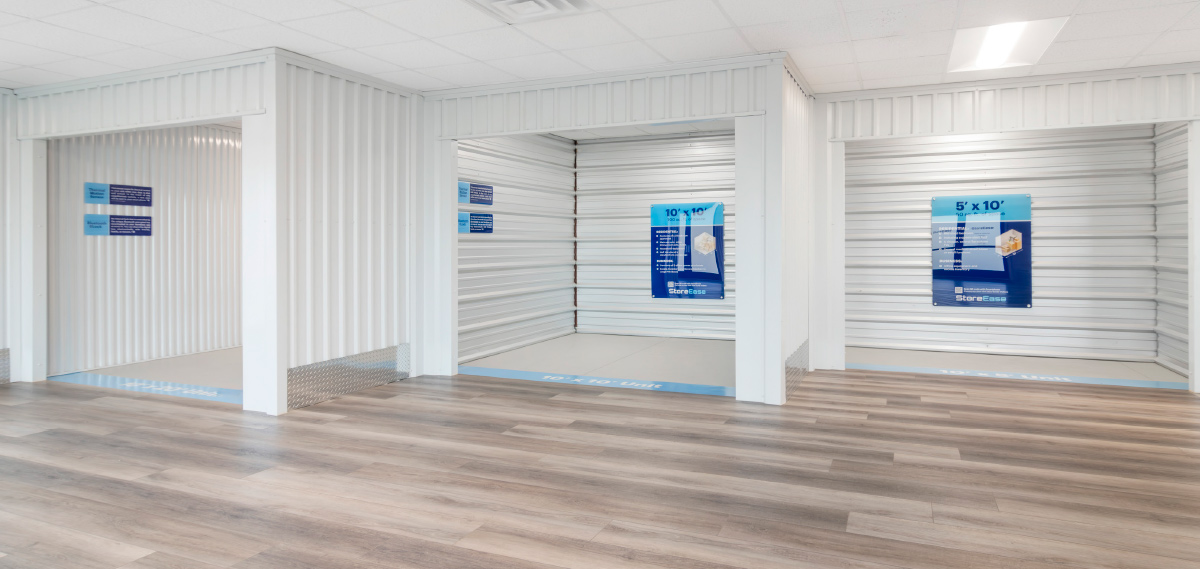
This hybrid model is especially important in Loganville, which Boyd describes as a “fourth-tier market,” where older facilities and lower service levels are the norm. StoreEase differentiates itself through its modern amenities and attentive customer care, providing a compelling reason for customers to choose them over traditional storage options.
The exterior design features a clean, modern aesthetic with brick accents around the base, white walls, and distinctive blue doors, embodying the StoreEase style.
Constructing StoreEase, however, came with its share of unique challenges in the beginning, particularly due to the area’s notorious Georgia clay. The bright orange-red stains left by the clay posed a significant hurdle during construction, especially against the facility’s white exterior.
Continuous rainfall only added to the difficulty, requiring extensive scrubbing to remove the stains and achieve a polished finish. Additionally, the weather delays impacted other parts of the project, such as the pouring of the asphalt. Despite these setbacks, the construction team pushed through, and the result is a stunning facility featuring white walls, brick accents around the base, and the signature blue doors that define the StoreEase brand.
At the heart of the facility’s innovation is the Nokē Smart Entry system, which integrates seamlessly with StoreEase’s virtual customer service and offers a streamlined and efficient storage experience. The Nokē Smart Entry system eliminates the need for traditional access gates, replacing them with intuitive keypads on all access doors. This technology allows customers to manage their storage experience with ease, using their smartphones to unlock units and navigate the facility. StoreEase Loganville has employed a multifaceted marketing strategy to establish its presence and connect with the local community. From the outset, the facility leveraged digital tools such as Google My Business and online reviews to build awareness and attract customers. Early marketing efforts included special promotions and a prominent billboard at the end of the driveway, capturing the attention of passersby and potential tenants.
StoreEase Loganville stands as a shining example of modern self-storage innovation and community-focused design. The facility’s seamless integration of advanced technologies, such as the Nokē Smart Entry system, with its visually striking and functional design, reflect a profound commitment to enhancing the storage experience. StoreEase Loganville not only revitalizes the self-storage industry but also enriches the local community.
In addition to electronic keypad access and keyless entry, the facility, which is accessible 24/7, utilizes digital video recording as an advanced security measure. The property is also well lit and offers tenant protection plans.
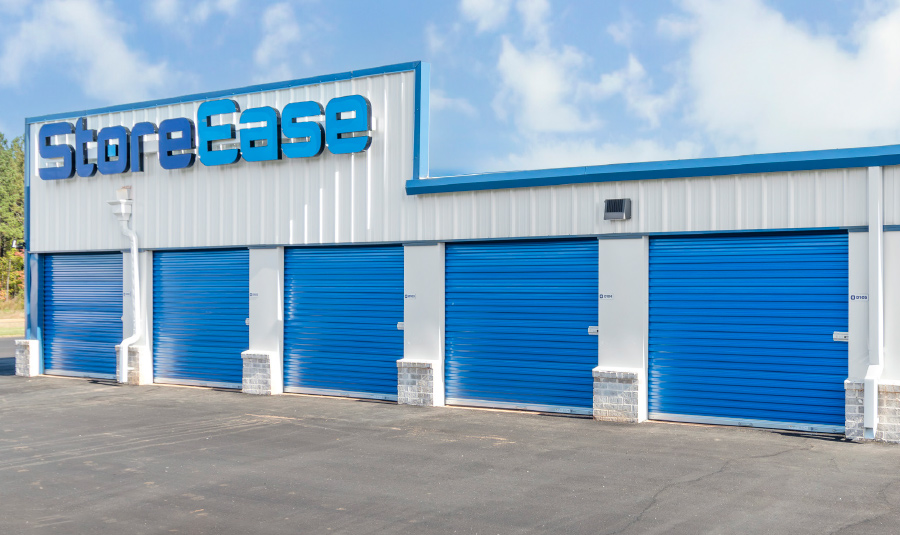
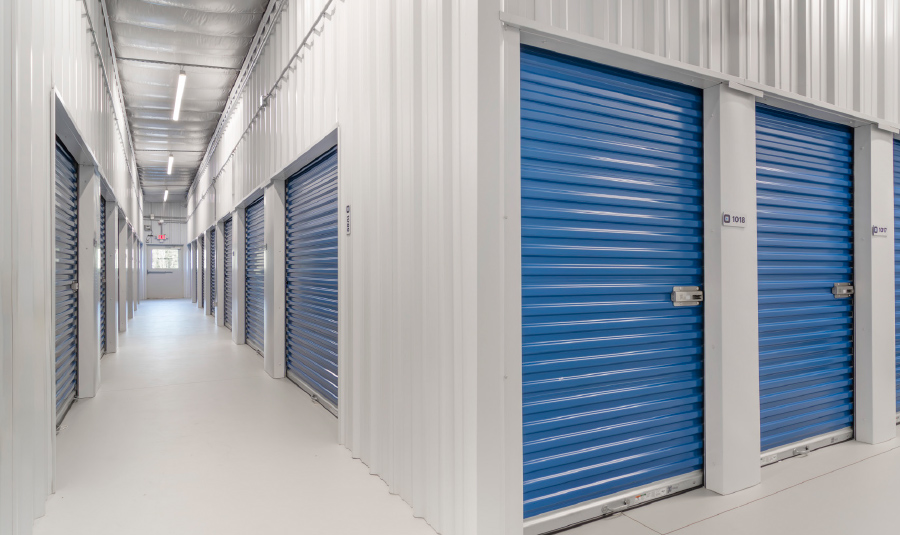
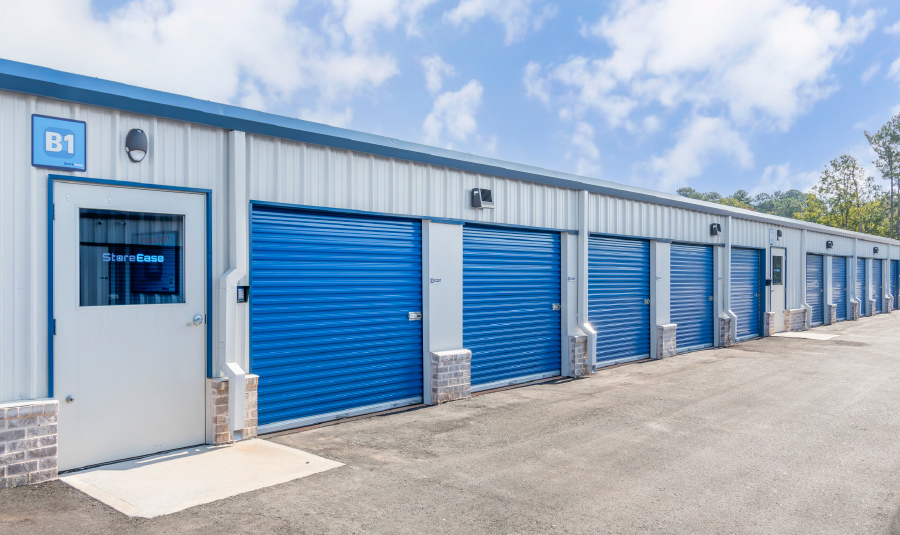
As for the single-story site’s 338 units, StoreEase Loganville has a sufficient assortment: indoor units that are heated/climate controlled and drive-up units. They are available in the standard sizes, from 5-by-5s to 10-by-20s, and total 37,250 rentable square feet of storage space.
Boyd is also eager to introduce new technologies to enhance the customer experience further. However, he recognizes that with any technological advancement comes the potential for issues. He finds similarities with other consumer electronics, where “every technology … has bugs, has things that need updates.” Having a robust customer service framework is essential for addressing any problems that may arise.
In a landscape where technology often overshadows personal interaction, StoreEase reminds us that a human touch is still vital in building long-term customer relationships.
Owners: Denny Hewell and Kris Rosendahl
Management Company: StoreEase
Builders: Denny Hewell and Kris Rosendahl
Management Software: StoreEase
Architect: SCB Construction Group
Door and Interior System Provider: Janus International
Security Provider: Nokē Smart Entry by Janus International

n 2024, it’s become commonplace to accept that money is what drives the world. You need it to live, and the more financially secure you are, the higher your quality of life. However, there’s one thing that too many corporations seem to put on the back burner as they see that bottom line increase: making sure that they’re not doing it to the detriment of the planet.
Enter Green Storage Hamilton, the 2024 International Facility of the Year. Not only do they offer practical storage solutions to their tenants, but they’ve mastered the art of intertwining history, modern technologies, and sustainability. They’ve also managed to develop a strong company culture, despite the fact that many of their team members are scattered across multiple locations throughout southern Ontario.
No matter how you look at it, Green Storage Hamilton has managed to hit it out of the ballpark in all areas of their business; and they have done so in a way that benefits everyone who comes into contact with them: employees, clients, the community at large, and even planet Earth, which is why they’re the 2024 Facility of the Year international winner.


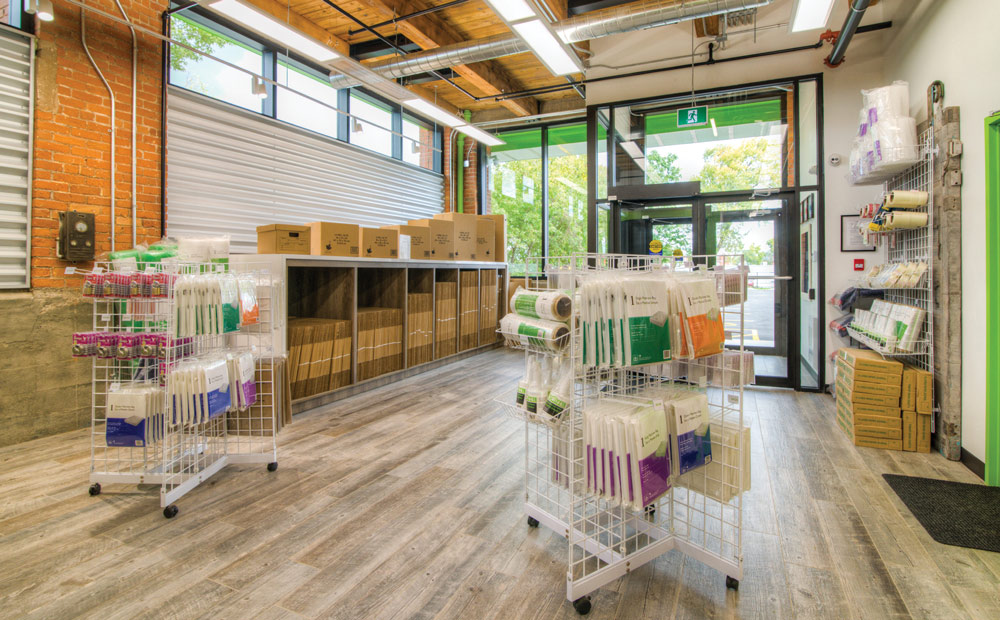
Almost a century later, in 2017 to be exact, Green Storage Hamilton bought it to turn it into a self-storage facility. On its face, it could’ve become the Disney World of storage facilities: It boasted 270,000 square feet over three stories. But providing air conditioning and heating to such a gargantuan structure would mean leaving a significant carbon footprint, and this was the opposite of what the ownership team wanted to achieve.
“We’ve always been mindful of how business decisions can impact the environment,” says COO Jeremy Freedman. “We realized that self-storage has a unique opportunity to contribute to sustainability efforts, whether through solar power, geothermal heating, or partnerships, like our tree planting initiative.”
So, the construction company, NetZero Construction, modified the layout to a more functional 130,000 net rentable square footage.
The initial phase of this project started with an assessment of the then-existing structure to determine its viability for conversion. During this process, they discovered soil contamination and hazardous lead and asbestos. This stalled the project since remediation required a quarantine.
Once the renovations were green lit, energy efficiency remained a central focus, so the structure was insulated with high-value spray foam to minimize energy loss. They also installed solar panels and geothermal heat pumps and added automated lighting and climate control to ensure a comfortable, well-lit environment while maintaining energy efficiency.
They also did something else that showcases their unwavering commitment to promote sustainability, even among their customers: They have a community garden that provides them with fresh vegetables.
“You should see the smiles on our tenants’ faces when we share the herbs and vegetables we grow,” says Freedman. “We have them across most of our locations, and our team has done an outstanding job maintaining and nurturing these gardens. We encourage anyone who’s in Ontario to visit any of our sites during the summer to experience it for themselves and maybe even take home some fresh produce.”
It’s noteworthy, however, that despite modernizing the facilities to reduce their carbon footprint, they have remained mindful of being proud of the building’s history. This is why they decided to keep the original wooden beams, the original heavy-duty door in the main office, and the original humidifier. “These historic features are special because they tell a part of the building’s story,” Freedman says. “We also have a chronological timeline displayed around the building, sharing the full history of what the facility was like over the past 100 years before it became a storage and office building. These elements contribute to the unique character of the facility.”
The goal was to preserve the character of the building while upgrading it to meet today’s environmental standards. “This historic building offered a unique chance to create something special for our clients and the community we serve,” he says, “blending heritage with modern functionality.”

And since they don’t require long-term leases to rent their products, they are also accessible for entrepreneurs and small businesses, too.
At the end of the day, niches make sense in certain circumstances, but when you’re providing solutions that can benefit a wide range of people, it makes sense to go ahead and make life easier for all of them.
Because sustainability is the name of the game, the company also ensures all employees have a good work/life balance. This is why they have an annual Mental Health Day, an internal company holiday when they close all locations to give everyone a breather so that they can focus on supporting their overall wellbeing.
When they are working, everyone is valued and provided with all the resources they need to do their job successfully. “At the core of our culture is the belief that no one is bigger than anyone else,” says Freedman. “We win as a team and lose as a team. Our commitment to supporting one another means that everyone pitches in and lifts each other up. This spirit of collaboration and mutual respect is what makes Green Storage such a great place to work.”
And this is one of the things the leadership team at the company strives to consistently achieve. “Like many industries, finding and retaining top talent is always a challenge, but it’s one that we take seriously.” It’s also why many of their team members have stayed with the company long term, an achievement that attests to Green Storage’s commitment to investing in a strong and motivated workforce.
“We take great pride in managing an exceptional team, watching them grow and succeed, and working together to create a positive experience for our clients.”



This tailored approach includes finding the perfect solution for their specific needs, taking into account unit size, and providing advice on ancillary products. “By focusing on service and expertise, we strive to make every interaction as smooth and positive as possible to help our clients to feel cared for throughout their journey with us.”
In addition, Green Storage offers tenants a comprehensive online account system that is mobile friendly and accessible via smartphones. Through the platform, tenants can reserve units, enter into rental agreements, make payments, and manage their accounts.
This is only the tip of the iceberg. “What truly sets us apart is our state-of-the-art access control system,” adds Freedman. “Using your smartphone, you can open loading bay doors, interior doors, operate elevators [and] share access with coworkers, friends, and family; and you can use it to lock or unlock your storage unit.”
Not only do clients get end-to-end control when accessing their units, but they get top-of-the-line security as well. “Tenants also get complete visibility over the activity in and around their storage unit,” says Freedman. “It’s all about convenience and peace of mind, knowing that you have access to your unit with just a tap on your phone.”
But it’s not just tenants who are keeping tabs on the facilities. Green Storage is equipped with 24/7 HD security cameras and motion detection systems, offering real-time protection. “We’re committed to keeping all of our clients’ belongings safe with the best technology available,” he says.
They’re also well aware that they are able to consistently surpass their lease-up targets thanks to their team’s dedication, as well as the quality of their product offerings and the cutting-edge technology for tenants to access them. “While lease-up periods are always challenging, our disciplined approach and consistent focus on client experience have enabled us to thrive, especially with our new builds and expansions,” he says. “But no matter what we go through, I’m inspired by seeing our locations thrive and fill up, as well as witnessing the overall growth of the industry. Innovation has been remarkable, particularly over the last five years; and it’s exciting to be part of an industry that is constantly moving forward while also embracing sustainability.”

Something else that makes these hurdles manageable is ensuring that they stay connected as a team, as well as safeguarding their practices of providing a high standard of service for their clients. This often requires extra focus and strategizing, but it always remains at the top of their priority list.
Then there’s the fact that green energy regulations and sustainability requirements evolve periodically. Juggling all these priorities means constantly being on their toes and adapting when necessary. It’s a shining example of Charles Darwin’s survival of the fittest theory, except that they’re not exclusively surviving. With each passing year, they’re thriving and staying at the forefront of the industry.
Regardless of the challenges they face, the common denominator remains that they love the self-storage industry as a whole. “What I love most about this industry is the incredible variety of ways we get to help people,” Freedman says. “Whether it’s offering someone peace of mind during a move or a difficult time in their life, it’s rewarding to provide such a valuable service.”



One of their favorite community initiatives is their partnership with the local professional lacrosse team in Hamilton. “One of the perks we love is offering front-row seats to our loyal clients,” Freedman says, highlighting how genuinely proud he is of the work they do. “It’s a great way to show our appreciation while fostering community connections through the shared love of sports.” They’ve also sponsored local hockey teams, as well as being involved with the Aurora Sports Hall of Fame, an organization that celebrates local athletic achievements.
In addition, they regularly participate in clean-ups with Green Venture, a local organization that promotes and lobbies for sustainable living; support the local Pride parade; and promote a tree planting program, which has resulted in more than 23,000 trees being planted globally Freedman is extremely proud of the initiative.
“For every rental, we plant a tree in regions that need it the most, helping to restore land and support communities,” he says. “The more we saw the positive impact on both the community and the business, the more it reinforced the importance of putting sustainability at the center of our projects,” Freedman states. In fact, it’s what he also recommends to other businesses getting started in the industry. “My advice is to focus on understanding your market, prioritizing an exceptional customer experience, and embracing sustainability practices, as they not only benefit the environment, but are also valued by many clients. Sustainability is not just a trend but a responsibility we embrace to create lasting positive change.”
A business model that watches out for a lot more than just their profits—we’re green with inspiration.
Owner: Green Storage Inc.
Management Company: Green Storage
Builder: Net Zero Construction
Architect: Rick Brown and Associates
Door, Interior System, and Security Provider: Janus International/Nokē Smart Entry
Management Software: SiteLink

edar Creek Capital’s owner, Ron Osborne, worked alongside AJ Osborne, his son and the CEO of the company, to take on the challenge of a lifetime: the conversion of an abandoned newspaper building into an 876-unit self-storage facility. Their success in this project soon became widely recognized by industry peers; it also caught the attention of MSM and earned it the 2024 Conversion Facility of the Year title.
The building, however, didn’t belong to just any newspaper. It was the headquarters of the Idaho Statesman, the leading newspaper in the Boise area. Its historical value and prime location were the highlight of their pitch to investors and partners such as Janus International and Tenant Inc., both of which were fundamental in making sure the inside of the installation had a modern atmosphere, as opposed to the outside. The building’s exterior was kept almost intact; very few changes were made (signage and other small improvements) to keep the façade as close to the original as possible.
Within this project, Ron was excited to invest in a landmark from their city with a great space and documentation that already allowed for self-storage businesses—a big find in the area. However, for AJ, the building was a purchase of a lifetime, as he recalls visiting the edifice on school trips when he was a young boy.
Originally built in 1968, it had already been remodeled four times to comply with construction codes and expanded many times as the newspaper grew over the years.

When AJ got the call from an old employee about acquiring the building before the COVID-19 pandemic hit, he went into bidding war mode to get the space. Soon after, as the virus quickly spread around the city, most interested parties withdrew their bids. He managed to acquire the entire lot for about half of the initial starting price, as the world was catapulted into a recession as most businesses had to close their doors for lockdown and continue their operations in a fully remote manner.
In the end, AJ went into the project without an actual conversion plan and only one previous conversion experience as a background. Considering the amount of work the 115,000-square-foot property needed, this initial saving made it a worthy investment in the end.
As Boise locals, both the president of Forge Building Company, Hamish Bell, and Tookey were excited to work on the landmark from their hometown. However, unlike Bell, who has had similar previous experience, Tookey was at first overwhelmed by the size and intricacies of the project; nevertheless, getting to be a part of the team that would give the vacant building a new life instead of razing it sounded refreshing, as he hates when people demolish historical buildings. “We are demolishing our history,” Tookey says. After undertaking the successful project, he is sure he can manage any challenge in his career that comes his way.



The actual building consists of five different areas, and because of its large scale, the project was divided into four phases to allow for partial occupancy earlier—an ambitious idea that didn’t get to see the time of day due to the fire suppression.
The first step of the project was to strip the entire inside of the building down to the bare bones, a decision made due to the age of the construction which had already been remodeled many times and had an initial floor plan that didn’t make sense for a self- storage business.
The next step was to create a seismic gap between the old and the new construction, which made the original construction take on the role of a frame to the new construction, as it is such a known and beloved landmark in the city, while allowing for a fresh and modern facility inside.
For better customer traffic, they decided to dig a new elevator pit. This project included removing part of the existing roof to make room for a penthouse due to the height of the equipment.
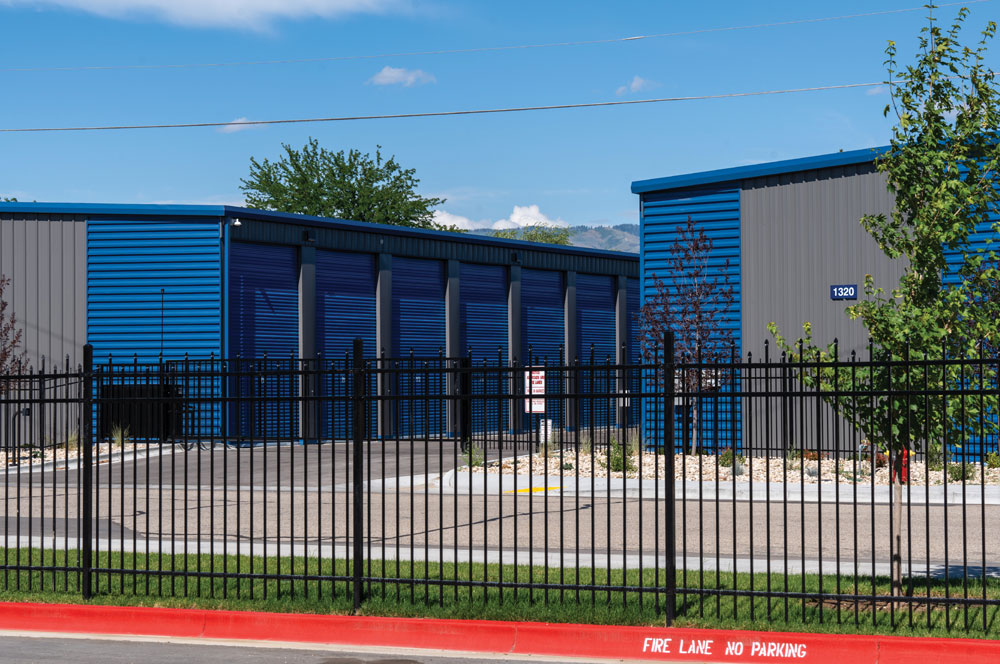

A costly surprise that showed up along the way was a tilted concrete structure that had to be reinforced with columns placed on the outside, creating a nice feature that would eventually “help define an entrance on the side of the building,” as the team found the east section of the construction required customers to go through quite a bit of leg work to get to because the original main entrance was located all the way on the other side of the building.
The objective of the new entry was to allow customers easier access to their units, although it also ended up creating a new fire and life safety exit—the biggest concern the city had with the reformulation. This feature was the most substantial change they made to the original building, alongside other “minor cosmetic work to polish up the appearance,” such as new signage, a power wash, and the painting of the east side due to the new storefront entrance.
Storelocal Storage has been an early adopter of the Nokē Smart Entry system and has a close working relationship with Janus International/Nokē that has spanned many years. The Osbornes had already worked with Janus on a previous conversion and mentioned the immense amount of experience and knowledge they gained about what it takes to do a conversion and how to overcome many issues that inevitably appear along the way during the experience.

The pandemic heavily affected the unit mix configuration of this new project, as the demand for storage increased and the needs changed quickly. “Creating multiple on-site changes, adding units, and adding buildings in the parking field were additional revenue streams and challenges.” However, it all worked out in the end, and the facility ended up with 11 entry points and over a thousand units.
Janus provided doors and hallways, Nokē Smart Entry for all roll-up doors and entry points onto the property and into the building, and Moveable Additional Storage Structures (MASS) in the parking field for single-story drive-up units that are outfitted with Nokē One latches on the doors for a modern, automated tenant experience.
The entire conversion took three years due to COVID-related delays in the process, which was an entire year longer than the original estimation. However, the project was an exciting challenge for everyone involved from the start, as “the building had sat vacant and needed a meaningful repurposing. These types of projects energize the area with new life and vitality and do not let the neighbors have an eye soar for potential years to come.”




For Lance Watkins, founder and CEO of Tenant Inc., the power of their system lies in the possibility to pick and mix different software to bring the best tailored experience and solution for facilities. Much like with Microsoft, you need a package with Word, Excel, PowerPoint, and more to get the best experience and solutions, and Tenant’s various offerings all work together to meet demands and overcome issues self-storage operators experience.
The company’s property management software, Hummingbird, is probably the most prominent system at the Storelocal Storage Curtis facility, but all of Tenant Inc.’s software combined is the key to bringing the best experience and solutions to different issues, as “We need a full technology stack to operate our businesses.”
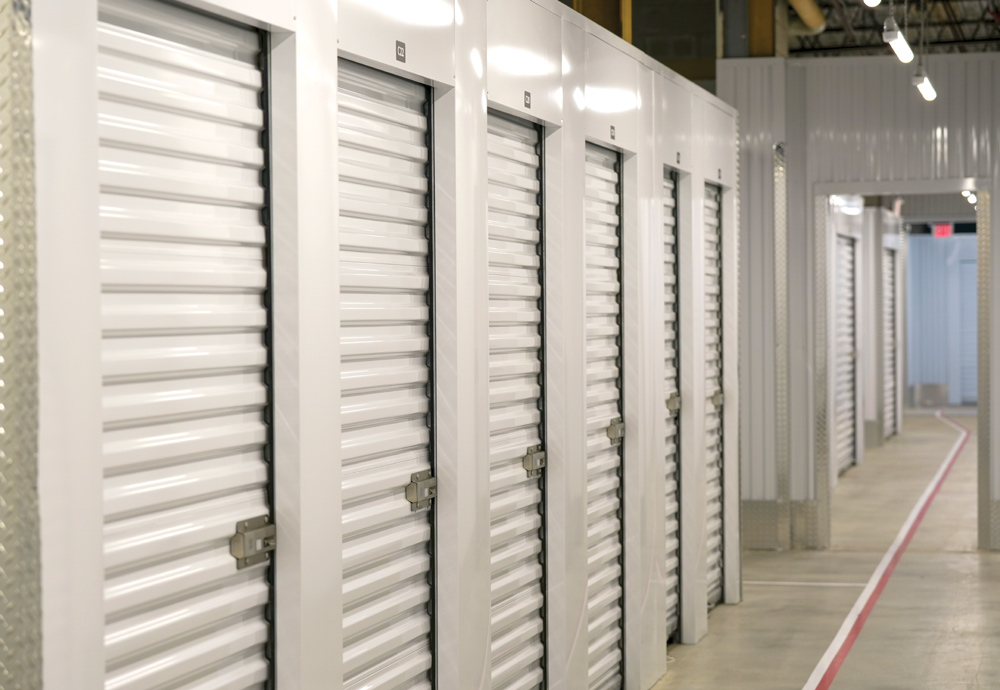
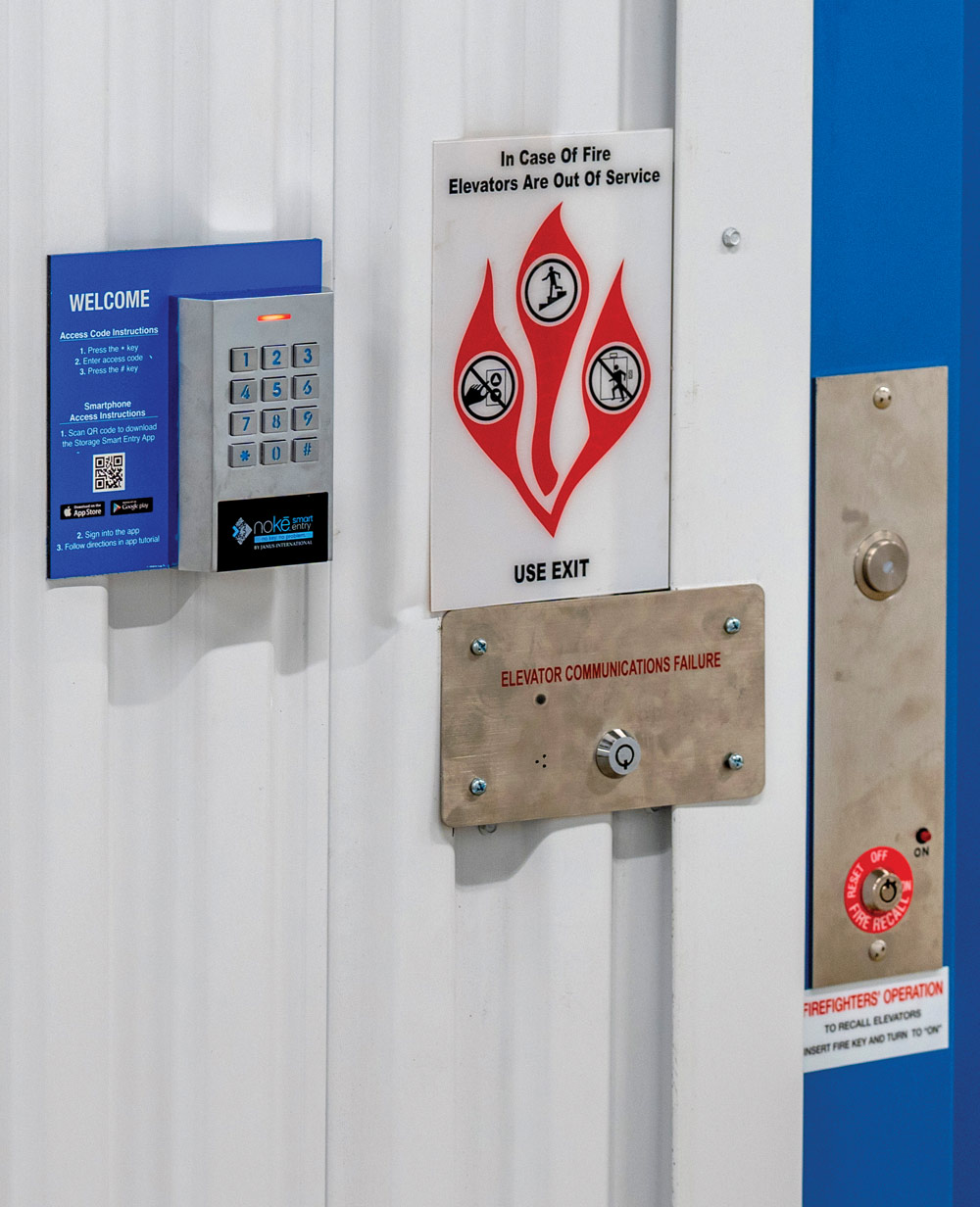
The entire process was well documented from the beginning, and the footage was turned into a YouTube video that played a great role in the marketing of the place as it managed to gather attention to the process itself, leaving many curious eyes wondering what the next step was going to be and how the project, once completed, would look.
Online strategies like “key coding and SEO for the location, were used to try to leverage the interest of the project into the marketing, which helped the grand opening.” Outside of traditional methods like ad spend, they also “focused their energy into creating organic and alternative ways to create attention and drive SEO to the location. On top of that, a big push to internalize and bring to the headquarters the sales process, as opposed to just on site or a random call center, which dramatically increased our close rate.”
As for the old-school marketing tactics, they took advantage of the recent increase in the influx of new residents moving to Boise from different cities since the beginning of the pandemic, which resulted in an attempt on the part of the city to create affordable housing, resulting in smaller living spaces, to send out flyers to several of the new different apartment complexes that are in the vicinity, as that is a big part of their target customers.
The result has been steady growth since its official opening back in July, especially for customers seeking a climate-controlled facility, which is by itself a big differentiator when it comes to nearby competitors.
Owner: Cedar Creek Capital
Management Company: Self Storage Admin
Builder: Forge Building Company
Architect: Chuck Tookey with Cedar Creek Architecture and Design
Door and Security Provider: Janus International/Nokē Smart Entry
Management Software: Hummingbird by Tenant Inc.
or storage facility owners, operators, and managers, one of the most crucial decisions impacting customer satisfaction and operational success is selecting the right storage unit options. A well-rounded facility often includes both climate-controlled and drive-up units, as each caters to distinct customer needs. Understanding the benefits of both options and knowing how to recommend the best choice based on customer requirements, item types, and storage duration will help build a competitive facility that attracts and retains clients.
Climate-controlled units are beneficial for sensitive and high-value items. Facility operators should promote climate control as the optimal choice for customers who will be storing:
- Electronics – Electronics like computers, televisions, and gaming systems are susceptible to temperature extremes. Exposure to excessive heat or cold can cause electronic components to malfunction or even permanently fail.
- Wooden furniture – Wood is especially prone to expanding and contracting with temperature and humidity changes, which can lead to warping or cracking. Antique or high-value wooden furniture items require a stable environment to prevent damage over time.
- Documents, photos, and artwork – Paper-based items and photos can become brittle, fade, or even develop mold in unsuitable conditions. Artworks, especially oil paintings or watercolors, can deteriorate if not stored in a climate-controlled setting.
- Clothing and fabrics – Delicate materials like silk, lace, and leather can degrade when exposed to high humidity. Special garments, such as wedding dresses or vintage clothing, retain sentimental and financial value, making climate control essential for preservation.
- Musical instruments – Instruments made from wood, such as pianos, violins, and guitars, are highly sensitive to temperature fluctuations. Climate control prevents potential warping, cracking, or string damage that can affect sound quality and structural integrity.
ADVANTAGES
- Temperature regulation – By maintaining a consistent temperature range, climate-controlled units protect items from damage caused by extreme heat or cold. This feature is crucial in areas where seasonal weather varies widely, such as freezing winters or hot, humid summers.
- Humidity control – Regulated moisture levels prevent mold, mildew, and rust—common risks in areas with high humidity. Humidity control also protects items made from particleboard, leather, and fabric, which are particularly vulnerable to moisture.
- Protection for long-term storage – Climate-controlled units are ideal for customers planning to store items for extended periods. They provide security for heirlooms, collectibles, or valuables, preserving them over time without degradation.
Drive-up units are best for large and/or durable Items. Facility managers can recommend drive-up units for:
- Vehicles – Cars, motorcycles, and boats, especially those stored in the off season, are well suited for drive-up units. These spaces offer a safe, enclosed space that shields vehicles from outdoor elements and protects against theft and vandalism.
- Tools and equipment – Durable items like lawnmowers, power tools, and other outdoor equipment are less vulnerable to temperature variations, making drive-up units a cost-effective choice for storing these items, especially for shorter durations.
- Outdoor furniture – Patio sets, grills, and other seasonal outdoor items can withstand moderate temperature changes, so customers can store these items in drive-up units without concern for environmental fluctuations.
- Business inventory – Drive-up units offer a cost-effective storage solution for small business owners. With accessible, larger spaces, drive-up units allow businesses to store inventory, equipment, and supplies that aren’t sensitive to climate changes, such as office supplies or non-perishable goods.
ADVANTAGES
- Convenient access – The main advantage of drive-up units is convenience. Customers can park directly in front of their storage space, saving time and effort when moving items in and out. This is particularly valuable for businesses that need regular access to stored inventory or equipment.
- Cost-effective – Without the added expense of climate control, drive-up units are typically more affordable, which can appeal to budget-conscious customers storing items that aren’t temperature-sensitive.
- Spaciousness – Drive-up units come in a variety of sizes, accommodating larger items like appliances, furniture, and even vehicles. They provide flexibility for customers with bulkier storage needs.
- Type of stored items – Climate control is best for customers storing high-value, delicate, or irreplaceable items like artwork, electronics, and antique furniture that require protection from environmental factors. Conversely, durable items such as tools, vehicles, or seasonal outdoor equipment can be safely stored in drive-up units.
- Storage duration – The length of time items will be stored also plays a significant role. Climate-controlled units are ideal for long-term storage, especially in climates with extreme weather changes, as they provide stable conditions that protect items over time. For short-term storage or items needing frequent access, a drive-up unit may be more practical.
- Access frequency – Drive-up units are perfect for customers needing regular access to their belongings. Businesses, for example, may require easy accessibility for inventory. Climate-controlled units are generally indoors and often less accessible, making them suitable for items that do not need frequent retrieval.
- Location and climate – In areas with mild, stable weather, drive-up units may meet most customers’ needs. However, in regions with extreme temperatures or high humidity, climate control is essential for safeguarding belongings.
- Budget – Since climate-controlled units involve higher operational costs, they are priced accordingly. Customers storing less sensitive items can save on storage costs by choosing drive-up units.
- Shelving – Encourage customers to install shelving units to better organize items, particularly in drive-up units where space efficiency can help prevent items from touching the floor.
- Packing materials – Recommend sturdy boxes and proper packing materials to customers. For climate-controlled units, it’s advisable that items are clean and dry to prevent moisture buildup, while drive-up units should ideally have items stored in water-resistant containers.
- Regular inspections – Advise customers to periodically check their stored items, especially in drive-up units, where environmental exposure can sometimes lead to issues like leaks or pest invasions.
- Easy access – Suggest that customers place frequently accessed items near the front of the unit for easy reach, minimizing disturbance to other belongings during retrieval.
Offering both climate-controlled and drive-up units can help diversify your facility’s appeal to a wide range of customers. Climate-controlled units serve customers with delicate, high-value items requiring stability and protection, while drive-up units provide an affordable, convenient solution for larger, durable items. Understanding each unit’s unique benefits enables you to make informed recommendations, helping customers choose the right storage option for their specific needs and budget. Additionally, implementing practical organizational tips within both types of units can enhance the customer experience and maintain high standards across your facility.
By marketing your facility as an accessible, customer-centric storage solution, you can attract new clients and retain satisfied customers, building a reputable storage business that meets a variety of needs across different market segments.
Groundbreaking Development

ithin the sprawling urban desert of Phoenix, Ariz., a place MSM crowned “the capital of self-storage” just over a year ago, the bold look of the new Wentworth Property Company is turning heads.
Managed by CubeSmart and located at 2045 W. Northern Avenue, the facility features a unique sloped roof, large bay, and a professional management space. Only two stories but appearing taller, it offers 92,000 net rentable square feet through 718 climate-controlled units, 24/7 surveillance courtesy of PTI Security Systems, and a solid labyrinth of doors and hallways by Janus International.
The facility was designed by Robert Brown Architects, with Campbell Development handling construction. The site’s L-shaped layout posed a challenge; by creating a unique drive-thru tunnel, the facility was able to overcome this and enable tenants to load and unload inside the AC instead of under the desert sun.
The property, which opened on Oct. 20, following a 15-month build, may be new to the neighborhood, but management has already partnered with 19North Community Alliance, a non-profit organization that works to build safe communities. And that’s exactly the type of environment this facility provides.








ow do you plan for the unexpected? Think back to December 2019. Any plans that you made for 2020 went out the window just a few months later. Who knew that would happen? That’s the problem with planning in this day and age. We don’t know what’s going to happen tomorrow, let alone in a few months.
It’s challenging to keep up with the times when the times are constantly changing! Nevertheless, any astute business owner or manager needs to plan. If you fail to plan, you plan to fail! The key is to set long-term goals for the year, as well as month-to-month goals. Therefore, if something happens, you can easily pivot, make changes, and adapt to what’s going on and how it affects you. Plus, when it comes to marketing, keep track of your analytics monthly so you can adjust your plan based on seasons and what’s working and not working.
Next, set your income goals for the next year. Then, break that down into 12 months. They probably won’t be the same for each month, especially if your location is seasonal. Naturally, this will help you start thinking on that month-to-month basis.
When you create SMART goals, each one must be specific, measurable, attainable, relevant, and time-bound. That way, you set them in small bites that you can handle. They’re doable and you know if you hit (or missed) the mark.
At the end of each month, when you look at your sales figures, marketing analytics, and insights, you’ll be able to tell if your efforts were effective. Consequently, set goals for the next month based on your data.
Their August 2024 algorithm update demotes any website that is not 100 percent optimized for the search engine (that is, with poor search engine optimization [SEO]).
There are several things you can do to optimize your website. Make sure your page titles and meta descriptions are keyword centric and have the location/area that you serve. Your address and phone number should be the same everywhere you have a listing online, including your website and Google Business Profile. Add special amenities like air-conditioned units, mobile, RV or boat storage, etc.
You need to create fresh content on a regular basis. That means blogging or videos. Tell stories of the area, some of your stand-out customers, answer questions, solve problems, and/or alleviate your target market’s pain points. Make your videos personable with someone talking and explaining. YouTube is the second-largest search engine (after its parent, Google). Videos come up in Google searches and appear on your GBP.
How often are your competitors publishing content? Based on that, you can plan your content marketing. You need to create better content and more frequently.
Do keyword and competitor research and optimize your pages and blogs. That’s called On-Page SEO. Share your blog articles and videos on your social media. Doing that creates legitimate backlinks. If you’re still having trouble ranking for your local keywords or have a formidable competitor to contend with, visit my website (AZSocialMediaWiz.com) and schedule a Zoom call for a free SEO checkup.
- Experience – Here’s where you add your experience in the topic or field.
- Expertise – Does the material showcase the writer’s expertise? Does the author have a high level of knowledge or skill?
- Authority – Is this a topic that is often covered on this website? Is this the go-to person on this subject? Also, make sure the article has not appeared on another website. The first to publish has the authority.
- Trustworthiness – Is the information provided correct? Can you trust it? Are they legitimate?
People buy from whom they know and trust.
In case of an emergency, deal with the critical issues first, but don’t forget your social media. Customers and potential customers will be looking for information to see if you’re open, how the facility faired, even how you can help them store their belongings while they rebuild or recover.
If your area is prone to natural disasters, become known as a community helper by working with the local agencies. In fact, that’s something to blog about! How have you helped during tough times in the past? What tips can you give people to prepare? Think about the lives of your customers and target audience and provide assistance.
For instance, write a blog about how wise it is to have renters insurance, which may cover the cost of storing your belongings if you are displaced. I wish I had known that before there was a fire in my apartment building.
If you’re part of a corporate chain or franchise, look to your headquarters for their emergency preparedness instructions and make sure they are up to date. If you’re an independent facility, you need to have an emergency policy. Work with your local first responders to determine what’s best for your area.
Follow your local police and fire departments on social media to be alerted in the event of an incident or emergency.
Ultimately, the steps for effective marketing don’t change.
Nine Ps Of Social Media Marketing
Perspective
Purpose
Planning
Participation
Posting
Perseverance
Patience
Giselle Aguiar, founder of AZ Social Media Wiz in 2011, is a social media content and digital marketing consultant and trainer. She’s been involved in internet marketing since 1995. Today, she specializes in strategic and tactical planning, social media setups, 1:1 digital marketing training and coaching, SEO copywriting, and WordPress websites. She is a trainer and mentor for the Arizona Commerce Authority as a founding mentor of its Digital Academy. She is also an avid blogger and lives in the Historic Roosevelt District of Downtown Phoenix, Arizona. Visit her website, AZSocialMediaWiz.com, for more information.
Research Equals Returns

hen I transitioned from real estate into self-storage 12 years ago, I was a complete newcomer to the industry. My only real experience was personal: I spent a significant amount on a storage unit to keep belongings I couldn’t part with at the time. Little did I know that this same reason would be echoed by many of the tenants I would later encounter as a self-storage manager.
People use self-storage for countless reasons, including divorces, relocating due to fires or natural disasters, downsizing, expanding into larger homes, coping with losses, and simply running out of space for hobbies, collections, or “toys.” I’ve rented to entrepreneurs needing space for inventory, employees needing extra room for company assets, charities storing donations, and even schools looking to store theater props. The list goes on and on. At some point, almost everyone finds themselves in need of extra space, which is precisely why self-storage has become such a compelling sector for investors.
If you search “top real estate sectors to invest in,” self-storage consistently appears among the top five. The beauty (and irony) of this industry is that demand remains steady no matter the state of the economy. When times are good, people acquire more and need extra storage; when times are tough, they’re reluctant to get rid of their hard-earned possessions, so they store them.
Each year, I speak with many people interested in self-storage investment. Most come from single-family or multifamily residential development, retail, or commercial real estate. When I ask why they’re drawn to self-storage, their answers are consistent: less daily interaction with tenants, lower maintenance issues, recession resiliency, cash flow potential, and scalability. Many even run the numbers and see it as a highly profitable investment. However, upon closer examination, when I ask about the research behind their projections or how they determined their anticipated income, many admit that their primary sources are the internet, generic proformas from other business types, and casual observations of nearby facilities appearing full.
This approach—relying solely on anecdotal insights and cursory advice—is a recipe for disaster. Investing in self-storage, like any business, requires a solid foundation of education and strategic planning. Just as you wouldn’t build a house based on minimal knowledge and assumptions, you can’t expect a self-storage facility to succeed without proper research. It all starts with education, education, education!
Starting in self-storage investing can feel overwhelming, but you’re already taking a great first step by reading this article. Education is key, and the more you learn from a variety of sources, the better equipped you’ll be to make informed decisions. Here are five essential steps.










A well-executed study provides investors with a realistic picture of the commitment involved, enabling informed decision-making and minimizing unexpected costs. This foundational step is essential for laying the groundwork for a successful project.
When interviewing companies to conduct your feasibility study, here are the essential questions to ask and the reasoning behind them. Remember, you need a thorough feasibility study, not just a basic desktop market analysis.

How long have you been conducting feasibility studies?
Look for a company with solid experience in the self-storage industry, as they’ll understand what it takes to make a facility profitable and sustainable.

How many feasibility studies do you complete each year?
Be cautious with companies that produce high volumes of studies, unless this is their core focus with a dedicated team. Ideally, you want someone who is exceptionally thorough and treats your site with care and attention, as though their own investment was at stake.

Will this be a full feasibility study or just a desktop market analysis?
A full feasibility study assesses the viability of a self-storage facility in a specific location, considering factors like market demand, competition, costs, and potential profits. In contrast, a desktop market study is a quick, preliminary review based on readily available data, lacking on-site research. Always choose the comprehensive feasibility approach to avoid missing critical insights.

Do you evaluate comparable facilities (comps) in person, or do you rely solely on online data?
Select a company that will physically shop competitors within the defined market radius (typically five miles for traditional storage and wider for RV storage). A physical review captures crucial details that online data might miss, ensuring accuracy in your competitive analysis.

What specific information do you provide about each competitor in your analysis?
You should expect a detailed account, including in-person photos, key features, estimated occupancy, both in-store and online rates, property class, operating style (remote or on site), customer service quality, property upkeep, mandatory fees, additional services, and operating hours. This detailed data offers a complete competitive landscape picture.

Do you include a detailed proforma with the feasibility study, and how do you determine the unit mix for projecting numbers?
A robust proforma should outline every foreseeable expense, not just lump sums for utilities or management. Look for a company that tailors the unit mix to optimize lease-up potential, not just to make projections look appealing. If working with a management company, they should recommend a mix likely to achieve the highest returns based on market demand, rather than arbitrary or inflated figures.

What additional services or insights are included in the price?
Clarify whether the service includes site design, estimated construction costs, and if travel expenses are included.

How long will it take to complete the study, and what are the key stages or milestones in the process?
Plan ahead; a comprehensive feasibility study can take 60-plus days. Also, negotiate for extensions in your due diligence period to avoid timing constraints.
Armed with insights from a detailed feasibility study, you’ll be well-equipped to make informed decisions, navigate potential challenges, and position yourself for rewarding returns in the self-storage sector. This initial groundwork is invaluable as you take your first steps in self-storage investing, paving the way for a prosperous journey ahead.

s part of the self-storage industry’s commitment to giving back, StorageGives has become a beacon for positive change. By supporting essential causes in four primary areas (water, children, veterans, and medical care), StorageGives offers an opportunity for self-storage professionals and customers alike to make a meaningful impact. Through direct partnerships with eight dedicated charities, StorageGives connects industry generosity to vital resources that transform lives.

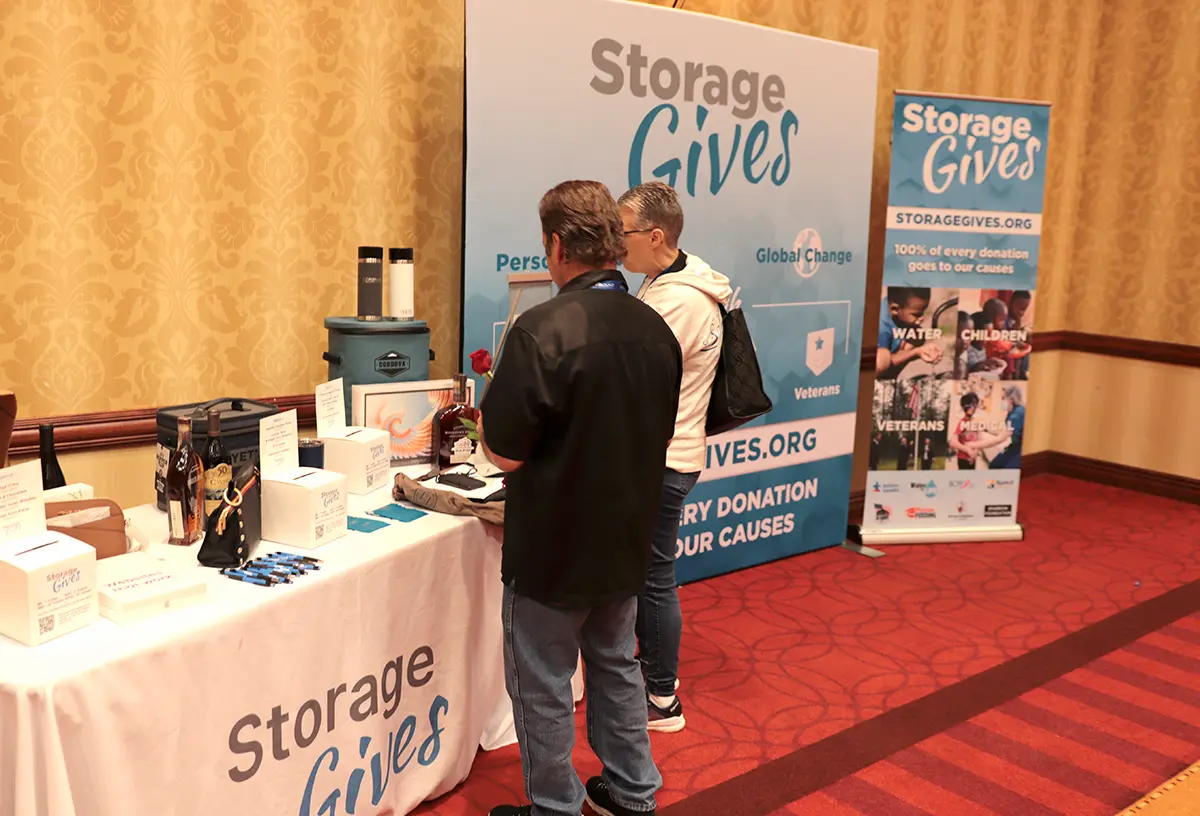
Each area represents a different facet of community need, but together they form a holistic approach to supporting the wellbeing of individuals across the world.
- Auction Donations – Storage operators who utilize StorageAuctions.com can designate a percentage of their auction proceeds to StorageGives. This seamless process allows operators to turn regular business activity into impactful contributions.
- Direct Donations – Anyone can make a direct donation to StorageGives by visiting StorageGives.org. With 100 percent of donations going directly to the partnered charities, donors can rest assured that their contributions are fully utilized for these vital causes.
- Fundraising Events – Throughout the year, StorageGives hosts fundraising events at various self-storage association conferences. These events provide additional opportunities to participate, build awareness, and drive further contributions for these essential charities.
In addition, Giving Tuesday, the global movement dedicated to giving back, offered a chance to support StorageGives. Each year, Giving Tuesday, which falls on the Tuesday after Thanksgiving, turns the spotlight on giving from a thankful heart and encourages charitable donations to worthy causes. StorageGives offers a perfect opportunity for self-storage professionals, businesses, and customers to join forces and make meaningful contributions to water, children, veterans, and medical charities. Whether through personal donations or rallying with colleagues and customers, your support helps StorageGives make a lasting impact in these vital areas.
The opportunity to give back this holiday season extends beyond Giving Tuesday as well; for example, donations can be made to StorageGives in lieu of presents in gift exchanges.
This holiday season, we encourage you to give generously. While special events create opportunities to gather and support, you don’t need an occasion to make a difference in the lives of those around you. StorageGives is an inspiring example of how the self-storage industry can drive positive change, proving that philanthropy and business can go hand in hand. By supporting StorageGives, operators and individuals have a direct line to give back to their communities.
To learn more about how you can make a difference, visit StorageGives.org and join us in supporting these essential causes this holiday season and beyond. Together, let’s transform business success into lasting social impact through the power of giving.

s the holidays approach and you are scurrying around trying to find the perfect gift, don’t forget the gift of education. What a valuable present to offer your staff that sets them on a path for their future. From the Certified Self Storage Management Course (CSSM) to educational sessions at national and state conferences, there are so many opportunities for both you and your staff to learn new skills.
Your managers will gain the knowledge they need to perform though the CSSM program, which is an intensive course providing a solid foundation for self storage management. Taken on their own time and at their own pace, the course includes 15 sessions that lay out the most important aspects of being a self-storage manager. Show your managers you value them by setting them up for success in the new year.
Giving your staff educational time outside the office is also a great gift. As the SSA embarks on our 50th anniversary in 2025, we have dozens of national and state association conferences and events that provide the topics and guidance that will make your employees more efficient and driven.
We kick things off with SSA’s Spring Conference & Trade Show in Orlando March 12 to 14. There will be three days of educational opportunities designed for operators, managers, and staff, and there will also be plenty of time to network and discuss how other owners and managers are planning.
Don’t forget yourself as you give this season. Attend one session of the SSA Valuation & Acquisition Course offered each year in the spring and fall. It’s designed for owners, senior financial staff, and investors who are seriously interested in property acquisitions, repositioning a property in a market, and/or renovating or expanding a facility. Keep an eye out for details on the 2025 courses and treat yourself.
Are you feeling generous this holiday season? Give to the SSA Foundation Scholarship Fund. The SSAF awards scholarships to deserving employees of national SSA members and their families. Scholarship awards range from $2,500 to $10,000. Since its inception, the program has awarded over $1 million to students affiliated with the storage industry. Visit the SSA website (www.selfstorage.org) for more information on how to contribute.
The season of giving is upon us, and SSA is here to help you give the gift of education in the new year.

t’s hard for me to come to terms with the fact that I’m old enough to have been doing anything for 30 years, but the calendar doesn’t lie. Next year I’ll be 60, and that will mark my 30th year in the self-storage industry.
I fell into it by chance. I took a job as a management trainee for a metal building company that had several divisions; they offered me the opportunity to spend six weeks or so in each division to see if I could find something I like. If so, that’s where I could settle. Their self-storage division was the third one I spent time in. I liked it, and it stuck.
I had only worked there a month or so when an old timer pulled me aside and gave me some advice. He said, “Son, this self-storage business is a lot of fun and it’s good now, but don’t get used to it. It’s so overbuilt that it can’t last much longer.” Not knowing anything about anything, I thought “OK, ride this as long as I can; I was looking for a job when I found this one.
That was 1995. Knowing what I know now, the square feet per capita couldn’t have been more than 2. I’d been doing the self-storage thing for about six months when I went home to see my father. I explained my job to him: We built storage garages that people rented for their extra stuff. He didn’t understand the concept of extra stuff or why someone would pay for a place to keep it. Born in 1925 and raised on a 500-acre cotton farm in central Texas, he was the youngest of nine kids—all of whom lived with their parents in a house about one-third the size of a starter home today. He wished me success but gave me some advice: “If I were you, I would have a plan B.”
For the last 20 years I have been with SBS Construction. I’ve worked with and for some of the best people I’ve ever come across; we’ve ridden the ups and downs of the storage cycles, including some really high peaks and some pretty low valleys. One thing has remained constant: Self-storage is a good business. I could not even guess how many facilities we’ve built (I really should know that number), but let’s say for discussion it’s 300. It’s probably more, but that’s as good a number as any. I keep up with our owners as best I can, and none of these facilities have failed, to my knowledge, so if this was a college football team, self-storage would be 300-0. I don’t know how long this ride will last, but if I had to guess, it will be long after I am gone. For now, I am just thankful to be a part of a really good industry with really good people.
Remember: No plan B!




